
1
2
4 Forewords
前言 14 Timeline (1906 - 2019)
時序 16
1906: A Child Emperor 天子誕生
20
1919: Mentor to an Emperor 西學蒙師 30
1932: The Puppet Emperor
34
1945: The Emperor & the Interpreter
42
1946: A Testament to a Friendship
The Red Fan
50
1950: A Parting Gift: The Watch
56
Farewell Forever
58
An Emperor's Eye-View of China 御筆遺稿
64
1959: A New Citizen
68
3
傀儡皇帝
獄中翻譯
扇中摯情
饋贈名錶
後會無期
新中國人
考據報告 78 Biographies 簡介 87 Acknowlegments 鳴謝
The Research Journey 研究之旅 73 ArtDiscovery Report
Foreword
by Aurel Bacs Senior Consultant, Phillips in Association with Bacs & Russo
Quite literally, the number of watches in the world are countless and by today also the number of collectors. And equally, the number of reasons why collectors search for their impossible-to-find collector’s watch: sometimes it is the mechanics, sometimes the aesthetics, the rarity, the condition, and in many cases, all of them and more. Who can wholeheartedly say when picking up a vintage watch that they have never, quite literally, asked the watch “if only you could tell me your life”. And to those who wondered where and with whom a watch has been during the past decades, including myself, provenance and the human histories behind a particular watch are another key-reason to be attracted to this world.
Throughout the years, when handling watches with a history, I caught myself thinking of the love stories they must have witnessed such as with the Joanne Woodward Paul Newman Daytona, Hollywood history with Marlon Brando’s bezel-free GMT-Master worn in Apocalypse Now, sports history with Jack Nicklaus’ gold Day Date, and the course of history such as Bao Dai’s iconic reference 6062, to name a few. Through research in archives, especially when talking to friends and families of the previous famous owners, but also scholars and witnesses, one builds a relationship with those who wore these watches and in a certain way, starts getting to know them.
Puyi’s spectacular Patek Philippe reference 96QL in platinum with full calendar is no exception and over the course of the last three years I have started to discover, once again, the most irrational but by far most interesting and emotional aspect of watch collecting: the histories they can tell us, the friendships they stand for, and all the highs and lows of mankind. The present Calatrava has seen an imperial lifestyle as well as witnessed captivity, indescribable luxury and hardship, but most importantly, the friendship and respect that Puyi and Permyakov built in a matter of less than five years. By all means, I do not wish to sound overly dramatic, nor will I recite John Lennon’s “Imagine”, but throughout the journey with research lasting into late nights and weekends, I was often reminded that the two men could not have been more different with their opposite upbringing, languages, religions, politics and belonging to different nations, yet they became friends and respected each other until the time they parted in 1950. This watch has witnessed their relationship and I often caught myself asking this Patek Philippe “if you could only tell me your story”.
Whatever to you the most captivating aspect of this iconic museum-quality wristwatch is, I wish you endless hours of deep-diving into history when studying the catalogue that you are holding in your hands and hope that you experience the same indescribable emotions when discovering the watch, its history and the friendship between the two men as we experienced while researching it.
‘One builds a relationship with those who wore these watches and in a certain way, starts getting to know them.’
Aurel Bacs
前言
世上名錶浩如煙海,如今藏家數量也不相伯仲。同樣,鐘錶愛好者 對各自追求的夢想藏錶也有千萬情結——有的渴求機械超卓,有的 鍾情美學、珍稀、品相等優越條件,但更多時候,眾人理想中, 總有一應俱全,甚至錦上添花的絕世佳品。當古董錶盈於掌心,
誰能誠心保證未曾暗自私語:「假若錶能帶我窺探它的過去,那有 多好呢。」我和許多沉迷鐘錶藝術的同好一樣,對一枚手錶的歷程、 所涉的人和事,一概深感著迷。藏品來源、藏家故事,往往是一件時計 精品何以令舉世趨之若鶩的終極原因。
我鑒賞鐘錶多年,每當經手來源深刻的錶品時,總對它所見證的 故事產生無限遐想,比如影壇頂級銀色夫妻鍾安.活華(Joanne Woodward)及保羅.紐曼(Paul Newman)的「地通拿」(Daytona)
所銘刻之不渝愛情;馬龍.白蘭度(Marlon Brando)在《現代啟示錄》
佩戴無錶圈「GMT-Master」所烘托的好萊塢盛景;傑克.尼克勞斯 (Jack Nicklaus)金色「Day Date」所編織的體壇神話;越南保大帝經
典「型號6062」所敲響的歷史回聲。追源溯始的過程十分寶貴,尤其是 訪問藏家親友、咨詢學者、搜索時人等各方互動,讓我們仿如置身 歷史時刻,與諸多名人錶主隔空對話。
溥儀超絕的百達翡麗「型號96QL」鉑金全曆腕錶,固然是一次蕩氣迴 腸的溯源之旅。過去三年,我埋首在鐘錶鑒藏史上最令我拍案稱奇, 又最為激蕩人心的一次奇遇。一件時計巨作,同時見證歷史、譜出友 誼,走過人間的高山低谷。這枚經典雋永的「卡拉卓華」(Calatrava), 承載溥儀從一朝天子到身陷囹圄、由享盡帝皇榮華到飽嘗落難辛酸 的傳奇章節。但最為重要的是,它印證著溥儀與別兒面濶夫五年間 建立的友誼和尊重。即使實情的確如此峰迴路轉,我也無意渲染戲劇 色彩,更不會濫調式引用約翰.列儂(John
Lennon)《Imagine》
的經典名句。但無數通宵達旦、廢寢忘食的苦研日子裏,我不時領悟 到兩個出生、成長、語言、宗教、政見和國籍迥異的人,原來可以如此 親近,成為朋友,相互敬重,直至故事中兩位主角1950年分道揚鑣為 止。每當沉思這枚百達翡麗,我不禁幻想:「假若它能帶我窺探 其過去,那有多好呢。」
無論這枚曠古絕倫的頂級名錶對您而言洵為何物,我都希望閣 下能夠細閱手中圖錄,沉浸在珍藏記載的壯闊歷史,在認識腕錶、 其時代背景,以至兩位歷史人物的寶貴情誼之時,能像我們在經年 累月的求索旅程一樣,體驗到筆者溢於文辭的情感思潮。
5
富藝斯鐘錶部資深顧問
「我和許多沉迷鐘錶藝術的同好一樣, 對一枚手錶的歷程、所涉的人和事, 一概深感著迷。」
Foreword
by Thomas Perazzi
Head of Watches, Phillips in Association with Bacs & Russo, Asia
In 2019, when I received a telephone call in my Hong Kong office informing me of the existence of a certain Patek Philippe watch in platinum, I almost fell off my chair out of excitement. However, when the caller informed me of the provenance of this venerated model my initial excitement soon turned to become one of my most significant and memorable moments in my years as a watch specialist.
The watch in question was the Patek Philippe Ref. 96QL with triple date and moon phase in platinum. It came to Phillips accompanied by an antique red fan, a notebook carefully filled with personal observations, watercolour paintings, and a leather-bound edition of Confucius’s Analects. More auspicious and surprising was the provenance of this collection, being the one-time possessions of Aisin-Gioro Puyi, known throughout the world as "The Last Emperor."
One of the crucial conditions for Phillips to be entrusted with the sale of this watch was to provide iron-clad proof of the provenance of the watch and its accompanying artefacts. Thus, begun my mesmerising journey to a bygone era of unimaginable luxury of the Forbidden City, to a tumultuous and war-ridden China, and on to the Russian Far East, retracing decades of Puyi’s life to uncover the remarkable story of the watch and artefacts.
Three years on, after working closely with our team of specialists in scientific tests and historical research, I am proud to present to you our findings in this catalogue.Through the narratives of our different commentators, you will experience the momentous emergence of a new China, the lives disrupted and transformed by history. Most important, we will document a touching friendship that developed in spite of a vast divide in the cultural, racial and social backgrounds between the two main figures in this little-known story, one between Puyi and his Russian translator Permyakov.
I look forward to welcoming you to Phillips’ Hong Kong watch preview and auctions in May at our new Asia headquarters in Hong Kong’s West Kowloon Cultural District.
‘My initial excitement soon turned into one of the most significant and memorable moments as a watch specialist.’
Thomas Perazzi
彭博時
前言 彭博時
富藝斯鐘錶部亞洲區主管
2019年,我在富藝斯香港辦公室接到電話,得知一款百達翡麗鉑金腕 錶仍然存世,雀躍不已。當來電者向我訴述藏品的顯赫出處時,起初的 興奮頓成我的鐘錶鑒賞職業生涯中沒齒難忘的重要時刻。
上述時計正是本圖錄的主題:百達翡麗型號96QL鉑金腕錶,搭載全曆 和月相顯示,附有一把紙扇、一本筆記本、一組水彩畫和一本皮質封面的 《論語》。它們皆來自末代皇帝愛新覺羅.溥儀。
富藝斯受託拍賣這枚名錶附帶關鍵條件,考證手錶和上述藏品的來源, 追源溯本的過程亦由此而起:從紫禁城內鐘鳴鼎食的奢華盛世,到戰火 紛飛的動盪時代,再到苏联的東北角落。當中歷經溥儀幾十年的滄桑 人生,揭開了御用手錶和藏品的非凡典故。
在此期間,富藝斯團隊與科學考證專家和歷史研究学者通力合作。
三年飛逝,本人誠意呈獻我們的努力成果,一一收錄於本圖錄之中。
這通過不同對談者的敘述,閣下將會體驗到新中國的誕生為不少人士 帶來深遠改變,在文化、種族和社會的巨大差異下,溥儀和他的翻譯 別兒面濶夫(Permyakov)在亂世中仍然建立了深厚友誼,難能可貴。
本人誠邀閣下在五月蒞臨富藝斯位處香港西九文化區的亞洲新總部, 到訪香港鐘錶拍賣和預展,欣賞末代皇帝的曠世遺珍。
7
「起初的興奮頓成我的 鐘錶鑒賞職業生涯中 沒齒難忘的重要時刻。」
Foreword
by Wang Wenfeng
Aisin-Gioro Puyi is a unique figure in history. From the last emperor of imperial China, to a puppet ruler of Manchukuo, to a war criminal, and eventually to an ordinary citizen, there is hardly another example in history, whether in China or elsewhere. Puyi's unparalleled story itself is an epitome of historical changes in China during the first half of the 20th century. It is such uniqueness of Puyi’s life that has drawn enormous attention and enthusiasm for his study.
In 1982, the Palace Museum of the Manchurian Regime, an institute specialising in Puyi’s studies, reopened. During the restoration of the Palace, which is where the museum was situated, an interview project with members of the Aisin-Gioro family and witnesses of the related histories began. It was this year that I graduated from university and landed a job at the museum, where I became very passionate in understanding and researching Puyi. It was a rare opportunity to be involved in interviewing members of Puyi's family relatives and the concerned, all of whom were still alive. I interviewed Pujie, Runqi, Puyi's second, third, fourth and fifth younger sisters, as well as his nephews including Yuyan, Yuzhan and Yutang, his personal attendant Li Guoxiong, and his wives, Li Yuqin and Li Shuxian, who were both alive at that time. The conversations allowed me to learn about many interesting stories that had never been revealed to the public. After years of studies and research, I conceived the book The Last Emperor Puyi and National Treasures, a true representation of the secrets and stories concerning Puyi and national treasures
When I saw the collection of artefacts, I recalled some of the details of the interview, such as Puyi's platinum calendar watch. Yuyan vividly recalled, "I was loyal to Puyi during our time in the Soviet prisons, so he rewarded me with a calendar-embedded platinum watch. Right before we were extradited by the Soviet Union to China, our belongings were inspected. Puyi whispered asking if I still have the watch, I confirmed it was with me. When I gave it to Puyi, he turned around and handed it to the Soviet interpreter, Permyakov, who was inspecting us."
Li Guoxiong also mentioned how he repaired Puyi's glasses and camera while in the Soviet camp, and how he was asked to take apart the watch and remove the surface of the dial to check if it was made of platinum. Regarding the manuscripts of Puyi, Runqi's recollections can be evidence. ‘I am Puyi's brother-in-law on two levels, one as his wife’s younger brother, another as his third younger sister’s husband. Because of this strong tie, I have been living closely with Puyi since I was a child. Life in the Soviet Union was rather boring, I therefore killed time by drawing. As my drawing skill was better than Puyi’s, I drew and Puyi wrote inscriptions, and so we became a prolific duo. Looking back, it was such a fun time!’ The fan, which Puyi gave to Permyakov at the Tokyo Trial, is inscribed by the latter, the last emperor, in terms of handwriting, style and brushwork. Puyi’s calligraphic work has hardly survived to this day, to say nothing of the even rarer fan inscriptions. All these contribute to the high value of such unique examples.
‘When I saw the collection of artefacts, I recalled some of the details of the interview, such as Puyi's platinum calendar watch.’
Wang Wenfeng
Former Researcher of the Palace Museum of the Manchurian Regime, Founder and Former Secretary General and Chief of Staff of Puyi Research Society
王文鋒
前言 王文鋒
前偽滿皇宮博物院研究員 「溥儀研究會」前任秘書長兼辦公室主任
愛新覺羅.溥儀是一個特殊的歷史人物,他從中國封建社會最後 一個皇帝,到偽滿洲國傀儡皇帝,又到戰犯,最後到普通老百姓,這是 古今中外僅有的特例。溥儀自身獨特的人生經歷折射出了20世紀上 半葉,中國社會的歷史變遷。正是由於溥儀這種特殊性,激起了人們 對研究他的興趣和熱情。
1982年研究溥儀的專門機構偽滿皇宮博物院恢復了,在修復偽滿 皇宮舊址的同時,開始採訪愛新覺羅家族成員和歷史當事人知情者 的工作。也就在這一年,我大學畢業來到偽滿皇宮工作,對溥儀的了 解和研究,自然激起了我的興趣。參與了對溥儀家族成員及當事人 的採訪工作。那時候這些人都健在是難得的機遇。我多次採訪了溥 杰,潤麒,溥儀的二妹,三妹,四妹,五妹,以及溥儀的侄子毓嵒,毓嶦, 毓嵣,親信隨侍李國雄,和當時在世的兩位妻子李玉琴和李淑賢。通 過採訪,我知道了很多不為人知的宮中趣聞趣事。
經過多年的積累和研究,我寫了《末代皇帝溥儀與國寶》一書,真實的 再現了溥儀與國寶之間的秘密與故事。
當我看到這批文物時,便回想起了當年在偽滿皇宮博物院 採訪的一 些細節,比如溥儀那塊鉑金日曆手錶。毓嵒曾清楚地回憶道:在蘇聯 期間,由於我對溥儀的忠心,溥儀賞給我一塊鉑金日曆手錶,在我們 被移交回國前,蘇聯對我們攜帶的物品進行了檢查,溥儀小聲對我 說,那塊鉑金日曆手錶你戴了嗎?我說戴著呢,溥儀說拿過來,等我把 這個表交給溥儀時,溥儀轉身交給了正在檢查我們的蘇聯翻譯 別兒面濶夫。
李國雄也曾提到,在蘇聯期間,為溥儀修眼鏡,修照相機,以及拆卸 手錶,在錶盤上除下一些粉沫,檢驗是否是鉑金的情景。
關於溥儀那些手稿,潤麒的回憶可以得到驗證:「我是溥儀的小舅子, 還是他的三妹夫,由於這種特殊的關係,我從小就和溥儀在一起玩。 在蘇聯的時候由於閒著沒事可幹,我便隨手畫了些畫,我畫畫的手藝 比溥儀好,溥儀便在我畫得畫上添了許多字,這樣我們就合作完成了 很多作品,回想起來,真是好玩兒啊!」
溥儀在東京作證期間,寫給蘇聯翻譯別兒面濶夫的那幅扇面,無論 從字跡,風格,用筆等方面來看,確是溥儀所寫,溥儀流傳在世的墨跡 十分有限,扇面作品更是罕見,所以足見此扇面之珍貴。
9
「當我看到的這批文物時,便回想起了當年 偽滿皇宮博物院採訪的一些細節,比如溥儀 那塊鉑金日曆手錶。」
Foreword
by Russell Working Journalist
The old man said he had proof. He’d known the last emperor of China. Look, he said, right here. Georgy Permyakov cleared the clutter on his desk and opened drawers to produce a beautifully painted fan, a notebook filled with essays in Chinese writing, and a priceless platinum Patek Philippe calendar watch. The essays were interspersed with whimsical figures formed out of Chinese characters.
‘You know who drew these? Henry Puyi, the last emperor of China,’ Permyakov said, referring to Aisin-Gioro Puyi by his English name. ‘That fan, he inscribed himself.’
These items, along with a lovely series of watercolours by Puyi’s brother-in-law, formed a unique collection that Permyakov had held after the former emperor’s imprisonment in the Soviet Union from 1945-1950. The year was 2001, and my wife, Nonna, had tracked down Permyakov—then 83 years old—in the Russian Far Eastern city of Khabarovsk. We were there to interview him for an unrelated story. What we hadn’t anticipated was Permyakov’s connection to Aisin-Gioro Puyi—also known as Emperor Xuantong—who ascended the Dragon Throne as a toddler in 1908. The elderly translator had interpreted for Puyi and taught him the Russian language and communist doctrine. Permyakov’s artifacts revealed a unique relationship. He and Puyi knew each other as captor and captive, yet there was evidence of a friendship between the two men. Puyi inscribed the fan as a gift for Permyakov when the two were in Tokyo in 1946, composing a poem in Chinese.
Puyi ascended the throne in 1908 at the age of 2 (3 years old for norminal age). After he was ousted in Beijing, the Japanese installed him as ruler of the puppet state of Manchukuo. When the Soviet army entered China and captured him in 1945, he spent five years in Soviet Union.
A home without a phone
It was a roundabout path that led us to Permyakov. As freelance writers based in Vladivostok, we travelled widely in Russia, as well as other Asian countries. In 2001, after a visit to Permyakov’s former hometown in Harbin, China, we caught the train to Khabarovsk, an Amur River city of about 600,000 people. Nonna ran across Permyakov’s name while paging through bound volumes of old, yellowed newspapers, looking for information on a post-war trial of Japanese prisoners in the Soviet Union. She asked reporters at a local paper if the interpreter was still around.
They said sure. He doesn’t have a phone, they said, but write him a letter and leave it at the post office. He comes and picks up his messages there. If he’s willing to talk, he’ll reply. The next day Permyakov had left a note for us. The answer was yes. We found him in a dreary apartment block, but his bookshelves were crammed with a lifelong author and linguist’s books and papers.
Why no phone? Well, they were hard to get in Soviet times, and he never requested a line anyway. This was one of the ways he kept a low profile. Although he had worked for the NKVD—the dreaded secret police later known as the KGB—government agents followed him throughout the Soviet era. He feared for his life. Bald-headed and full of infectious enthusiasm, Permyakov was a former athlete, teacher, and writer who remained robust into his eighties. As I wrote at the time:
Georgy Permyakov is 83 years old and so fit he will spring to his feet and pound his stomach to prove he retains some of the strength of his youth as a boxer. He never drinks or smokes, speaks six languages, and sleeps on his balcony in Khabarovsk most nights, even in Russia’s winter. He chatters in Japanese and Putonghua and is a little gleeful when visitors stare blankly back.[1]
The former interpreter cheerfully watched my jaw drop when he told me of his connection to China’s last emperor. I had learned about Puyi from The Last Emperor, a 1987 movie directed by Bernardo Bertolucci. The film portrayed Puyi’s capture by the Soviet Red Army in 1945 as he tried to flee for Japan. What the movie left out was the years Puyi subsequently spent in Soviet Union, relying on Permyakov for all his interactions with his captors. Some subjects you report on have a way of staying with you. Permyakov was one of them. In late 2001 Nonna and I left Russia. After freelancing from Cyprus, we ended up in Chicago, where I worked for the Tribune. But we sometimes reminded each other of the charismatic old interpreter. On bitter winter nights, we marvelled at Permyakov’s habit of sleeping out on his balcony in Khabarovsk, where temperatures can dip as low as minus 40 degrees. But more than two decades after we had interviewed Permyakov, I was surprised when the old story resurfaced in 2022. A researcher for Phillips messaged me. They were interested in talking to us. Oh, and did we have any photos of Permyakov, Puyi’s watch, the fan, and the other objects?
After so many years I said we almost certainly did not. But I had underestimated my wife’s organizational skills. It turned out she had stashed away a bound volume of the negatives I had shot of Permyakov and his treasures. And so we find ourselves involved once again telling the story of one of 20th-century China’s most fascinating figures. The artefacts themselves whisper tales of a fallen dynasty and of the transformation of its ruler from ordinary to citizen.
And while the collection hints at the tumultuous forces that created modern China, it also tells a more human tale—of the comradeship of an emperor and the interpreter who gave him his voice and helped him find his way in a foreign land.
11 [1] “His Last Translator,” South China Morning Post, 6 May 2001, accessed at http://khv9923.narod.ru/His_last_translator.pdf, 6 April 2023.
‘You know who drew these?
Henry Puyi, the last emperor of China... that fan, he inscribed himself.’
Georgy Permyakov
記者
那位老人說他認識中國末代皇帝,還有證據在手。
他說:「看,就在這裏。」
格爾基.別兒面濶夫(Georgy Permyakov)清理桌上雜物,打開抽屜,
拿出一把繪畫精美的紙扇、一本寫滿中文的筆記本,還有一枚名貴的 百達翡麗Quantieme Lune鉑金腕錶。
筆記本穿插著由許多漢字組成的怪誕圖案。
「你知道這是誰畫的嗎?是亨利.溥儀,中國末代皇帝」,別兒面 濶夫說。亨利(Henry)的是愛新覺羅.溥儀的洋名。「那把扇由他 親自題字。」
這些物品,加上溥儀妻舅兼妹夫創作的一系列水彩畫,自他們被關押 在蘇聯之後,一直由別兒面濶夫收藏。
那是2001年,我的妻子羅娜在俄羅斯遠東城市伯力,找到年屆83歲 的別兒面濶夫。當時我們對他進行與本故事無關的採訪工作。
始料不及的是,別兒面濶夫竟然認識鼎鼎大名的末代皇帝溥儀。
這位年老的翻譯家曾為溥儀擔任翻譯,並教導他俄語及共產主義 學說。
別兒面濶夫的藏品,籠罩著一股耐人尋味的神秘氛圍。他和溥儀, 一個是監營工僕,一個是戰爭俘虜,本該對立敵視。但證據顯示, 兩人不但沒有結仇,竟還譜出友誼。1946年,溥儀和別兒面濶夫身在 東京。溥儀在扇面上以漢字題詩,作為送給別兒面濶夫的禮物。
1908年,年僅三歲的溥儀登極稱帝。溥儀被逐出紫禁城後,由日本關 東軍扶植為滿洲國的傀儡皇帝。1945年,蘇聯軍隊攻入中國境內俘虜 溥儀,把他關押在蘇聯監營,囚禁歷時五年。
離群索居:不用電話的老人
拜訪別兒面濶夫的路途十分崎嶇。我和羅娜同是駐海參崴的自由 撰稿人,周游俄羅斯以及亞洲各國。2001年,我們參觀別兒面濶夫在 哈爾濱的故居後,便乘搭火車前往人口只有六十萬、位於黑龍江及 烏蘇里江交界的小鎮——伯力。
某天,羅娜翻閱舊報紙,尋找戰後蘇聯境內的日本囚犯受審資料。
閱讀期間,偶遇「別兒面濶夫」(Permyakov)這個名字。她到一家當地 報館,查詢這位翻譯是否尚在人間。
記者們說:「他當然健在。你要找的人沒有電話,但可以寫信,拿去 郵局便是。他習慣到郵局取信。如果他願意和你交談,便會回信。」
翌日,別兒面濶夫給我們留下了一張字條。答案是:「願意」。
我們在一棟殘舊的公寓找到別兒面濶夫。他藏書極富,書架塞滿書籍 和論文。那是一位年邁作家兼語言學家的畢生閱讀匯集。
為什麼不安裝電話?電話在俄羅斯並不流通,而且他也沒有這個需 要。別兒面濶夫深居簡出,多年來保持低調。這位沉實老翁身經百戰, 曾受聘於斯大林時代的內務人民委員部(NKVD),即國家安全委員會 (KGB)、俗稱蘇聯秘密警察的前身。退休後他仍對人生安危保持 警惕,謹慎隱藏行蹤。
前言 羅素.華京
別兒面濶夫光頭,活力十足,曾是一名運動員、教師兼作家。即使年過 八十,依然聲如洪鐘,精力充沛。正如我當時記述:
別兒面濶夫年屆八十三歲,還是非常壯健。他健步如飛,還刻意捶打 小腹,以證昔日拳擊技術。他不煙不酒,精通六種語言,天天在陽臺 就寢,嚴冬如是。他以流利日語和普通話喋喋不休,面對驚異得目瞪 口呆的訪客,則表現得格外雀躍。
眼前老人親述一段巧遇末代皇帝的奇聞,我被嚇得張皇失措。這位 翻譯界老前輩卻從容不迫,樂此不疲。
我對溥儀的認識,毫不意外地源自1987年貝托魯奇的經典電影 《末代皇帝》。電影重現了溥儀在1945年逃亡日本時被蘇聯紅軍俘虜 的一幕。但它所留白的,是溥儀在蘇聯伯力收容所的五年,以及鮮為 人知的一章——與別兒面濶夫合寫的異鄉情愫。
作為記者,職業生涯上總會遇到一些令你念念不忘的人物。別兒面 濶夫正是佼佼者,那光環在我記憶內縈繞不去。2001年底,羅娜與我 離開了俄羅斯,移居塞浦路斯從事自由撰稿,其後搬到芝加哥, 在《芝加哥論壇報》任職記者。寰球半圈,我們仍舊不時想起那位談笑 風生的傳奇老人。
無數嚴寒夜晚,我們總是想起別兒面濶夫席睡陽臺的習慣。
一想到氣溫低至攝氏零下40度的伯力如何冰冷刺骨,頓然嘖嘖稱奇, 非常佩服。
闊別這位老前輩二十多年後,更神奇的是,2022年我們竟重溫這則 奇幻迷離的故事。一天,富藝斯拍賣行一名研究員聯絡上我,說有意 與我們交談。我馬上想:「哦,我們還有別兒面濶夫、溥儀手錶、紙扇和 其他藏品的照片嗎?」
事隔那麽多年,我本能地認為答案必然是「沒有」。實情是,我低估了 我太太儲物成編的能力。原來她把我為別兒面濶夫及其寶物拍攝的 底片裝訂成冊,一直收藏至今。
就這樣,我們突如其來地再度走進這段歷史奇聞。這些藏品,承載著 一個盛世王朝的沒落,還有一朝天子脫變成社會公民的變幻人生。
藏品見證著現代中國的動盪時期,同時側寫了一個情味盎然的人間 故事——末代皇帝流落異鄉,在彷徨無助之際,一位翻譯雪中送炭。
13
「你知道這是誰畫的嗎?是亨利.溥儀, 中國末代皇帝…那把扇由他親自題字。」
13
格爾基.別兒面濶夫
1906—2019
1919, Scottish diplomat Sir Reginald Johnston is appointed as tutor to 13-year-old Puyi.

1919年,13歲的溥儀由蘇格蘭外交官莊士敦爵士擔任導師。
Aisin-Gioro Puyi is on born 7 February in the Prince Chun Mansion, residence of his father, located at Houhai (the ‘back water’) of the Shichahai lakes in Beijing.
1906年2月7日,愛新覺羅.溥儀生於北京什剎後海醇親王府。
On 12 February, 6-year-old Puyi abdicates at the outbreak of the Xinhai Revolution, ending the Qing Dynasty that had ruled China since 1644.
辛亥革命爆發,推翻清朝統治。1912年2月12日, 六歲的溥儀被迫退位。
1919 1922 1908
1917
On 2 December, upon the death of the childless Guangxu Emperor, Empress Dowager Cixi elevates Puyi, to the throne, era name Xuantong. 光緒皇帝駕崩後,溥儀按慈禧太后懿旨繼承大統,於1908年12月2日登基, 改元「宣統」。
In July, viceroy and Qing loyalist Zhang Xún attempts to reinstate the 12-year-old Puyi as emperor. This restoration lasts only 12 days before Puyi abdicates a second time.
1917年7月1日,張勳復辟,12歲的溥儀當了12天皇帝,宣佈二次退位。
1 December 1922, Wenxiu as his consort.

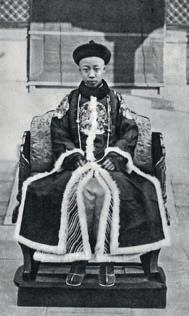

1922年12月1日,溥儀於娶婉容為妻,納文繡為妾。

1906 1912
On 15 August, Japan announces its surrender in World War II. On 19 August, Puyi hastily flees the dissolved state with close relatives including his brother, brother-in-law and nephews. On his way to board a flight to Japan, the Soviet Red Army captures the former emperor at the airport of Mukden (Shenyang). After his detention by Soviet troops, Puyi is imprisoned as a war criminal at Chita, Siberia, and Khabarovsk in the Russian Far East for a total of five years.

1945年8月15日,日本在二次大戰戰敗,宣佈無條件投降。四天後,溥儀帶同弟弟、妹夫、侄兒及幾位親信 逃亡日本,在奉天(瀋陽)機場被蘇聯紅軍俘獲,其後被囚禁在蘇聯赤塔及伯力收容所共五年。
Puyi is expelled from the Forbidden City 5 November 1924. He flees to the Japanese Legation in Beijing, then finds refuge in the Japanese concession in Tianjin in February of 1925. He lives in exile without an official title for seven years.
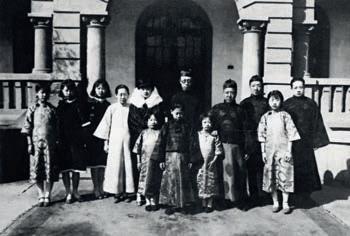
1924年11月5日,溥儀被逐出紫禁城。1925年2月,溥儀秘密前往天津,尋求日租界庇護, 渡過七年寓公生活。
1924 1931
Shortly after the Japanese invasion of Manchuria following the Mukden Incident on 18 September 1931, Puyi throws his lot in with the occupiers. Controlled by Japan’s Kwantung Army, Puyi is appointed chief executive of the new state using the era name of “Datong”. Few foreign countries recognize his Manchukuo realm.
1931年「九·一八」事變後,溥儀受日本扶植意圖復辟帝 國,由關東軍操縱,就任偽滿洲國執政。惟少數國家視滿洲 國為合法政權。
1945 1950
Puyi is declared emperor of the puppet state of Manchukuo on 1 March 1934 with the era name “Kangde”.


1934年,滿洲國改行帝制。3月1 日,溥儀正式登基為偽滿洲帝國 皇帝,年號「康德」。
Puyi marries Wanrong, consort.
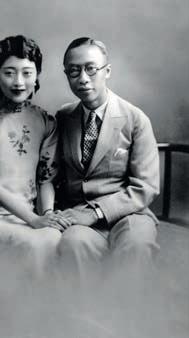
1922年12月1日,溥儀於娶婉容為妻,納文繡為妾。
斯大林命頒令引渡溥儀及其他偽滿戰犯回國。1950 年8月1日,溥儀等人抵達綏芬河,被關押在撫順戰犯 管理所。
1922
Stalin orders Puyi and other prisoners from the Manchukuo regime to be returned to China. They arrive 1 August in the border town of Suifenhe. Puyi and others are detained at the Fushun War Criminals Management Centre.
tutor
1959

In 1946 August, Puyi testifies for the prosecution at the International Military Tribunal of the Far East. Permyakov accompanies him to Tokyo.

1946年8月,溥儀以歷史見證人身份出席遠東國際軍事法庭作證,由別兒面濶夫陪同。
April 30th 1962, Puyi marries Li Shuxian. 1962年4月30日,溥儀和李淑賢結婚
1960
After 10 years of ‘intensive thought reform,’ he receives a special pardon on 4 December 1959. Puyi is among the first to be pardoned. After arriving in Beijing, Puyi takes up life as a common citizen of the new China.

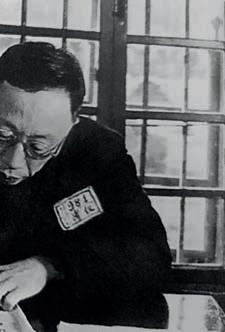
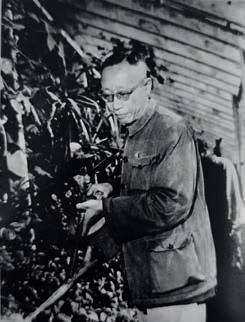

1959年12月4日,經過十年思想改造的溥儀成為首批獲特赦的 戰犯,回京後成為新中國公民。
1962
Puyi works as a gardener at the Beijing Botanical Gardens, then becomes a member of the National Committee of the Chinese People’s Political Consultative Conference. He works as an editor and writes his autobiography.
溥儀在北京植物園任職園丁,其後成為全國政協 文史資料研究委員會專員,期間從事編輯工作,並 撰寫自傳。
Puyi's Russian interpreter: Georgy Permyakov 溥儀的蘇聯翻譯格爾基.別兒面濶夫
1967
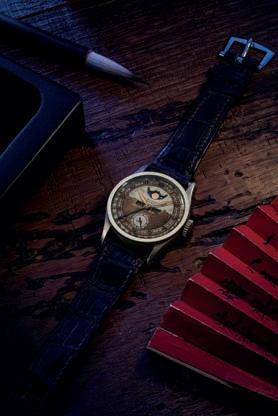
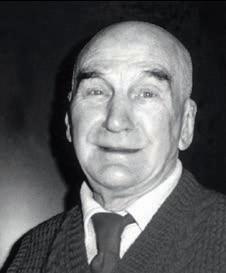

Russell and Nonna Working interview Georgy Permyakov in Khabarovsk, viewing the fan, watch, and notebook that Puyi gave him.

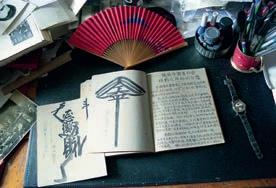
羅素.華京 及羅娜.華京在伯 力訪問別兒面濶夫,查看溥儀 送贈的紙扇、手錶及筆記本。
2001 2005
On 17 October, Puyi dies at the age of 61 of kidney cancer and uremic syndrome in Beijing.
1967年10月17日,溥儀因腎癌及尿毒症病逝於北京, 享年61歲。
富藝斯受委託拍賣末代皇帝愛新覺羅.溥儀遺珍。
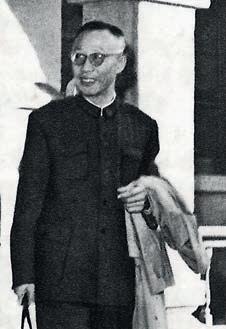
2019
Permyakov passed away at the age of 88. 別兒面濶夫逝世,享年88歲。
Phillips was entrusted with the collection of the last emperor of Qing dynasty, Aisin-Gioro Puyi.
© Getty Images: Hulton Archive, De Agostini, ullstein bild
© Palace Museum of The Manchurian Regime 偽滿皇
Photo Courtesy Rubezh
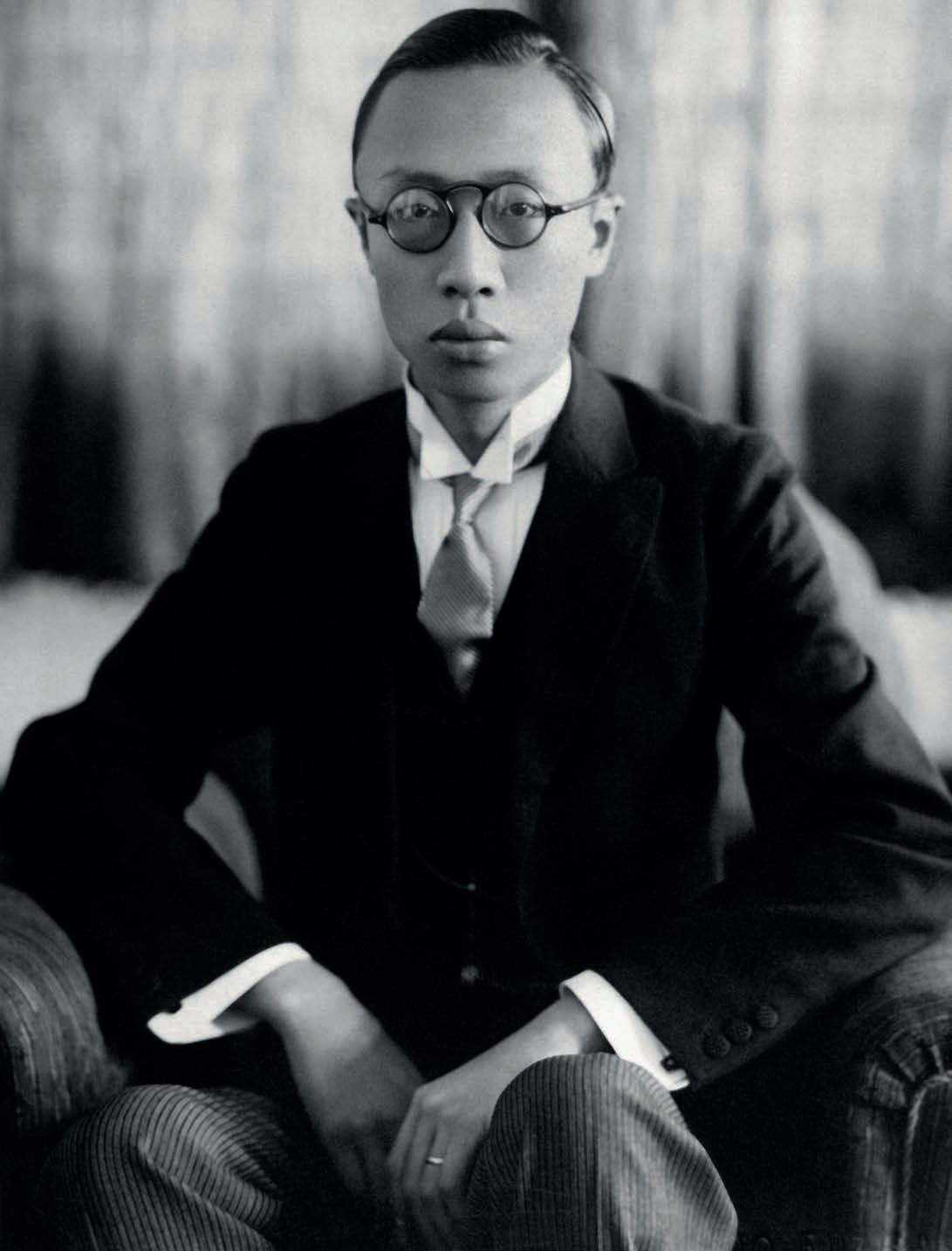
Time
‘All his life a helpless tool of one agency or another... Puyi has longed to dodge the trappings of state and lead the life of a normal western youth.’ [2]
magazine
A Child Emperor 天子誕生

Zaifeng,
Pujie 淳親王載灃與他的孩子溥儀和溥傑。 © Getty Images: Hulton Archive 17 1 9 0 6
Prince Chun with his children Puyi and
A Child Emperor 天子誕生
Aisin-Gioro Puyi was born 7 February 1906 in the residence of his father, Prince Chun. Upon the death of the childless Guangxu emperor, China’s shadow ruler, Empress Dowager Cixi, elevated the boy to the Dragon Throne 2 December 1908 as the era name Xuantong. He was 2 years old (3 years old for nominal age). This announcement caught the family unprepared. The grand chancellor simply showed up at the home of Prince Chun, accompanied by ornately dressed dignitaries and a retinue of cavalry and foot soldiers. The toddler scampering about, the family was told, had been appointed Son of Heaven. As the edict was read, Puyi’s grandmother fainted. He later had no memory of the event, but he was told that he threw a tantrum when the eunuchs of the court tried to take him away. The new emperor howled, writhed, and hit the strange men who tried to capture him. At last ‘the confusion was ended by my wet nurse who gave me the breast,’ Puyi writes.[3]
Brought to the palace, he would later retain a memory of ‘an emaciated and terrifyingly hideous face’ surveying him through a gauzy curtain. It was the empress dowager herself.
The boy trembled and screamed, ‘I want nanny, I want nanny!’
‘What a naughty child,’ Cixi snapped. ‘Take him away.’
Thus he entered a life lived by no other child on earth. Eunuchs carried Puyi about in a palanquin. Even a simple walk in the park required a retinue of servants and functionaries. He never left the Forbidden City and seldom saw other boys except when his brother and two or three other children from the imperial clan visited. He didn’t see his own mother for six years. Overnight, Puyi was treated as a god and was no longer able to behave as a child. The adults in his life, except for his wet-nurse Mrs. Wang, were all strangers; remote, distant, and unable to discipline him. Wherever he went, grown men would kneel to the floor in a ritual kow-tow, averting their eyes until he passed. Soon the young Puyi discovered the absolute power he wielded over the eunuchs, and frequently had them beaten for small transgressions.[4] The palace employed a thousand eunuchs to serve him. At every meal they laid out a banquet: six tables full of main dishes, cakes, rice, porridge, and preserved vegetables.
The Xinhai Revolution forced the child monarch’s abdication in 1912, ending the 267year Qing dynasty and an imperial system dating back two millennia. (An attempted restoration of the monarchy in 1917 lasted only 12 days.) Yet he was allowed to remain in the Forbidden City with a substantial subsidy from the state. In 1922 a 16-yearold Puyi married two women he barely knew. He had to choose from photographs of candidates presented by the imperial court. He picked Wenxiu, but the high consort said she wasn’t beautiful enough and instead designated a Manchu princess named Wanrong as his empress, with Wenxiu as his consort.
[2] Time magazine, ‘MANCHUKUO: Orchid Emperor,” 5 March 1934. https://content.time.com/time/subscriber/article/0,33009,747105,00.html.
[3] Aisin-Gioro Pu Yi, From Emperor to Citizen. Translated by W.J.F. Jenner, Oxford University Press, 1987, 31.A
[4] Behr, Edward, The Last Emperor. Toronto: Bantam Books, 1987, 63.
Left: Puyi as a child and Empress Dowager Longyu in the 3rd year of Xuantong.


左: 宣統三年時的溥儀和隆裕。
Right: Puyi in 1917.
右:丁己年的溥儀。
© Palace Museum of The Manchurian Regime 偽滿皇宮博物院
「他一生都身不由己,任人擺佈」,《時代雜誌》在1934年報導說: 「溥儀一直渴望逃離國事,擺脫皇族枷鎖,像個西方青年般自由 生活」。
1906年2月7日,溥儀在醇親王府出生。無後嗣的光緒皇帝駕崩, 年僅三歲的溥儀由長期垂簾聽政的慈禧太后擁立繼位。1908年12月 2日,溥儀登極,改元宣統。
消息傳來之始,醇親王府上下措手不及。軍機大臣在衣著華麗的 貴族、騎兵、步兵隨行下,步入府中,宣佈隨處亂跑的溥儀被欽定 為天子。
攝政王宣讀慈禧太后懿旨之時,溥儀祖母老福晉嚇至暈倒。年僅 三歲的溥儀,對此事毫無印象,長大後聽人憶述,得知當時府內充滿 他的哭叫和大人的哄勸。攝政王、軍機大臣和內監手忙腳亂,把嚎啕 大哭的小孩抱走。溥儀在自傳《我的前半生》中寫道:「老人們說, 幸虧有乳母結束那一場混亂。乳母看我哭得可憐,拿出奶來喂我, 這才止住了我的哭叫。」
溥儀敘述進宮後,對慈禧太后的第一印象:「在我面前有一個陰森 森的幃帳,裏面露出一張醜得要命的瘦臉——這就是慈禧。」
溥儀顫抖著叫喊:「要嫫嫫!要嫫嫫!」
慈禧太后很不痛快地說:「這孩子真彆扭,抱到哪兒玩去吧!」
自此,溥儀踏進一個沒有其他孩子的大人世界。他出入每寸,都由 太監抬轎代步。即使在公園散步,也有多人同行。他從未離開過 紫禁城,也絕少見到其他男孩,僅有弟弟和其他兩至三名皇族小孩 到訪。他六年未見生母。
「一夜間,溥儀被捧為神,再也無法渡過正常童年。即使成年後, 除了乳母王連壽外,身邊都是疏遠、無法管教他的陌生人。無論溥儀 走到哪裡,成年男子都會跪地磕頭,避免直視,待他走開才起身。 很快,年輕的溥儀發現他對太監擁有絕對權力,常會因為瑣事而毆打 他們。」
宮內雇用了一千名太監侍奉他。每頓飯都有如酒席,以六張桌子擺滿 主菜、糕點、米飯、粥和鹹菜。
1912年,辛亥革命迫使溥儀退位,結束國祚長達267年的清朝, 推翻沿用兩千年的帝制。(1917年復辟令溥儀二度稱帝,但歷時僅十 二天。)然而,他被允許留在紫禁城,領受到國家俸祿,維持奢華生活。
1922年,十六歲的溥儀與兩位素未謀面的妙齡少女成婚。他從朝廷 準備的一批候選佳麗照片中,挑選了文繡。但有太妃嫌她樣貌遜色, 最終安排溥儀封滿族公主婉容為皇后,納文繡為妾。
19
‘Imitating Johnston I bought all sorts of trinkets to hang about myself: Watches and chains, rings, tiepins, cuff-links, neckties and so on... I asked him to give foreign names to myself, my brothers and sisters, my “empress”and my “consort”: I was called Henry and my empress Elizabeth.’
Aisin-Gioro Puyi

21
Sir Reginald Johnston with Puyi,Pujie and Runqi in the Forbidden City. 莊士敦與溥儀、溥杰和潤麒在紫禁城。
1 9 1 9
西學蒙師
© Palace Museum of The Manchurian Regime 偽滿皇宮博物院
Mentor to an Emperor
Mentor to an Emperor
Early in 1919 Puyi was introduced to a new tutor who would change his life and influence his entire outlook on the world—including his personal aesthetics. This was a 44-year-old Scottish scholar and diplomat named Reginald Fleming Johnston. Like the actor Peter O’Toole, who played Johnston in the 1987 film The Last Emperor, Johnston had blue eyes and fair hair fading into grey.
Born in 1874, Reginald Johnston was educated at the Edinburgh and Oxford before entering the British colonial service. By the time he met Puyi, he was an experienced China hand who had travelled widely in the Middle Kingdom and published scholarly works on the language and culture.
It was Puyi’s first relationship with a foreigner. Until his 13th year the young monarch had had four tutors: three Chinese and one Manchu. In the old system, imperial teachers were so venerated, ‘They were not required to kneel in the Emperor’s presence, and the Emperor himself was allowed to stand when his tutors stood,’ Johnston would later tell The New York Times [5] With the Scotsman’s appointment, controversy embroiled the court over whether the foreigner should be regarded as a simple foreign language instructor, or granted the revered status of imperial tutor.
The emperor met his new tutor in the Yuqing Palace. Johnston recalls that the boy emperor wore imperial court dress and was attended by ‘functionaries in uniform.’ Puyi says his father and Chinese tutors also were present.
‘On being conducted into the audience-chamber I advanced and bowed three times,’ Johnston writes. ‘He then descended from his seat, and walked up to me and shook hands in the European fashion.’ [6]
Johnston withdrew, then re-entered the hall. This time Puyi bowed to this strange new figure in his life: ‘this was the way in which I acknowledged him as my teacher.’ [7]
Puyi’s earliest impressions of foreigners had been drawn from magazines and brief encounters in the imperial court. He was frightened by these odd people with their curling moustaches and hair and eyes of an alarming variety of colours. Johnston, however, was less disturbing. The boy emperor found the Scotsman’s Chinese easier to understand than some native dialects. Johnston stood so stiff, he seemed to have a steel frame under his clothes. But his hair and blue eyes did make the youth feel uneasy.
西學蒙師
[5] Price, Clair. ‘AS PU-YI APPEARS TO HIS OLD ENGLISH TUTOR; Sir Reginald Johnston, Who Saved the Boy Monarch's Life, Tells His Experiences.’ The New York Times, 17 July 1932, Section XX, 2.
[6] Reginald F. Johnston, Twilight in the Forbidden City. Victor Gollancz Ltd, 1934, 166.
[7] Aisin-Gioro Pu Yi, From Emperor to Citizen. Translated by W.J.F. Jenner, Oxford University Press, 1987, 109.
溥儀和婉容在天津張園接見庄士敦引荐的加拿大總督威靈頓夫妻。

23
Canadian Governor General Viscount Willingdon and his wife meet Puyi and Wanrong through Johnston's referral in Tianjin 1931.
© Gettyimages: De Agostini

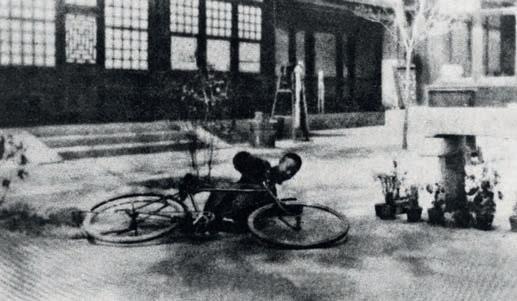 Puyi in tennis outfit. 溥儀網球照。
© Palace Museum of The Manchurian Regime 偽滿皇宮博物院
Puyi with bicycle in the Forbidden City 溥儀騎自行車。
© Palace Museum of The Manchurian Regime 偽滿皇宮博物院
Puyi in tennis outfit. 溥儀網球照。
© Palace Museum of The Manchurian Regime 偽滿皇宮博物院
Puyi with bicycle in the Forbidden City 溥儀騎自行車。
© Palace Museum of The Manchurian Regime 偽滿皇宮博物院
Johnston’s influence on the 13-year-old emperor went far beyond teaching English grammar. He opened a world beyond the Forbidden City. He got Puyi a bicycle to clatter about on. In class the teacher noticed that his pupil couldn’t read a clock on the desk right in front of him. Overcoming resistance from traditionalists who said an emperor shouldn’t wear glasses, he demanded an eye exam for the boy. Puyi received his first pair of spectacles.
Johnston’s influence extended to clothing. Admiring the Scotsman’s garb, Puyi began doubting the value of silk, and he embraced the Western styles of the Roaring Twenties. Woollen suits were in vogue, or tuxedos for formal wear, with jackets cut close to the waist. Fedora hats, braces, pinstriped fabrics, sportswear, and other European and American styles found their way into the monarch’s closets.
The emperor would later write: ‘Imitating Johnston I bought all sorts of trinkets to hang about myself: Watches and chains, rings, tiepins, cuff-links, neckties and so on,’ Puyi writes. ‘I asked him to give foreign names to myself, my brothers and sisters, my ‘empress’ and my ‘consort’: I was called Henry and my empress Elizabeth.’ [8]
While introducing Puyi to Western tastes, Johnston reinforced a centuries-long royal fascination with precious timepieces. From the late Ming to the Qing dynasties, hornate European mechanical clocks and watches became all the rage, overshadowing traditional Chinese clocks. In the nineteenth century, the imperial workshop commissioned similar models.
An offhand remark from his mentor caused Puyi to change his traditional hairstyle. When Johnston called Chinese queues ‘pigtails,’ the impressionable youth cut his off. This enraged his Chinese tutors and caused high consorts to weep, but within a few days a thousand queues disappeared from the imperial staff. Only his three Chinese tutors and a few senior officials defiantly kept theirs.[9] Puyi would wear his hair cropped in a Western style for the rest of his life.
In a court where eunuchs bore royals about on palanquins, Johnston introduced Puyi to the physical activity of Western sports, among them cycling and tennis. When the Palace of Established Happiness burned down in 1923, Puyi had a tennis court built on the site. On 22 October 1923, ‘the game of lawn-tennis was for the first time played within the walls of the Forbidden City,’ the Scotsman writes. The emperor and his brother partnered to take on Johnston and empress’s brother.[10]
25
[8] Aisin-Gioro Pu Yi, From Emperor to Citizen. Translated by W.J.F. Jenner, Oxford University Press, 1987, 113. [9] Aisin-Gioro Pu Yi, From Emperor to Citizen. Translated by W.J.F. Jenner, Oxford University Press, 1987, 114. [10] Reginald F. Johnston, Twilight in the Forbidden City. Victor Gollancz Ltd, 1934, 343.
‘The game of lawn-tennis was for the first time played within the walls of the Forbidden City.’
Sir Reginald Johnston
1919年初,溥儀開始跟隨一位新來的導師學習。這位導師將改寫他 的世界觀、品味,以至人生。他是四十四歲的蘇格蘭學者兼外交官 約翰.弗萊明.莊士敦(Reginald Fleming Johnston)。與1987年電影 《末代皇帝》中扮演莊士敦的演員彼得.奧圖爾(Peter O’Toole) 一樣,莊士敦擁有一雙藍眼睛,以及一頭略帶花白的銀髮。
莊士敦生於1874年,愛丁堡大學及牛津大學畢業後,被派駐出任 英國殖民地官職。當他赴京擔任溥儀導師之時,已周游中國多年, 是一位經驗豐富的中國通,曾出版有關漢語及中華文化的學術著作。
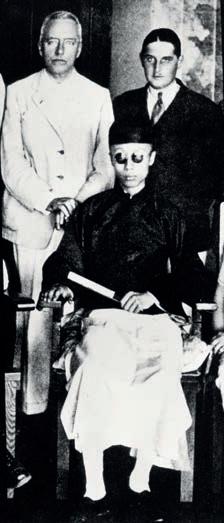
莊士敦是溥儀首位接觸的外國人。十三歲前的溥儀受教於四名帝師, 都是漢、滿族的翰林學士。帝師地位超然,「在皇帝面前無需下跪。 當皇帝站著,帝師可以坐下。」莊士敦在《紐約時報》的一篇訪問中 如是說。即使莊士敦極受溥儀重視,宮內大臣對應否向其頒受帝師名 銜存有爭議。
莊士敦在毓慶宮會見身穿朝服的溥儀皇帝,後來在書中憶述現場 尚有「穿著各式官服的官員」。據溥儀自傳所述,當時他父親醇親王及 其他傳統帝師也在場。
莊士敦在回憶錄《紫禁城的黃昏》中寫道:「我被帶入毓慶宮覲見 皇上,上前行了三鞠躬禮。皇上走下來到我面前,作歐式握手。」
莊士敦行鞠躬禮後退出門外。溥儀在自傳中寫道:「然後,他再進來, 我向他鞠個躬,這算是拜師之禮。」
溥儀對洋人的最早印象,來自雜誌圖片,以及以往在宮內的短暫 接觸。他對這些長滿粗鬍、一頭捲髮、眼珠異色的怪人感到恐懼。 然而,莊士敦卻不那麼令他不安。小皇帝發現這位蘇格蘭學者的流利 京話,比一些中國方言更容易理解。溥儀這樣形容莊士敦:「他的腿 也能打彎,但總給我一種硬梆梆的感覺。特別是他那雙藍眼睛和淡黃 帶白的頭髮,看著很不舒服。」
莊士敦對這位少年皇帝的影響,遠遠超越教授英語文法。他為溥儀 開啓了知識大門,讓他了解紫禁城外的精彩世界。他給溥儀買了一輛 單車,讓他在城內自由騎行。課堂上,莊士敦發現溥儀無法讀出桌上 時鐘顯示的時間。宮內傳統大臣認為一朝天子不能佩戴眼鏡,最終 還是被莊士敦說服,讓溥儀接受眼科檢查。患上近視的溥儀,得到 人生第一副眼鏡。
莊士敦對溥儀的衣裝打扮有著深遠影響,如溥儀筆下「教育我像 他所說的英國紳士那樣的人」,令末代皇帝開始欣賞著蘇格蘭人的 服裝,懷疑中國絲綢的價值,崇尚起席捲歐美之「咆哮的二十年代」 衣著潮流。時髦的羊毛套裝、高貴宴會的燕尾服、貼腰的外套、費多 拉帽、吊帶褲、細條紋織物、運動服和其他歐美風格服飾通通進入 皇帝的衣櫥。
溥儀寫道:「我按照莊士敦的樣子,大量購置身上的各種配飾:懷錶、 錶鏈、戒指、別針、袖扣、領帶,等等。」莊士敦更為溥儀及同輩起了 洋名。溥儀:「我請他給我起了外國名字,也給我的弟弟妹妹們和我的 『后』、『妃』起了外國名字,我叫亨利,婉容叫伊莉莎白。」
莊士敦把各式各樣的西方文化傾囊相授,令溥儀眼界大開,如癡 如醉。云云西洋珍寶中,有一樣令溥儀情有獨鍾。那說不上是新事物, 皆因清宮早已對它趨之若鶩。那就是西洋鐘錶。自明末到清朝, 華麗的歐洲機械鐘和手錶風靡宮廷貴族數百年,使傳統的中國鐘錶 黯然失色。十九世紀,清宮奉皇帝御旨仿照西洋技術製作鐘錶。
莊士敦甚至改變了溥儀的髮型。溥儀記述:「只因莊士敦譏笑說中國 人的辮子是豬尾巴,我才把它剪掉了。」此舉令太妃們痛哭,帝師們 多天不悅。可是,經末代皇帝一剪,「千把條辮子全不見了」,只有三位 帝師及幾位內務府大臣仍留辮。自此,溥儀終生蓄著西式短髮。
宮內太監慣用轎子為溥儀代步。莊士敦向溥儀介紹西方體育活動, 包括單車和網球。1923年紫禁城內的建福宮被燒毀後,溥儀在原址 興建了網球場。莊士敦寫道:「1923年10月22日,紫禁城的高牆內 第一次有人打起了網球。」溥儀等人組隊對打——他和溥傑成一隊, 莊士敦和潤麒成一隊。
「我按照莊士敦的樣子,大量購置身上的各種配飾: 懷錶、錶鏈、戒指、別針、袖扣、領帶,等等… 我請他給我起了外國名字,也給我的弟弟妹妹們 和我的『后』、『妃』起了外國名字,我叫亨利,婉容 叫伊莉莎白。」
愛新覺羅·溥儀
Puyi and Reginald F. Johnston. 溥儀和約翰.弗萊明.莊士敦。
© Getty Images: ullstein bild
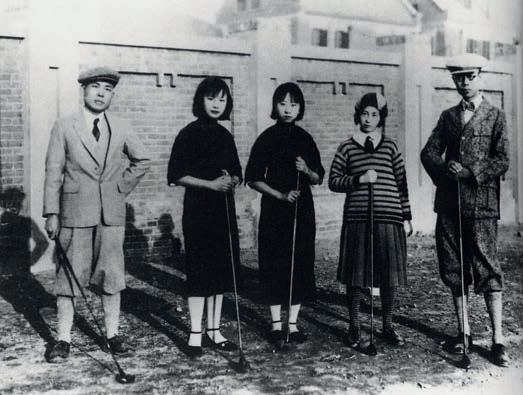
 Puyi takes a swing on a golf course in Tianjin. 溥儀在天津打高爾夫球。
© Palace Museum of The Manchurian Regime 偽滿皇宮博物院
Puyi and his sisters playing a game of golf in Tianjin. 溥儀和其二妹,三妹等人 在天津打高爾夫球。
Puyi takes a swing on a golf course in Tianjin. 溥儀在天津打高爾夫球。
© Palace Museum of The Manchurian Regime 偽滿皇宮博物院
Puyi and his sisters playing a game of golf in Tianjin. 溥儀和其二妹,三妹等人 在天津打高爾夫球。
27
© Palace Museum of The Manchurian Regime 偽滿皇宮博物院
 Puyi with Imperial Preceptor Zheng Xiaoxu and Reginald F. Johnston. 溥儀與帝師鄭孝胥和約翰.弗萊明.莊士敦。
© Palace Museum of The Manchurian Regime 偽滿皇宮博物院
Puyi with Imperial Preceptor Zheng Xiaoxu and Reginald F. Johnston. 溥儀與帝師鄭孝胥和約翰.弗萊明.莊士敦。
© Palace Museum of The Manchurian Regime 偽滿皇宮博物院
Flight from Beijing
In 1924 government troops expelled the imperial family from the Forbidden City, forcing Puyi to take up residence with his father. Fearing for his life, and egged on by Johnston, the former emperor decided to flee Beijing.
Interestingly, given the items in this collection, a watch, clock, and camera store played into his scheme to escape. As Johnston and his pupil set out for the Legation Quarter where foreign representatives were located, Puyi’s father—who opposed leaving the capital—sent along a steward to keep an eye on them, Puyi writes.[11]
Johnston suggested that he and his royal pupil slip into the store, hoping his father’s spy would grow bored waiting outside and head home. Puyi ‘dillied and dallied,’ and eventually bought a French gold watch. Puyi was traveling incognito, but Johnston slipped and called his fledgling by his imperial title, huang shang, the tutor writes in his memoir, Twilight in the Forbidden City. Customers and employees started, and one of them rushed out to spread the word. Soon a crowd gathered to gawk.
‘They were gazing upon their former emperor for the first time,’ Johnston writes.[12]
Unable to get rid of the steward, Puyi pretended he was ill. Johnston escorted him to a German hospital where they managed to ditch the determined servant. As a blinding yellow sandstorm descended upon Beijing, a carriage met Puyi at the back door and spirited him to the Japanese embassy.
Puyi found refuge in the Japanese legation in Tianjin, where he lived in exile without an official title for six years.
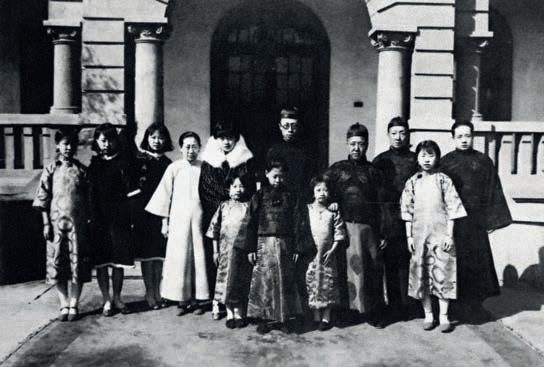
1924年,馮玉祥等領軍包圍紫禁城,把溥儀逐出宮外,結束遜清 皇室小朝廷。溥儀到父親載灃的宅邸醇親王府暫住,但擔心危機 在前,加上莊士敦的勸告,最終決定逃離北京。
無獨有偶,溥儀逃亡期間,與本珍藏遙相呼應的事物——手錶、時鐘和 照相機店,發揮了關鍵作用。莊士敦協助溥儀出洋,尋找大使館庇護, 載灃卻主張留京。溥儀記述:「我們剛上了汽車,我父親偏要派他的 大管家張文治,陪我們一起去。」
為擺脫監視,莊士敦想了個辦法。溥儀寫道:「我們先到烏利文洋行 停一停,裝作買東西,打發張文治回去。」二人走進烏利洋行,一家 「外國人開的出售鐘錶、相機的鋪子」。莊士敦也有記下此一幕, 說溥儀在店內「磨磨蹭蹭」,最終挑了一隻法國金懷表。當天這位末代 皇帝喬裝平民,但據莊士敦描述,他不小心喚了溥儀一聲「皇上」。 於是店內顧客員工紛紛竊竊私語,出門把話傳開,引來大量市民 圍觀。
莊士敦寫道:「他們生平第一次這麽目不轉睛注視著這位過去的 皇上。」由於無法擺脫張文治,溥儀假裝生病。莊士敦護送他到德國 醫院,成功甩掉這位管家。一場刺眼的沙塵暴籠罩北京,馬車在後門 迎接溥儀,把他送到日本大使館。
溥儀逃至天津日租界,過了六年寓公流亡生活。
29
[11]
Aisin-Gioro Pu Yi, From Emperor to Citizen. Translated by W.J.F. Jenner, Oxford University Press, 1987, 160. [12] Johnston, Reginald F., Twilight in the Forbidden City. Victor Gollancz Ltd, 1934, 419.
離京之路
Puyi and his family in The Zhang Garden, Tianjin.
溥儀和其家人在天津張園。
© Palace Museum of The Manchurian Regime 偽滿皇宮博
物院
‘The puppet emperor was crowned on a bitter March day in 1934. As court dignitaries in dragon gowns and fur hats bowed low, he sat on an ornate, bejewelled throne of ebony carved with dragons and orchids.’
30
Time Magazine

偽滿洲國時期溥儀武裝照片。 © Palace
Manchurian Regime 偽滿皇宮博物院 31 1 9
Puyi in uniform during the Manchuria period.
Museum of The
3 2
The Puppet Emperor 傀儡皇帝
1945年10月2日溥儀在瀋陽機場被蘇聯
The Puppet Emperor
By 1932 Puyi had increased his dependency on the Japanese, agreeing to serve as ‘chief executive’ in Changchun, capital of the Japanese puppet state of Manchukuo. Two years later the Japanese elevated him to ‘emperor,’ but he was little more than a figurehead.
Changchun was a far cry from the Forbidden City. In 1932 a New York Times reporter described the town as a single street stretching three miles from the railroad station and disappearing into ‘the endless Manchurian prairie.’ Puyi’s ‘none-too-elegant’ palace showed above prison-like walls.
‘In contrast to the royal barges on the great marble-bridged lotus lakes of Peking, the theatre whose orchestra pit was a pool designed to mellow the voices of actors and Chinese instruments, the polo and football courts, the riding paths, the rock and flower gardens, the towering artificial hills, Pu-yi has here for recreation facilities only a dirt tennis court,’ reporter Upton Close wrote. [13]
The puppet emperor was crowned on a bitter March day in 1934. As court dignitaries in dragon gowns and fur hats bowed low, he sat on an ornate, bejewelled throne of ebony carved with dragons and orchids. Yet the Japanese regarded him as nothing more than ‘a hollow-eyed figurehead to distract Manchurian peasants with the pomp of a royal court,’ Time magazine reports.[14]
Thus he aligned himself with what would be the losing side in World War II. On 15 August 1945, Japan announced its unconditional surrender, marking the dissolution of Manchukuo. Three days later Puyi abdicated a third time. He fled with several close relatives, including his brother, brother-in-law, and nephews. On their way to board on a flight to Japan, the Soviet army captured him at the airport of Mukden (Shenyang).
Despite the Chinese government's demands that the Kremlin return Puyi as a war criminal, the Soviet Union held him, first in the Siberian city of Chita, then in Khabarovsk in the Russian Far East.

傀儡皇帝
[13] Close, Upton. ‘AMID ALARUMS THE LAST MANCHU “RULES”: A Picture of Pu-Yi Against the Drab Background of the Capital.’ The New York Times, 11 Dec 1932, 126, 138.
[14] Time magazine, ‘MANCHUKUO: Orchid Emperor,” 5 March 1934. https://content.time.com/time/subscriber/article/0,33009,747105,00.html.
Puyi being transported by plane at Mukden (Shenyang), having been captured by the Soviet Red Army, 2nd October 1945.
紅軍截獲。
© Gettyimages: Hulton Archive
Aisin-Gioro Puyi as Emperor of Manchukou 滿洲國皇帝愛新覺羅·溥儀 Photo Courtesy Rubezh
1932年,靠攏日本的溥儀已完全依賴對方,期望有復辟皇權的 一天。溥儀答應為滿洲國的傀儡政權出任「執政」,在長春舉行就 職典禮儀。兩年後,日本當局讓溥儀登極成為「皇帝」,年號康德。衆所 周知,所謂皇帝,不過是由關東軍操控的傀儡君主而已。
長春離紫禁城甚遠。1932年,一名《紐約時報》記者形容長春為一條 「街道」,由火車站延伸三英里,消失在「一望無際的滿洲大草原」。
溥儀棲身的皇宮「設計庸俗」,猶如建築在監獄圍牆之上。
「與北京宏偉的大理石橋、荷花池上的皇家駁船、設計巧妙的 大劇院、馬球場、足球場、騎馬道、山水園林,以至千奇百趣的庭院賞
石相比,溥儀在這裏的娛樂設施,只有一個泥地網球場。」記者厄頓. 卡洛斯(Upton Close)這樣描述滿洲國皇宮。
1934年3月1日,寒氣凜冽,溥儀在當時改名「新京」的長春舉行登極典 禮。溥儀坐在烏木雕龍紋嵌寶寶座上,接受身穿龍袍、頭戴皮帽的 皇室貴族行鞠躬禮。然而,日本人認為溥儀不過是個「有名無實的 戲偶」,舉辦典禮的目的是「借用皇家盛事來分散滿洲農民對社會的 不滿。」《時代週刊》如此報導。
就這樣,在命運驅使下,末代皇帝與二次大戰的戰敗國結盟。1945年

8月15日,日本宣佈向同盟國無條件投降,滿洲國旋即瓦解。三天後, 溥儀在倉皇中宣讀滿洲國皇帝退位詔書,經歷他人生中第三次退位。
他與數名近親,包括弟弟溥傑、妹夫、侄兒、醫生和隨侍一起逃亡。 他們原打算登機前往日本,結果被蘇聯紅軍在奉天(瀋陽)機場截獲。
中國政府要求蘇聯把溥儀作為戰犯歸還,但當局沒有聽從,終究 把他關押起來。溥儀先後被囚禁在西伯利亞的赤塔,以及蘇聯遠東的 伯力。
33
‘I introduced myself in the Beijing dialect and said I would be the interpreter for emperor Puyi ... From the corner came a tall, thin Chinese man in glasses. He smiled showing wonderful teeth, ivory coloured, and stretched out his hands with very long fingers.’
Georgy Permyakov
The Emperor & the Interpreter 獄中翻譯
9 4 5

Puyi's Russian interpreter: Georgy Permyakov 溥儀的俄語翻譯格爾基.別兒面濶夫
35 1
Photo Courtesy Rubezh

©
偽滿皇宮博物院
Palace Museum of The Manchurian Regime
The Boy in The Pond
In Tianjin Puyi lived a cosmopolitan life in the Japanese concession, out of the reach of Chinese authorities.

During that time, a curious twist of fate would bring about a meeting with his future Russian interpreter. At some point in the mid-1920s, Puyi met Georgy Permyakov, who was then a boy.
Born in the Soviet Far Eastern city of Ussurisk 7 December 1917, Permyakov and his family were among thousands of Russians who took refuge in China after the Russian Revolution in 1917. After the Bolsheviks seized his wealthy father’s business, the family fled to China in 1921, living first in Tianjin and then Harbin.
Permyakov grew up playing with Chinese children. ‘Therefore, the Eastern language for him was almost like a native language,’ MKRU Khabarovsk notes.[15]
During his Tianjin years Permyakov liked to play in a park near his home. One day while walking along the rim of a pond, he slipped and fell in the water. As he clambered out, soaking, he heard laughter. A young Chinese dressed in strange clothing was watching with glee, Permyakov later told his family. Hearing the young man’s laughter, Permyakov hammed it up and deliberately flung himself into the water again.
He came home ‘as wet as a chicken’ and explained what had happened, his family later said. And his mother told him, ‘You saw the Chinese emperor.’
Permyakov was not the only foreign child to glimpse the former emperor in Tianjin. In contrast with Puyi’s cloistered existence in the Forbidden City, he seems to have been out and about. Puyi biographer Brian Power, who was born in Tianjin in 1918, saw the emperor several times when he lived there as a boy. [16]
[15] MKRU Хабаровск , Гостайна переводчика последнего императора Китая Пу И, [Gostaina perevodchika poslednego imeratora Kitaya Puyi, The State secret of the translator of the last emperor of China Pu Yi], https://hab.mk.ru/articles/2014/10/10/gostayna-perevodchikaposlednego-imperatora-kitaya-pu-i.html, 10 October 2014, accessed 6 April 2023 [16] Power, Brian.
溥儀避居天津日租界期間,不受中國政府干預,有如身在小型國際 大都會。此時,命運讓末代皇帝與一位異國平民的人生軌跡首次 交曡。1920年代中期某日,溥儀與尚未成年的別兒面濶夫相遇。
1917年12月7日,別兒面濶夫在蘇聯遠東城市烏蘇裏斯克(雙城子)出 生。1917年俄國爆發革命,別兒面濶夫和成千上萬的俄羅斯人一樣, 逃往中國避難。別兒面濶夫父親本為一位成功商人,但被布爾什維克 搶奪生意,一家於1921年投奔中國,先住天津,後往哈爾濱。
別兒面濶夫自小就和中國孩子一起玩耍。「因此,東方語言對他來說, 可謂與母語無異」,《MKRU Khabarovsk》撰述。
別兒面濶夫在天津居住時,喜歡到離家不遠的一個公園裏玩耍。有一 天,他沿池邊行走,不小心滑倒,掉進水裏。渾身濕透的他爬出來時, 聽到笑聲。別兒面濶夫後來告訴家人,一個穿著奇怪衣服的年輕中國 人,高興地看著。別兒面濶夫聽到年輕人的笑聲,打起精神再次跳入 水中。
家人形容別兒面濶夫回家時「像掉進水塘的鴨子」一樣全身濕透,並 講釋了當時的情況。母親告訴他,「你剛遇到中國皇帝」。
別兒面濶夫並不是唯一在天津瞥見末代皇帝的外國孩子。溥儀在 天津期間可自由外出,與紫禁城的宮禁生活迥然不同。溥儀傳記作者 布萊恩.鮑爾(Brian Power)在1918年生於天津,童年時曾多次見過 溥儀。
37
池中男孩
The Puppet Emperor: The Life of Pu Yi, the Last Emperor of China. Peter Owen Publishers, 1986, 2.
The Zhang Garden, Tianjin. 天津張園 © Palace Museum of The Manchurian Regime 偽滿皇宮博物院
The Emperor & the Interpreter 獄中翻譯
An encounter with a royal tends to leave an impression, and six decades later Georgy Permyakov still recalled the day he met Puyi in a Soviet prison camp.
It was December 1945. Permyakov—who was fluent in Chinese and Japanese— was working at Special Object No. 45 in Khabarovsk. This was not a nightmarish gulag of the sort memorialized by Soviet Nobel Prize-winner Aleksandr Solzhenitsyn; rather, it was a spare facility in which Puyi was granted extraordinary privileges.
Permyakov found the imperial prisoner in a spacious room with flowerpots on the windowsill.
‘I introduced myself in the Beijing dialect and said I would be the interpreter for emperor Puyi,’ Permyakov writes. ‘From the corner came a tall, thin Chinese man in glasses. He smiled showing wonderful teeth, ivory-coloured, and stretched out his hands with very long fingers.’ [17]
Puyi wore an expensive brown woollen suit, and his hair was perfectly parted. Although he was approaching 40, his face was wrinkle-free and his posture as erect ‘as if he’d swallowed a ruler,’ Permyakov writes.
At 28 years old, the interpreter’s entire life had prepared him for this moment. After several years in Tianjin, his family had moved in 1927 to Harbin, where the expatriate Russian population ran in the tens of thousands. There he studied Chinese and Japanese, and from 1939-1945 he taught the two languages in the Soviet consulate.
As the Soviet Army entered northern China in August 1945, the Japanese arrested the consulate staff, planning to murder them, Permyakov recalls. But the quick victory of the Red Army save them.[18]
With the war’s end Permyakov moved to Khabarovsk. In Stalin’s time thousands of Russians who returned from Harbin ended up in the Gulag, but Permyakov possessed valuable linguistic skills. Upon his arrival at Special Object No. 45, the camp director, Maj. Anatoly Denisov, stunned the interpreter with the news that they held a special prisoner: the former emperor of China. Permyakov would interpret for him.
When the two men met Permyakov reminded the prisoner of the scene at the pond in Tianjin. Puyi said that he indeed recalled the boy, the interpreter’s family said. Because of that, trust was established between them.
In the camp Puyi did not live the life of a typical Soviet gulag prisoner, felling timber in the taiga, or sleeping in lice-infested barracks. Rather than march out before dawn to build canals or dig in mines, he got up at a leisurely 7:30 a.m. and breakfasted at 9 a.m. Privileged even in this unique camp, he was allotted his own room with a bed, a desk, a wardrobe, and even a phonograph, according to the Puyi Museum in Khabarovsk.[19]
[17] Permyakov, Georgy, Император пуи: пять лет вместе (‘Imperator Puyi. Pyat let vmeste’; ‘Emperor Puyi: Five Years Together’), Rubezh, No. 4 (2003), 292. [18] Permyakov, 'Emperor Puyi: Five Years Together’, Rubezh, 279. [19] Pu Yi Museum, Khabarovsk, Russia, “QR-12 Daily Routine,” https://puimuseum.ru/en/daily-routine/, accessed 4 March 2023


39
Puyi with Permyakov (right) and other Soviet officials. 溥儀,別兒面濶夫(右)和其他蘇聯官員們。
Photo Courtesy Rubezh
Puyi being transported by plane at Mukden (Shenyang), having been captured by the Soviet Red Army, 2nd October 1945. 1945年10月2日溥儀在瀋陽機場被蘇聯紅軍截獲。
© Palace Museum of The Manchurian Regime 偽滿皇宮博物院
He practiced tai chi chuan, offered Buddhist prayers, and washed his face and hands frequently. In his free time he read books and journals. From 2 p.m. to 6 p.m., he napped. At 6 p.m. he had dinner and chatted with others in the yard gazebo.
The prison administration gave Puyi and his household a garden to tend ‘in order to make us parasites do a little light labour,’ Puyi writes. He was mesmerized by the growth of his tomatoes, beans, eggplants, green peppers, and other crops.[20]
Because of his special status, Puyi was allowed to keep two suitcases and some European clothes, the museum notes. His companions, however, were not allowed this privilege and had to make do with minimal clothing.
If Johnston steered Puyi toward being a British gentleman, Permyakov’s focus was on teaching him to make his way in a communist state. Under Permyakov’s tutelage Puyi studied Russian and the communist doctrine. The former emperor delighted in learning lullabies and a drinking song called, ‘Kalinka,’ Permyakov writes. Permyakov assigned the prisoner him books to read, among them Problems of Leninism and History of the Communist Party of the Soviet Union.
Just as he had done in Manchukuo, Puyi shaped himself according to his new captors’ demands. He did not question Permyakov’s lessons about the evils of kings and capitalists, but certain communist teachings bewildered him.
‘Why don’t you like intellectuals?’ Puyi asked. ‘These people create the wealth of the country.’ [21]
Terrified of extradition to China, Puyi sought to stay in the Soviet Union. He hoped ultimately to migrate to the United States or the United Kingdom, as these were Soviet allies, Permyakov writes.[22] During the five-year confinement in the Soviet Union, Puyi made several verbal requests and three written applications to the local authorities, asking for permanent asylum.
[20] Aisin-Gioro Pu Yi, From Emperor to Citizen. Translated by W.J.F. Jenner, Oxford University Press, 1987, 326. [21] Permyakov, Georgy, Император пуи: пять лет вместе [‘Imperator Puyi. Pyat let vmeste’; ‘Emperor Puyi: Five Years Together’], Rubezh, No. 4 (2003), 293. [22] Permyakov, Georgy, ‘Emperor Puyi: Five Years Together,’ Rubezh, 293.
‘If Johnston steered Puyi toward being a British gentleman, Permyakov’s focus was on teaching him to make his way in a communist state.’
會見皇室成員,對一般人來說總是沒齒難忘。六十年後,別兒面濶夫 回望蘇聯監營中對溥儀的第一印象,仍是記憶猶新。
1945年12月,操流利中、日文的別兒面濶夫在伯力第45號收容所 工作。有別於諾貝爾文學獎得主亞歷山大.索贊尼辛(Aleksandr Solzhenitsyn)筆下極度殘酷的古拉格群島勞改營,溥儀所處的收容 所舒適得多,而且能讓他繼續享受皇帝的待遇。
別兒面濶夫發現溥儀在窗臺擺放盆栽花卉。別兒面濶夫憶述: 「我用北京腔自我介紹,告訴溥儀我是他的翻譯員。迎我而來的, 是一位高挑纖瘦、佩戴眼鏡、笑容可掬、牙齒白皙、十指幼長的 中國人。」
溥儀穿著昂貴的棕色毛料西裝,頭髮清晰分界。雖已年近四十歲, 但臉上毫無皺紋,腰背也很挺拔。別兒面濶夫寫道:「就像吞下了 一把間尺」。
這位負責為溥儀翻譯的二十八歲青年,仿佛前半生都在準備迎接 此刻。別兒面濶夫在天津居住數年後,隨家人於1927年搬到俄國僑民 達數萬人的哈爾濱。他在當地學習中文和日文,在1939–1945年於 蘇聯領事館任職導師,教授這兩種語言。
別兒面濶夫憶述,1945年8月蘇軍進入中國東北時,日軍逮捕了蘇聯 領事館的工作人員,計劃謀殺他們。幸好援軍及時趕到,保住使館 人員的性命。
戰後,別兒面濶夫移居至伯力。在斯太林時代,成千上萬從哈爾濱 回國的俄羅斯人,最終被關進勞動改造營管理總局(古拉格)。 但別兒面濶夫擁有非凡的語言能力,因此受到重用。當別兒面濶夫抵 達伯力第45號收容所時,營長阿納托利.傑尼索夫(Anatoly Denisov) 少校告訴他,營內關押了一名特殊戰犯——中國皇帝。
別兒面濶夫大為吃驚,但也準備就緒進行翻譯工作。
兩人見面時,別兒面濶夫重提他童年在天津池塘的狼狽一幕。別兒 面濶夫後人記述:「溥儀說他確實記得那個男孩。」二人冥冥中重遇, 立刻建立互信。
身處伯力收容所的溥儀,與古拉格囚犯的生活大相徑庭。他無需在 北方針葉林砍伐木材,也不用睡在長滿蝨子的監倉。據伯力溥儀 博物館介紹,溥儀沒有在黎明前出門修渠或挖礦,而是在早上 七時半悠閒地起床,九時吃早餐。即使被收監,這位末代皇帝也享有 特殊待遇。他有自己專屬的房間,內有一張床、一張書桌、一個衣櫃, 還有一台留聲機。
溥儀練習太極拳,虔誠拜佛,經常洗臉洗手。他在餘暇閱讀書籍、 雜誌,下午二至六時午睡,晚上六時吃飯,然後在操場涼亭與人聊天。
溥儀在自傳中寫道:「為了使我們這批寄生蟲,做些輕微的勞動, 收容所給我們在院子裏劃出了一些地塊,讓我們種菜。我和家裏人們 分得一小塊,種了青椒、西紅柿、茄子、扁豆等等。」種植過程讓他感到 「新奇」、「很有趣味」。
博物館指出,由於溥儀地位特殊,因此被允許保留兩個手提箱和 一些歐製服裝。然而,溥儀同被關押的其他近親沒有被賦予這種 待遇,只能穿著粗衣麻布。
若說莊士敦把溥儀塑造為一名英國紳士,那麼別兒面濶夫的角色, 就是為溥儀鋪砌共產主義之路。別兒面濶夫教授溥儀俄語及共產 主義理論,寫道:「末代皇帝樂於學習搖籃曲,以及一首名為《卡林卡》 (Kalinka)的下酒歌。」別兒面濶夫為溥儀選書閱讀,包括《列寧主義 問題》(Problems of Leninism)及《蘇聯共產黨歷史》(History of the Communist Party of the Soviet Union.)。
正如在不由自主的滿洲國,溥儀只能按照主人的要求來改造自己。 他沒有質疑別兒面濶夫口中皇帝、資本家的罪惡,但對某些共產主義 概念感到困惑。溥儀問:「你為什麼不喜歡知識份子?他們為國家 創造了財富。」
溥儀害怕被引渡回中國,試圖留在蘇聯。「他希望最終能遠渡蘇聯盟 友美國或英國」,別兒面濶夫寫道。在蘇聯的五年內,溥儀向蘇聯當局 提出多次口頭及三次書面要求,希望能獲得永久庇護。
41
若說莊士敦把溥儀塑造為一名英國紳士, 那麼別兒面濶夫的角色, 就是為溥儀鋪砌共產主義之路。
‘It is not dawn yet in the courtyard, the moonlight seeps through the south window. Sitting together by the lamp, the long silent mood endures. Dedicated to my comrade Permyakov in Tokyo on 19 August 1946
by Aisin-Gioro Puyi.’
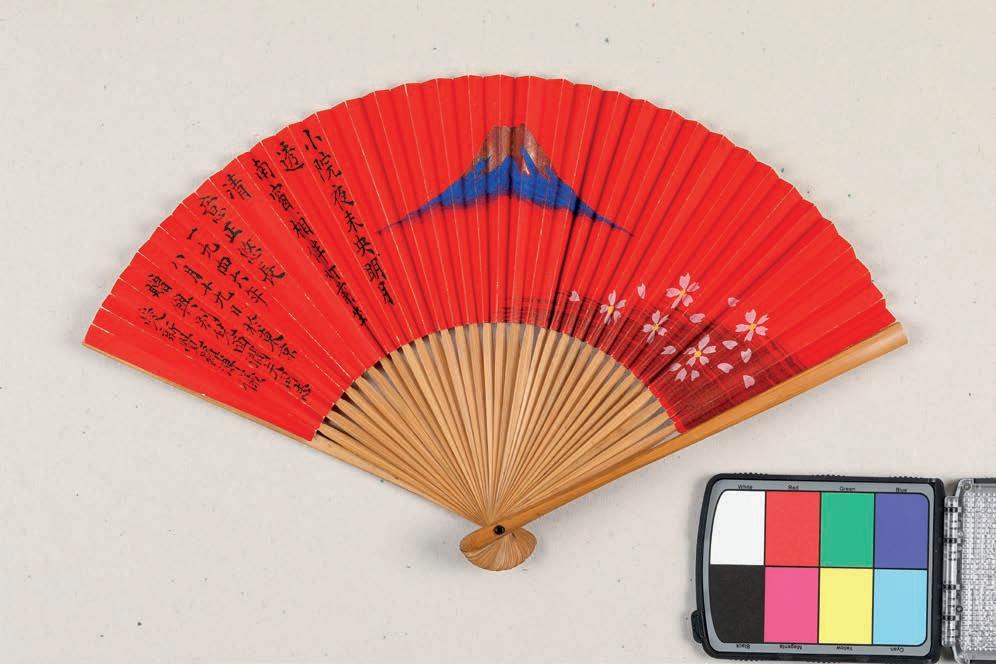

Puyi's arrives Tokyo to testify at the Tokyo Trial in 1946. 1946年溥儀到達東京,在遠東國際軍事法庭出庭作證。
Courtesy Rubezh 43 1 9 4 6 A Testament to Friendship The Red Fan 扇中摯情
Photo
Puyi testifies at the Tokyo Trail in 1946. (Georgy Permyakov sat behind) 1946年溥儀到達東京,在遠東國際軍事法庭出庭作證。(別兒面濶夫坐在後面)
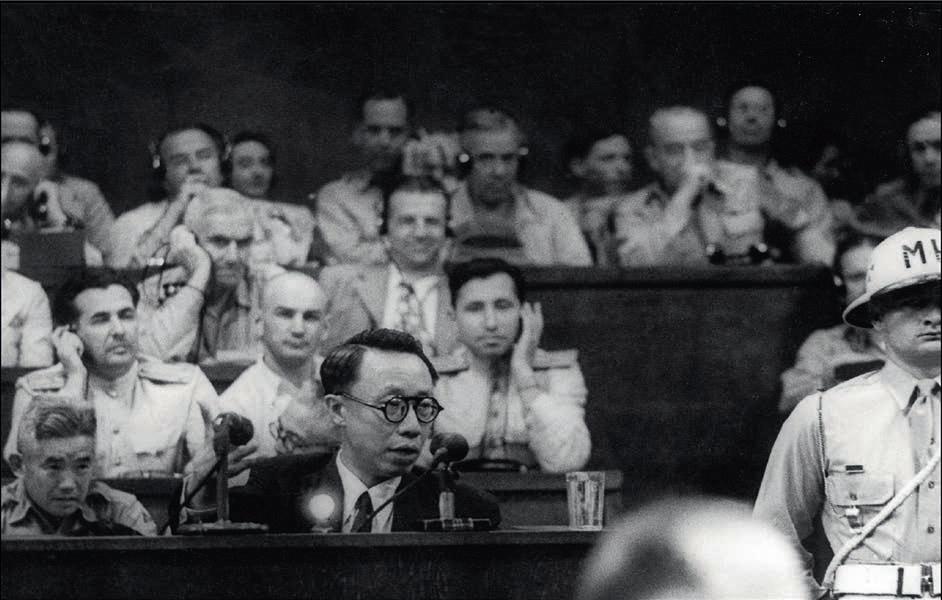 Photo Courtesy Rubezh
Photo Courtesy Rubezh
‘Bald-headed even in his twenties, Permyakov can be seen with Puyi and other Russians in video from the trial.’
A Testament to Friendship The Red Fan 扇中摯情
‘It is not dawn yet in the courtyard, the moonlight seeps through the south window. Sitting together by the lamp, the long silent mood endures. Dedicated to my comrade Permyakov in Tokyo on 19 August 1946, by Aisin-Gioro Puyi.’
With those words, Puyi turned a simple fan into a unique collector’s item of extraordinary value. Decorated with white flowers and a peak that resembles Mount Fuji, the Puyi fan’s central motif is (with a dash of historical irony) typically Japanese.
This is because Puyi inscribed the fan as a gift to Permyakov while they were in Tokyo. ‘The handwriting, brushwork, style and manner of the inscribed literature confirmed that it was written by Puyi,’ Mr. Wang Wenfeng, author and researcher for the Palace Museum of the Manchurian Regime, writes in an internal report for Phillips. ‘Little of Puyi’s calligraphy is known to exist. This fan serves as an extremely rare—and in all aspects marvellous—example.’
The fan has its origins in one of the major events of post-war Japan: the International Military Tribunal of the Far East, known as the Tokyo Trials. From 1946–1948, the Allied victors, including the Soviet Union, tried 28 Japanese Imperial Army officers and government officials on charges of war crimes.
A Soviet delegation that included Permyakov accompanied Puyi to Tokyo in August 1946. Bald-headed even in his twenties, Permyakov can be seen with Puyi and other Russians in video from the trial.[23] In his testimony Puyi portrayed himself as a powerless pawn of the Japanese, forced to adopt the Shinto religion and unable to rule his ostensible realm.
This collection includes a note, dated 4 April 2003, in which Permyakov relates the origins of the fan. After Puyi’s second day of testimony, on the evening of 19 August 1946, the interpreter sat with the prisoner in the garden of the Soviet embassy villa in Tokyo. Puyi was a ‘decent poet,’ Permyakov would recall. He asked the deposed emperor to compose poems on two fans.
Puyi inscribed a red fan for Permyakov and a blue one for the interpreter’s wife, Rimma. The couple eventually gave Rimma’s fan to the USSR Academy of Sciences, but they kept the red one.
Puyi inscribed the surface with a wuyan jueju (five characters quatrain), a classical Chinese poetry format with four lines to a stanza, each line consisting of five characters, Mr. Wang Wenfeng says.
By this time Puyi had spent only a year in the Soviet Union and had little understanding of the government’s attitude toward him, Wang states. No doubt he sought to curry favour by offering precious gifts such as this fan with his personal inscription.
45
[23] ‘Exclusive video of Emperor Puyi's Testimoy [sic] At The Tokyo Trials,” YouTube, uploaded by 298, 6 December 2016, https://www.youtube.com/watch?v=49NY-KZBdis.
Despite his lofty status as emperor, Puyi had been known to take a pen or brush in hand on other occasions in his life. During the Tokyo trials, the ex-emperor, eager to please his Soviet masters, agreed to sell his autographs. According to the Russian documentary Kitayskaya Igrushka Diktatora (‘Chinese Toy of the Dictator’), the Russians sat their prisoner at a table and had him sign his name, like a sports celebrity, for anyone willing to fork out cash.[25]
Composing poetry—as well as inscribing a fan—was not out of character for Puyi. Johnston notes that his former pupil ‘has an inherited poetic gift and has written much classic verse and even some of the modern verse.’ Puyi himself notes that from childhood he had loved writing poetry. And it was not unlike him to try to flatter the powerful figures in his life by composing verses. In April 1935, while traveling by ship to Tokyo, a seasick Puyi wrote a ‘toadying poem’ on Sino-Japanese friendship.[26]
More significantly, Puyi used the gift of fan to commemorate a turning point in one of the most important relationships in his life. As he would later do for Permyakov, Puyi inscribed a fan for his Scottish mentor and friend, Reginald Johnston, when the imperial tutor left China. In September 1930 Johnston travelled to Tianjin to bid his former pupil farewell. Early on the morning of the 15th, Puyi dropped by Johnston’s hotel bearing a fan on which he had copied an ancient Chinese poem of farewell. Puyi took his former teacher in his motorcar to the wharf. He even went aboard and sat in the Scotsman’s cabin until the last moment. The young man then returned to his vehicle. During the half-hour it took the steamer laboriously to turn around in the harbour, Puyi ‘sat in his car on the wharf and remained there as long as the ship was in sight.’
The farewell poem, as translated by Johnston, carries hints of the poetic view of friendship Puyi would later express on the Permyakov fan:
The road leads ever onward,
And you, my friend, go this way, I go that.
Thousands of miles will part us—
You at one end of the wide world, I at the other.
Long and difficult is the journey—
Who knows when we shall meet again? [27]
[25] ‘The Chinese Toy of the Dictator’ Китайская игрушка диктатора, [Kitaiskaya igrushka diktatora], YouTube, uploaded by Аманжол, [Amanzhol] 10 June 2016. https://www.youtube.com/watch?v=GJmH3my7jhI
[26] Aisin-Gioro Pu Yi, From Emperor to Citizen. Translated by W.J.F. Jenner, Oxford University Press, 1987, 280. [27] Reginald F. Johnston, Twilight in the Forbidden City. Victor Gollancz Ltd, 1934, 447."
小院夜未央,明月透南窗。 相伴燈前坐,清意正悠長。
一九四六年 八月十九日於東京 贈與別兒面濶夫同志 愛新覺羅溥儀
一首言淺意深的詩句,令紙扇搖身一變,成為極具意義的非凡瑰寶。 此扇以紅地為背景,中心繪有一座貌似日本富士山的山峰,一邊 以迎風飄揚的櫻花襯托。種種圖案,構成一道典型的日本風景 (卻隱含歷史的諷刺意味)。溥儀在東京時,把紙扇作為禮物贈送 別兒面濶夫。近代史學者兼偽滿洲皇宮博物院副秘書長王文鋒, 為富藝斯撰寫了一份內部研究報告,當中指出:「從字跡,用筆習慣, 風格上來看確是溥儀所寫。溥儀傳世的墨蹟十分有限,足見此扇面之 珍貴。」紙扇見證轟動全球的歷史時刻——遠東國際軍事法庭,亦即 東京審判。從1946至1948年,包括蘇聯在內的盟軍戰勝國以戰爭 罪名,在東京向二十八名日本皇軍軍官及政府官員進行審判。
1946年8月,由別兒面濶夫在內的蘇聯代表團陪同溥儀前往 東京。從審判的錄影片段中所見,二十多歲光頭的別兒面濶夫、 溥儀以及其他蘇聯軍官在一起。在溥儀在陳詞中以日本人的棋子 自居,聲稱被迫改信神道教,是個沒有權力的皇帝。
藏品中涵蓋一張別兒面濶夫寫於2003年4月4日的筆記,當中記載了 紙扇的由來。據筆記所述,溥儀在1946年8月19日晚,即第二天作證後 的夜晚,與別兒面濶夫於東京的蘇聯大使館別墅花園內坐在一起。
別兒面濶夫形容溥儀為一位「儒雅的詩人」。他邀請這位愛好作詩的 末代皇帝在兩把扇子上題詩。溥儀欣然答應,分別在一把紅地紙扇上 為別兒面濶夫題詩,以及一把藍地紙扇上為其妻莉瑪(Rimma)題詩。
夫婦二人最終把莉瑪的藍扇捐贈蘇聯科學院,只保存了紅扇。
扇面題字的內容,如王文鋒所說:「是一首五言絕句」。他又分析溥儀 此舉背後動機,提出「溥儀此時方到蘇聯一年時間,尚未完全弄清 蘇聯方面對他所持有的態度,也許是出於討好奉承的心裏為他的 蘇聯翻譯別兒面濶夫寫下了這個扇面。」
溥儀雖貴為“天子”,卻有著書生文人的行徑,習慣隨身帶備紙筆。 在東京審判期間,這位末代皇帝急於取悅蘇聯,樂意出售他的親筆 簽名。根據俄羅斯紀錄片《獨裁者的中國玩具》(Kitayskaya Igrushka Diktatora)拍下一幕,溥儀坐在桌前,像體育名人滿足球迷一樣, 為願意掏出鈔票的蘇聯人簽上大名。
作詩、題字,對溥儀來說順理成章。莊士敦曾經形容溥儀「與生俱來 的賦詩才華,能駕馭古典與現代詩體,創作甚豐」。溥儀曾說,他從小 就喜歡寫詩。若說他用詩歌來奉承權貴,也不無道理。1935年4月, 溥儀成偽滿洲國皇帝後首次訪日,當船隻從大連開往橫濱時,溥儀 為「日滿親善」作詩。溥儀在《我的前半生》中憶述「記得我在這次暈頭 轉向、受寵若驚的航程中,寫下了一首諂媚的四言詩」,幾天後「又在 暈船嘔吐之中寫了一首七言絕句」。 更重要的是,早在為別兒面濶夫題字贈扇的許多年前,溥儀已作過 類似的舉動,在人生極為重要的關頭,向亦師亦友的恩人道謝。 1930年9月,莊士敦在返回英國的前夕,特意到天津向他的前學生 告別。15日清晨,溥儀帶著一把紙扇來到莊士敦下榻的飯店。莊士敦在 《紫禁城的黃昏》記述道別一幕:「皇上一大早就來到我住的飯店, 一直和我在一起,直到我必須登船的時候為止。我們一起乘他的汽車 去碼頭……航行將近半個小時,他一直坐在停在碼頭的汽車上, 直到船隻從他的視野中消失為止。」這首離別詩正像莊士敦翻譯的, 承載著相似於別兒面濶夫扇面的友情詩意:
行行重行行,與君生別離。
相去萬餘里,各在天一涯。
道路阻且長,會面安可知。
47
Permyakov Memories
惜別後記
In his quest to stay in the Soviet Union, Puyi eagerly took on whatever chameleon disguise his captors required. He petitioned Stalin to be accept him in the communist party, allowing him to help build socialism in the USSR. Permyakov writes that the prisoner suggested a new role he might play.
‘Is the Soviet communist party a big party?’ Puyi asked. ‘Many millions.’
‘Are there any emperors in your party?’
‘Not a single one.’
‘Fantastic! I will be the first communist emperor.’ [28]
Unsurprisingly, a government that had executed its own royal family—the Romanovs— was uninterested in elevating a foreign ‘communist emperor.’
One curious aspect of Puyi’s life was his inability to care for himself. He had always relied on an army of servants for his every need. Lacking his retinue in Khabarovsk, he required his family to wait on him. They did not dare call him ‘emperor,’ Permyakov writes, but referred to him as ‘the Upper One.’ (By contrast with the imperial family’s caution, Permyakov did not hesitate to refer to Puyi by his royal title, huang shang. This was daring in these Stalinist times, even if his fellow Russians did not understand what he was saying in Chinese.) Puyi’s family paid him their respects when they entered his room each morning.
‘They bathed him,’ Permyakov writes. ‘They massaged him. They dried him. They almost spoon-fed him.’ [29]
Soon rumours spread that Puyi and the nephew who washed him were gay lovers, Permyakov writes. A hidden camera in the bathrooms disproved the gossip, but prison authorities banished most of Puyi’s entourage, leaving him without his primary servants—only his father-in-law and brother-in-law. Permyakov was away from the camp during this time. When he returned to Khabarovsk, he found the once-fastidious emperor in a dishevelled state, his shirt wrinkled and tie askew.
‘Puyi came to me and took my hand and put it to his lips and said, “Please return them,”’ Permyakov writes. ‘He was almost crying. Only then did I realize what had happened.’
Another Chinese reported that Puyi had been going to an upper floor and gazing out the window with a melancholy expression, as if considering throwing himself out. Permyakov felt a chill down his spine, for a scandal had ensued a year earlier when a Japanese general hanged himself. Puyi’s suicide would have caused an international uproar.
Permyakov urged the camp commandant to bring back Puyi’s nephews. ‘He has not learned how to comb himself, how to bathe, how to take care of himself,’ he told his superior. ‘He has a sick stomach. His nephew cooks special food for him.’
The authorities brought Puyi’s relatives back to Special Object No. 45. Permyakov gave Puyi two bottles of vodka to celebrate their return.
[28]
Permyakov, Georgy, Император пуи: пять
лет
вместе [‘Imperator Puyi. Pyat let vmeste’; ‘Emperor Puyi: Five Years Together’], Rubezh, No. 4 (2003), 304.
[29] Permyakov, ‘Emperor Puyi: Five Years Together’, Rubezh, 291.
溥儀積極尋求蘇聯庇護,欣然接受各式各樣的妥協。他請求斯大林 批准他加入共產黨,表示會協助蘇聯建設社會主義。別兒面濶夫記 述,溥儀曾構想他可扮演的新角色。
溥儀問:「蘇聯共產黨是一個龐大政黨嗎?」
別兒面濶夫答:「有好幾百萬黨員。」
溥儀問:「你們黨內有皇帝嗎?」
別兒面濶夫答:「一個也沒有。」
溥儀問:「太棒了! 我將成為首位共產主義皇帝。」
對於曾經處決羅曼諾夫王朝的蘇共來說,「共產主義皇帝」當然是 匪夷所思。
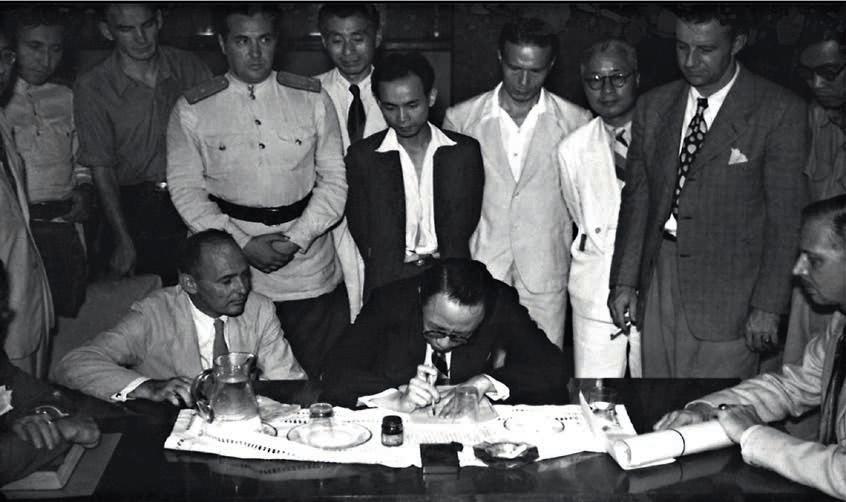
溥儀生為天子,婢僕成群,從未學過如何自理。在蘇聯時期,由於缺乏 侍從,他要靠家人伺候。別兒面濶夫寫道,在囚家屬都不敢稱他 「皇上」,而只叫「上邊」。(別兒面濶夫則不像他們小心謹慎,毫不猶豫 地稱呼溥儀「皇上」。雖然所內其他官員聽不懂漢語,但在斯大林的 專制時代,如此舉動相當大膽。)溥儀家屬每天早上進入他的房間 請安。
別兒面濶夫寫道:「他們給溥儀洗澡、按摩、乾身,而且幾乎是用 勺子喂他進食。」
別兒面濶夫又述:「很快便有謠言說,溥儀和給他洗澡的侄兒是同性 戀戀人。」這些流言蜚語,被浴室裝有的一個隱蔽攝錄機推翻,但所方 仍是調走了溥儀大部分隨行親屬,只留下岳父和妹夫。 此時,別兒面濶夫短暫離營。當他回到伯力,即發現曾經神采飛揚的 獄中皇帝蓬頭垢面,衣衫不整,領帶歪斜。
別兒面濶夫再述:「溥儀走到我面前,拉著我的手放到他唇上說: 『請把家人還給我。』他幾乎要哭。直到那刻,我才意識到發生了 什麼。」
據說獄中一名中國囚犯曾經目睹溥儀多次走上高處,神情憂鬱地 凝望窗外,似乎在考慮著一躍而下。別兒面濶夫聽得脊背發涼。 一年前,一位日本前軍官上吊自殺。假若溥儀輕生,國際社會定會 一片譁然。
別兒面濶夫懇求所長把溥儀的侄兒送返同一監營,說:「他不會梳髮, 不懂洗澡,完全不能自理。他有胃病,需靠侄兒特別照料膳食。」
當局同意把溥儀親屬調回第45號收容所。別兒面濶夫給了溥儀 兩瓶伏特,慶祝大家重逢。
49
Examination of the handwritting of Puyi at the USSR Embassy Tokyo, 1946.
Photo Courtesy Rubezh 1946年在東京遠東國際軍事法庭驗證溥儀的字迹。
Puyi turned to Yuyan.
‘Do you still have the calendar-embedded platinum watch with you?’ he whispered.
‘Yes, I am wearing it,’ Yuyan answered.
‘Please take it off,’ Puyi said.
Aisin-Gioro Yuyan

51
1 9 5 0
The
A Parting Gift
Watch 饋贈名錶

A Parting Gift The Watch 饋贈名錶
From the day it was sold in 1937, Puyi’s Patek Philippe Ref. 96 Quantieme Lune wristwatch was of immense value. It is one of only eight such timepieces known (five of them platinum, two gold). Phillips researchers have traced the watch to a sale in Guillermin, a Parisian luxury store then located on Place Vendome, home of some of the world’s leading jewellers. Aurel Bacs, senior consultant with Phillips in association with Bacs & Russo, has a theory: that it reached China through Sennet Frères and allied businesses importing luxury goods to the Far East (see the auction catalogue).
The documentation is clear that Puyi brought this watch to a Khabarovsk prison camp known as Special Object No. 45 and gave it to Permyakov. This was where the deposed emperor and his entourage were held, along with Japanese officers and Manchurian ministers captured by the Soviet Red Army in 1945. Puyi, as well as the other ranking officials, was accused of being a war criminal.
In his memoir, Yuyan, Puyi's nephew, states:

‘I was loyal to Puyi during our time in the Soviet prisons, so he rewarded me with a calendarembedded platinum watch which I was, undoubtedly, very familiar with. Back in the Manchukuo period, Puyi wore this exceptional watch day to day. I was particularly fond of it, not only because of its superb quality, but also the fact that it was such a personal item of Puyi!’ [30]
On 31 July 1950, two senior officials approached the former emperor’s cell. As Yuyan recalled, Permyakov interpreted, ‘The Soviet government has decided to let you return to China. You must swiftly pack your belongings and get set now. Hurry up!’
Puyi turned to Yuyan.
‘Do you still have the calendar-embedded platinum watch with you?’ he whispered.
‘Yes, I am wearing it,’ Yuyan answered.
‘Please take it off,’ Puyi said.
53
[30]
Jia Yinghua, Aisin-Gioro Yuyan: A Written Record of Heir Appointment by the Last Emperor, 124
‘Back in the Manchukuo period, Puyi wore this exceptional watch day to day. I was particularly fond of it, not only because of its superb quality, but also the fact that it was such a personal item of Puyi!’
Aisin-Gioro Yuyan
Aisin-Gioro Yuyan: A Written Record of Heir Appointment by the Last Emperor by Jia Yinghua. 《末代皇帝立嗣紀實》愛新覺羅‧毓嵒 作者:賈英華。
Without hesitation, Yuyan removed and returned his cherished platinum watch to Puyi, who passed it to Permyakov.
The Russian slipped the watch into his pocket.[31] Upon his death, he bequeathed the watch to his heirs.
The lower part of the dial of this watch had its coating removed. But why would someone do this to such a precious timepiece?
In 1982 Puyi’s long-time servant, Li Guoxiong, discussed this in an interview with Mr. Wang. (Puyi repeatedly mentions ‘Big Li’ in his autobiography, From Emperor to Citizen.) In 1924 the 13-year-old Li started working in the imperial palace as Puyi's servant, writes Mr. Wang, who interviewed Li more than 20 times in 1982. Li attended his master for 33 years, until 1957. A versatile craftsman, Li was Puyi's trusted handyman. The multitalented attendant knew how to take photographs, develop film, and repair cameras. His knowledge of mechanics and machinery also enabled him to fix Puyi’s watches and glasses.
In the Soviet Union, Puyi had too much time on his hands and was often bored, Li told Mr. Wang. He would idle away the time by painting, practising calligraphy, and copying literary allusions from folklore he had learnt. One day Puyi asked Li to open the watch and study its internal mechanisms.
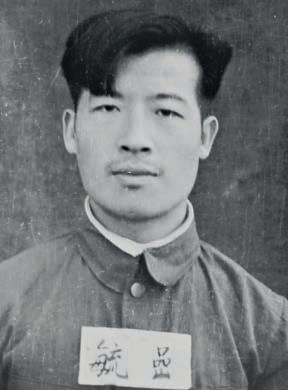
Wondering if the dial was made of platinum, Puyi instructed Li to remove the surface to examine the layers. After Li removed the lower half of the dial, Puyi stopped him, commenting that the base colour suggested that the material was not platinum.
 Yuyan and Li Guoxiong "Big Li" in prison camp. 毓嵒和李國雄(大李)在伯力 收容所。 © Palace Museum of The Manchurian Regime 偽滿皇 宮博物院
[31] Jia Yinghua, Aisin-Gioro Yuyan: A Written Record of Heir Appointment by the Last Emperor, 137
Yuyan and Li Guoxiong "Big Li" in prison camp. 毓嵒和李國雄(大李)在伯力 收容所。 © Palace Museum of The Manchurian Regime 偽滿皇 宮博物院
[31] Jia Yinghua, Aisin-Gioro Yuyan: A Written Record of Heir Appointment by the Last Emperor, 137
這枚百達翡麗型號96 Quantieme Lune腕錶,自1937年售出那天起, 已具驚人價值。它是目前所知傳世僅有的八例之一(五例為鉑金製, 兩例為黃金製)。富藝斯研究員經深入調查,追蹤到腕錶當時的交易 記錄,是來自專營奢侈品的法國高級名店Guillermin。該店坐落雲集 全球頂級珠寶商的巴黎凡登廣場(Place Vendome),是歷史悠久的 國際名錶舞臺。
富藝斯資深顧問Aurel Bacs推斷,腕錶疑經利威洋行及相關的歐美奢 侈品進口商引入中國。(請參閱拍賣目錄)
文件明確顯示,溥儀把這枚腕錶帶到伯力第45號收容所,最後交給別 兒面濶夫。1945年,蘇聯紅軍攻陷東北,打敗日本關東軍。溥儀宣讀退 位詔書,與近親及隨從計劃逃亡日本,途中被紅軍截獲俘虜,連同一 些日本軍官、滿洲國部長送入此收容所,以候審戰犯身份關押。
溥儀侄子毓嵒在回憶錄《末代皇帝立嗣紀實》中記述:
「在蘇聯時由於我對溥儀忠心耿耿,溥儀親手賞給找一塊鉑金日曆 手錶。這塊手錶我當然很熟悉,那是溥儀在偽滿皇宮時常戴在手上 的,不僅是那塊手錶品質非常好,我特別喜歡,那可是溥儀親自帶過 的啊!」
回憶錄又說,1950年7月31日,蘇聯伯力45號收容所所長及副所長 突然進入溥儀監倉,由別兒面濶夫傳譯:「蘇聯政府決定讓你們返回 中國。你們現在就收拾行裝,準備出發。你們可要動作迅速些。」
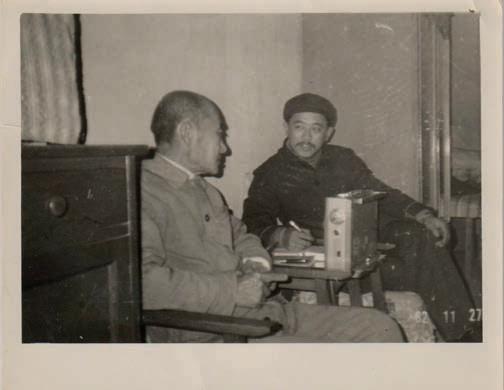
毓嵒記錄他們的如下對話。
溥儀輕聲問:「那隻鉑金日曆表,你還帶著嗎?」 毓嵒:「我帶著呢。」
溥儀:「那你先摘下來。」
「隨之我毫不遲疑的把那只帶著日曆的心愛的鉑金手錶摘了下來, 交到了溥儀手中。沒想到溥儀竟轉手把這手錶遞給了那位蘇聯翻譯 別兒面濶夫。他沒有拒絕,悄悄地擱在了口袋裏。」
腕錶錶盤的下半部塗層被移除。可是,為何有人這樣做呢? 1982年,王文鋒與李國雄進行的訪談中,對此有過交代。李國雄,是 溥儀自傳《我的前半生》多次提及的隨從「大李」。1924年,13歲的他入 宮被聘為溥儀的隨侍,直到1957年33年間,一直緊隨溥儀。王文鋒在 1982年內訪問了李國雄逾20次,形容他「心靈手巧,是溥儀身邊的 能工巧匠。他會照相、洗相、修理照相機、修手錶、修眼鏡,凡是修理 的活溥儀都會找到他。」
王文鋒引述李國雄:「在蘇聯期間,溥儀無所事事,閑極無聊,便去畫 畫,寫藝術字,抄寫一些世俗典故,來打發日子,還做出了許多無聊 怪異的舉動。有一天,溥儀拿著這塊鉑金手錶要李國雄打開來研究 研究它的構造功能。」
「手錶打開後,溥儀就問這錶盤是鉑金的嗎?並讓李國雄拿工具, 探個究竟。移除了涂層的下半部之後,溥儀說底盤都出來了,不是 鉑金的。」
Wang Wenfeng (on right) interviewing Li GuoXiong "Big Li"(on left) in 1982. 1982年,王文鋒(右 )採訪李國雄(大李) (左)。 © Palace Museum of The Manchurian Regime 偽滿皇宮博物院
55
Farewell
Puyi was no fool. He knew that giving his interpreter a wristwatch—however valuable— wouldn’t halt the repatriation process or change a superpower’s international policy regarding a prisoner wanted as a traitor and collaborator in his homeland. Rather, the gift, like the fan Puyi gave to Johnston, was clearly a thank-you to Permyakov for teaching him and protecting him—an expression of friendship.
‘Hurried by the Soviet officials while waiting for other inmates to pack up their luggage, Puyi was eventually hustled to the car parked by the camp entrance,’ Mr. Wang says. ‘The group was driven straight to the train station, where they soon boarded for the ride back to China. This farewell showed the relentless side of Permyakov as he strictly served his duties.’
Permyakov, however, says the good-bye was friendlier than that. Prison officials threw a farewell banquet for Puyi and his entourage in the cafeteria that evening. The emperor and his relatives sat at their own table, drinking beer and vodka as the camp’s new director, Capt. Asnis, thanked them for their discipline.
At the train station the Russians separated Puyi from his family and the Manchukuo ministers. Permyakov remained with the emperor. A convoy of soldiers guarded the train, fearing that the Soviet Union’s Cold War adversaries would create an exaggerated propaganda campaign if the emperor came to any harm. Despondent about his return, Puyi said nothing. Permyakov did his best to cheer up the prisoner.
‘The new Chinese authorities are totally different from Chiang Kai-shek,’ Permyakov told him. ‘The previous one liked shooting people. Mao Zedong is kinder. You’re facing a few years of re-education, and then freedom.’ [32]
Permyakov and Captain Shkuro, who commanded the military guard, dined with Puyi. Dinner came with a bottle of Cahors wine. The emperor and his interpreter sat at a foldable table by the window. Permyakov did his best to lighten Puyi’s spirits, singing Russian lullabies and telling funny stories in broken Russian and pidgin Chinese.
The next day, 1 August 1950, Permyakov rose early and found Puyi standing by the window in the corridor, staring out at the forest they were passing through. They breakfasted together and drank more Cahors. The two sang the drinking song ‘Kalinka.’ Permyakov again told a fable in broken Russian, drawing laughter from Puyi.
That evening, after passing Grodekovo station, the train rumbled through tunnel after tunnel until it reached the border station at Suifenhe.[33]
‘In the morning I told Xuantong that we are already in China,’ Permyakov writes. ‘He became pale.’ A colonel from the Soviet Ministry of Foreign affairs entered and asked Puyi to come out to the platform.
There, the Chinese surrounded their former emperor and led him away.
Recalls Permyakov: ‘Puyi was walking among them, proud and straight like a mast. He was holding his hands behind his back.
‘I never saw him again.’
Forever 後會無期
[32]
лет вместе
Permyakov,
Georgy,
Император пуи: пять
[‘Imperator Puyi. Pyat let vmeste’; ‘Emperor Puyi: Five Years Together’], Rubezh, No. 4 (2003), 307.
[33] Permyakov, ‘Emperor Puyi: Five Years Together’, Rubezh, 308.
溥儀即使留蘇心切,但也只能面對現實,明白饋贈諸如這枚名錶 瑰寶,也無法買通對方叫停遣返。更遑論當前面對的,是超級大國的 外交政策——協助盟國遞捕賣國叛徒。因此,這份厚禮,就像溥儀昔日 贈別莊士敦那把紙扇一樣,是末代皇帝向獄中恩人致謝,感激對方的 教導和保護,紀念一段誠摯友誼。
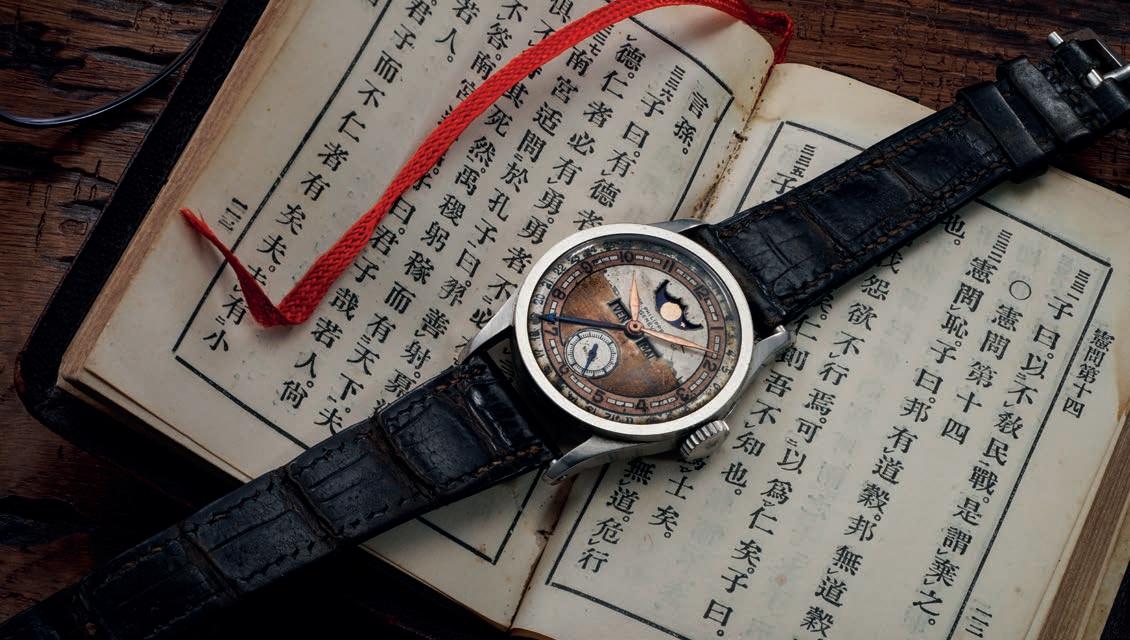
王文鋒講述「溥儀等人收拾完畢,在蘇聯人催促下,當即坐上了停在 門口的汽車,一直到了火車站,踏上了回國的路程」,從宣佈遣返、 監視離營、沒收財物,以至押解出境,「別兒面濶夫是公事公辦毫 不留情的。」
然而,別兒面濶夫的版本卻帶著一份親和。據他憶述,當晚收容所 官員在食堂為溥儀等人舉行了告別晚宴。溥儀及親屬、侍從們坐 在他們專屬的餐桌,喝著啤酒和伏特加,新任所長阿斯尼斯(Asnis) 對他們的良好紀律表示感謝。
在火車站,蘇聯局方把溥儀等人與同被遞送中國的滿洲國戰犯 分成兩批。別兒面濶夫被安排留在溥儀那邊。大批蘇聯隊軍守衛著 火車,以免溥儀一旦受到任何傷害,冷戰對手會借勢煽動輿論。
溥儀歸國的大局已定,在列車上惶然惆悵,默不作聲。別兒面濶夫 盡力開解他說:「新中國與蔣介石政府完全不同。國民黨人喜歡槍斃 異己。毛澤東則比較仁慈。你將接受幾年教育,便會重獲自由。」
別兒面濶夫、指揮軍事衛隊的史庫羅(Shkuro)上尉,與溥儀共度 晚餐,並享用一瓶法國卡奧爾葡萄酒。溥儀與別兒面濶夫坐在窗邊, 以打開著的摺疊桌作為餐桌。別兒面濶夫費煞思量,唱起俄羅斯 搖籃曲,用幽默的俄語、漢語說著故事,努力緩解溥儀的不安情緒。 翌日,即1950年8月1日,別兒面濶夫早起,看見溥儀倚在走廊窗邊, 盯著列車飛馳的廣漠原林。二人同吃早餐,又喝著卡奧爾酒,還哼起 下酒歌《卡林卡》。別兒面濶夫又用俄語講述一則寓言故事,引來 溥儀大笑。
當晚,列車經過蘇聯遠東濱海邊疆區的格羅捷科沃站,轟轟隆隆地穿 越一條又一條隧道,最終抵達中蘇邊境車站綏芬河。
別兒面濶夫聚述:「隔天早上,我告訴宣統皇帝,我們已經到達 中國了。」說後,「他馬上臉色蒼白。」蘇聯外交部的一位上校進來 車廂,請溥儀移步至月臺。
隨即中國人包圍了這位前皇帝,帶走了他。別兒面濶夫續說: 「末代皇帝走在人群中間,像參天桅杆一樣,鶴立雞群。他握著雙手, 放在背上。」
「他從此一去不返。」
57
An Emperor's Eye-View of China 御筆遺稿
The collection includes a notebook in which Puyi discusses numerous aspects of Chinese culture, from childbirth to old legends. It is a fascinating window into Puyi’s thought, as if the emperor were peeking out a fortress arrow slot at what he knows or imagines to be the daily life of his realm.
Puyi began putting pen to paper from the time he arrived in the Soviet Union. He and his entourage landed in Chita and were driven to a nearby resort called Molokovka. At first he was afraid the Soviets would execute him, Permyakov writes in the Vladivostok-based journal Rubezh. Instead, the prisoner was surprised to find himself well-treated.
Later, in Khabarovsk, Permyakov assigned the prisoner to write about China, in part to distract Puyi from his obsessive melancholy. He filled a school-style notebook with musings on the materials he read and Chinese life as he knew it. The content, diverse and jumbled, covers the customs and habits of his homeland, as well as general knowledge of daily life. The topics vary widely: childbirth in traditional China, the remarriage of widows, the etiquette of hosting guests, the burning of incense, and even regional cuisines.
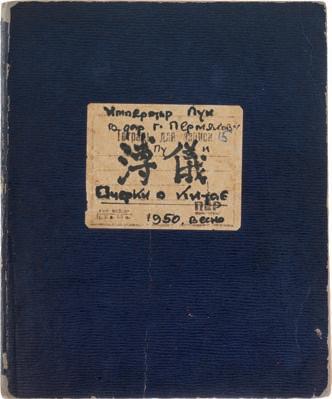
Puyi also passes along rumours about rare regional cuisines, such as eating live mice dipped in honey, or cooking a cat and a snake together—a dish called ‘fight of a dragon and a tiger.’ He admits these dishes are ‘not necessarily true.’
In the section on Jizijin—the collection of blended characters—Puyi offered examples of auspicious words and phrases such as zhaocai jinbao (ushering in wealth and prosperity), huangjin wanliang (10,000 taels of gold), xiqi mantang (the house full of joy), and rijin doujin (receiving ten litres of gold every day).
‘There are plenty of such hybrid characters in China,’ he notes. ‘I hereby record what I know, mainly the popular ones.’
Beyond this notebook, Puyi was known to do other writing in Soviet Union. During language lessons, he jotted about the fate of Russian monarchs. ‘I found interesting data about Russian rulers starting with ancient times in a history manual,’ Permyakov writes. ‘Puyi wrote it down with a wonderful American Parker pen in his notebook.’ [34]
But everything he wrote in Russia remained in that country when Puyi left, his nephew Aisin-Gioro Yuzhan recalls. When authorities announced Puyi repatriation in 1950, the prisoners had to surrender their writing. ‘Even a faint note had to stay in the room,’ he recalls.[35]
The interpreter took Puyi’s manuscripts home and preserved them there until his death, when they passed on to his heirs.
[34] Permyakov, Georgy, Император пуи: пять лет вместе [‘Imperator Puyi. Pyat let vmeste’; ‘Emperor Puyi: Five Years Together’], Rubezh, No. 4 (2003), 293.
[35] Wang Wenfeng, ‘A brief biography of Puyi,’ internal report for Phillips, 2023, 7.

59
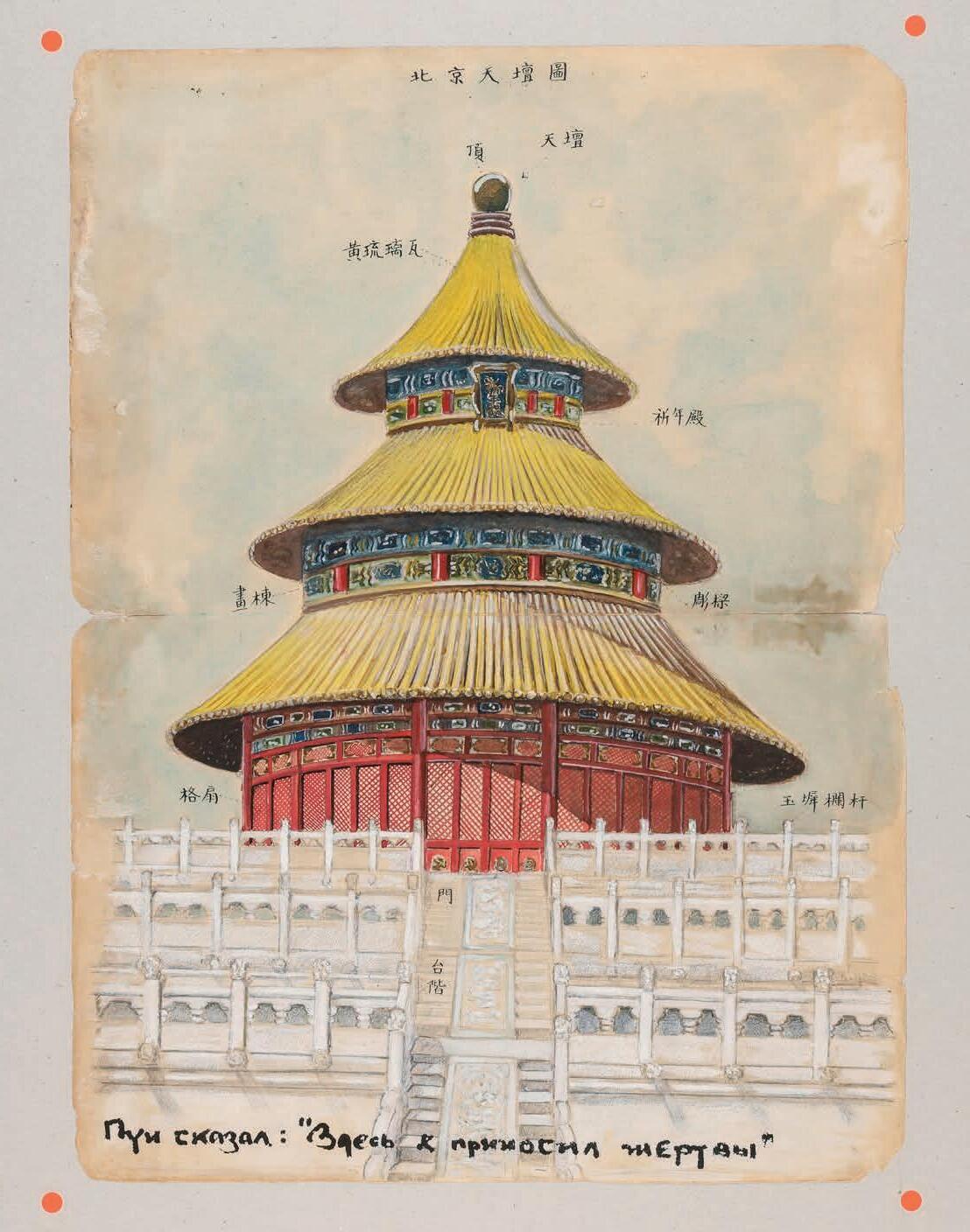
Watercolours by Gobulo Runqi, Puyi’s brother-in-law, likewise offer a fascinating glimpse of a palace perspective on the Chinese homeland and culture. It is an idealized vision, but one which dwells on everyday life rather than in the pomp and ceremonies of the imperial court. The illustrations are often graced with whimsy. Street barbers trim hair. Revellers perform a dragon dance. Workers saw timber. Farmers haul corn in wheelbarrows. A white-bearded teacher doses at his desk while children run wild around him. The paintings themselves are annotated throughout in Chinese by Puyi, and Permyakov offered explanatory notes on many of the works in Russian—sometimes on a separate sheet. On one of these, Permyakov credits Runqi and adds, ‘Danming river people: born in a boat, all their lives in a boat, die in a boat.’
One image of portrays a woman and child on a houseboat. The interpreter writes, ‘Puyi said, “If I had real power, I would have given housing to all danmings on land.”’ In several instances Permyakov notes the prisoner’s impressions. On a picture of a junk on the Yangtze River, he inks, ‘Puyi liked this drawing very much.’ Another painting depicts the Temple of the Earth; the interpreter adds, ‘Puyi said, ‘I brought sacrifices here.’” In an explanatory note about an illustration of an ornate arch, Permyakov explains that in old China a married woman by law could not leave her home. ‘One night there was a fire,’ he notes, ‘and a lady decided to burn alive rather than rescue herself and come out of the gate. … They erected this marble arch to her.’
A painting of a man in a white coat sitting at a desk, undertaken at Puyi’s initiative, is introduced, ‘Puyi’s brother-in-law. Chinese Scientist.’ On the painting itself Permyakov adds, ‘Puyi helped draw this sketch.’
A painting of a girl and two men is labelled, ‘Umbrella and raincoat. Puyi liked the girl under umbrella.’ And a painting of a dragon dance is labelled, ‘Puyi admired this drawing for long periods of time.’ Sometimes simple family life is depicted. A picture from Lunar New Year shows two women making dumplings while a child looks on and a man in traditional garb bows to his ancestors in the next room.

61
From Left to Right, Pujie, Puyi and Runqi 從左到右: 溥傑,溥儀和潤麒 © Palace Museum of The Manchurian Regime 偽滿皇宮博物院
本珍藏所涵蓋的一本手寫筆記,記錄了溥儀所知林林種種的中國 文化,內容涵蓋生育問題乃至神話傳說。這是了解溥儀思想的一扇 珍貴窗口。
溥儀自抵達蘇聯即開始提筆寫稿。蘇軍把他與家人俘虜在赤塔, 然後車往附近的莫洛科夫卡(Molokovka)度假村。別兒面濶夫在 海參崴雜誌《Rubezh》撰寫的文章中,記載溥儀起初害怕會被蘇聯 處決,結果出奇地得到良好待遇,令他大感詫異。
別兒面濶夫引述溥儀在另一本筆記上寫道:「日本將軍......一直在 嚇唬我,說蘇聯的共產主義十分可怕。『在蘇聯,他們會搶劫你的 財物,殺掉你或吊死你』。但在莫洛科夫卡,蘇聯人優待我, 給我食物,甚至重視我。我可以散步。那裏有森林,空氣很清新。 蘇聯人親切有善,臉上常掛笑容。」
後來在伯力,別兒面濶夫讓溥儀書寫關於中國的文章,以減輕他 的寂寞與鄉愁。他在一本作業本上抄滿了中國文化習俗。筆記內容包 羅萬有,東拼西湊,涵蓋中國民間風俗,以及日常生活的大小事項。紛 紜的主題包括傳統生育文化、寡婦再婚、接待客人的禮儀、燒香,甚至 地方美食。
溥儀記錄了一些珍奇食品,例如「未生毛之小鼠用蜜拌好來吃」、 「將貓和蛇同喫者,名為『龍虎鬥』」,但也補注「傳說而已」。
在「集字錦」中,溥儀列舉了一些饒富趣味的字體組合,包括「招財 進寶」、「黃金萬兩」、「喜氣滿堂」、「日進鬥金」。因例子繁多,「今僅 就素知及一般所知者,書錄如右」。
除此筆記本外,溥儀還有其他筆記本。在語言課上,他記下了俄國
君主的命運。別兒面濶夫寫道:「溥儀用一支精美的美國派克筆,在筆 記本內寫上『我在一本歷史書中,發現俄國歷代君主的有趣事跡』。」
1950年蘇聯政府遣返溥儀等人,要求所有隨身物都得留下,
即使一頁筆記,也無法幸免。溥儀侄兒毓嶦在回憶錄《末代皇帝 二十年》中記述:「蘇聯兵的監視下,收拾自己的東西,然後再接受 嚴格的檢查,蘇聯檢查的重點是不許帶走自己寫的東西,即使是 片紙隻字也要留下。」
別兒面濶夫將溥儀的手稿帶回家小心保存,直至逝世後方由家人 繼承。
珍藏中涵蓋一批郭布羅.潤麒繪畫的水彩畫。潤麒是溥儀妻舅, 即婉容胞弟,同時是溥儀妹夫,即韞穎丈夫。水彩畫絢麗雋永,題材 紛紜,鮮有地從皇族角度勾勒民間風俗,洵屬難得。畫中景色、 世情,猶如烏托邦式祥和美滿,不是末代皇朝理應留戀的宮廷盛宴、 禮樂儀式,而是庶民生活、人間百態。水彩畫宛轉美妙,滲雜一種 妙想天開的奇趣。從街頭理髮、七彩舞龍、鋸木勞動、農作收成, 乃至私塾裏老師打盹、稚童嬉鬧的歡欣景象,興味盎然。
溥儀在畫中所有景物旁邊都寫上中文注釋,仔細說明一草一木。 別兒面濶夫還為大部分作品加上俄文解釋,有直接寫在畫上,也有 另記於紙上。在其中一作,別兒面濶夫標示它為潤麒所繪,另補充: 「蜑民:生於船,活於船,卒於船。」
其中一幅題為「江上船中居民圖」的畫作中,潤麒描繪一名婦女 與孩子在船上生活的情景。別兒面濶夫的注釋寫道:「溥儀說: 『如果我有真正權力,我會安置船民到陸上舒適的房舍定居。』」
在「長江風船圖」中,注釋表示:「溥儀非常喜歡這幅畫」。在「北京 天壇圖」中,注釋表示:「溥儀說:『我把祭品帶到這裏』。」在「節孝 牌坊圖」中,別兒面濶夫說明畫中宏偉的石牌坊為何物,其注釋表示: 「一天晚上,某家戶發生了一場火災。家中婦人被活活燒死,而不是 自救,走出大門。...他們為她建立了這個節孝牌坊。」
一幅掛著對聯「讀有用之書行無媿之(路)」描繪「文人書房」畫作中, 有一位身穿長褂的文人在窗邊閱讀。據別兒面濶夫筆記所述,文人 由溥儀負責起稿。其注釋表示:「溥儀妻舅。中國科學家,又稱: 「溥儀協助繪畫人物草稿。」
在「天氣陰雲降雨圖」中,別兒面濶夫加以標簽標示:「雨傘和雨衣。 溥儀喜歡傘下的女子」。在「耍龍燈圖」中,標簽說:「溥儀一直欣賞 此畫」。
畫作題材亦涵蓋節日習俗,例如在「舊曆年圖」中,兩名婦人在 包餃子,拿著冰糖葫蘆的小孩在一旁看著,隔壁一名穿著傳統服裝 的男士在神位前跪拜祖先。


63
‘Before I had heard this to the end I burst into tears. My motherland had made me into a man.’
Aisin-Gioro Puyi
A New Citizen (1959-1967)
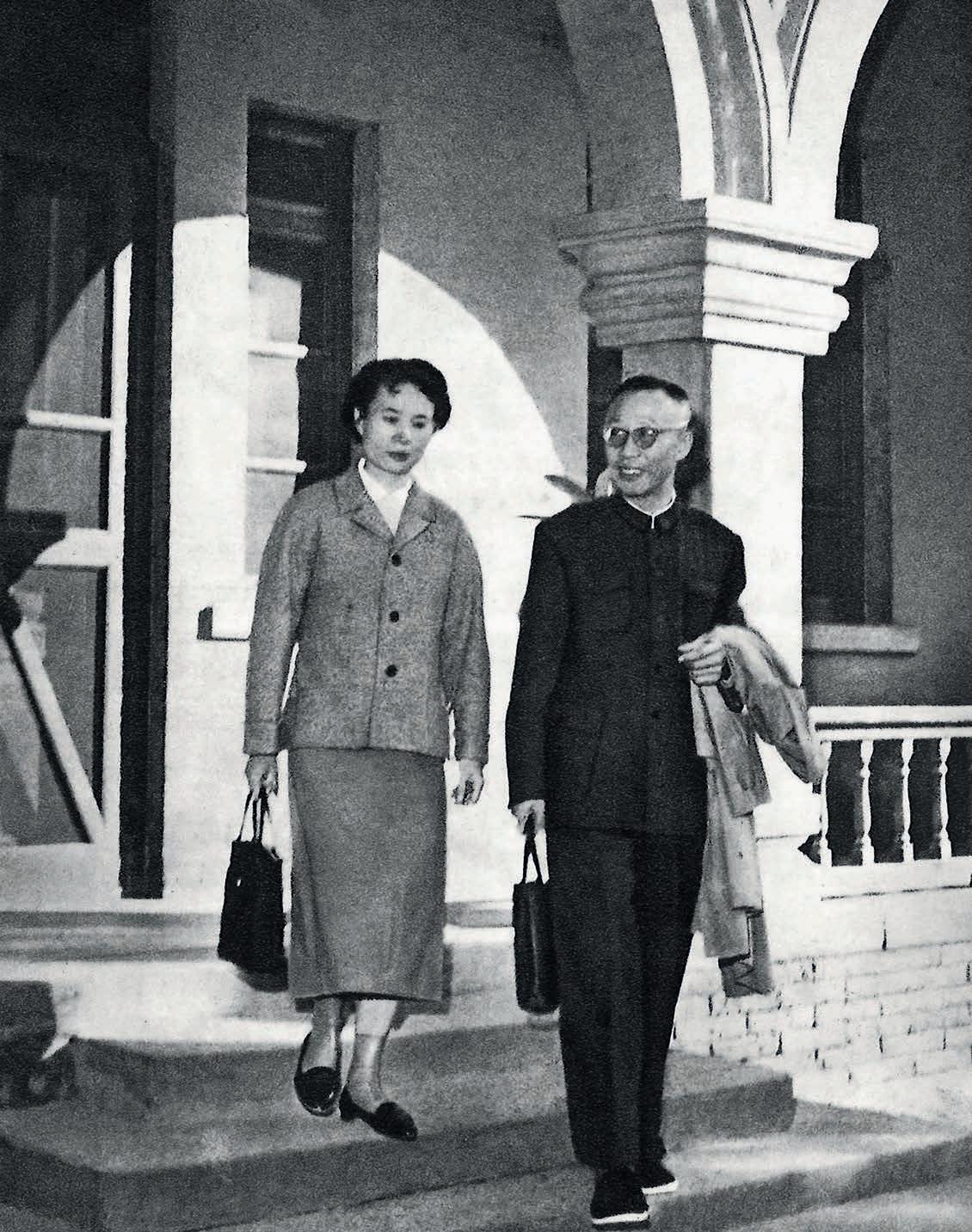
Puyi and his wife Li Shuzhan leaving home to work. 溥儀和妻子李淑賢離家去上班。 © Palace Museum of The Manchurian Regime 偽滿皇宮博物院 65 1 9
5 9
新中國人
Left: Puyi receiving amnesty on 4 December 1959.
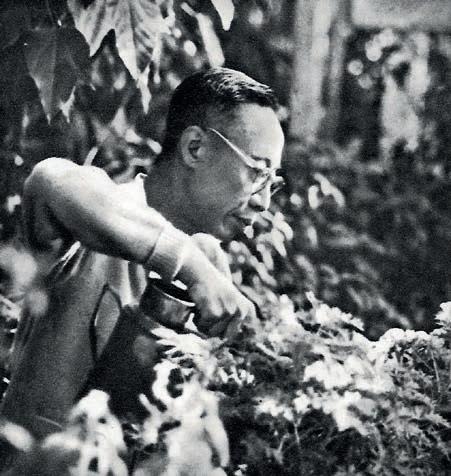

左: 溥儀於一九五九年十二月四日蒙收特赦。
Right: Puyi while working at the Beijing Botanical Garden.
右: 在北京植物園工作時的溥儀。
© Palace Museum of The Manchurian Regime 偽滿皇宮博物院
Puyi began to write his autobiography "From Emperor to Citizen" in the Fushun War Criminals Management Office.

溥儀在撫順戰犯管理所開始寫自傳, 也就是『我的前半生』的雛形。
© Palace Museum of The Manchurian Regime 偽滿皇宮博物院
A New Citizen (1959-1967) 新中國人
In August 1950 Puyi, along with other Manchukuo collaborators, arrived at the Fushun War Criminals Management Centre. After a decade of ‘thought reform,’ the centre pardoned these prisoners in December 1959.
In a concluding ceremony, a representative of the Supreme People’s Court showed up to read from the stage an announcement. It read:
‘The war criminal Aisin-Gioro Puyi, male, 54 years old, of the Manchu nationality, and from Peking, has now served ten years detention,’ the court declared. ‘As a result of remoulding through labour and ideological education during his captivity, he has shown that he has genuinely reformed.’
The humbled emperor was to be released. ‘Before I had heard this to the end I burst into tears,” Puyi recalls. ‘My motherland had made me into a man.’ [36]
Arriving in Beijing, Puyi found himself transformed into a common citizen of the new China. He lived with his sister and joined the morning street-sweeping brigades. In 1960 he was assigned to the Peking Botanical Gardens. The former prisoner who had once cultivated tomatoes, beans, and eggplants in Soviet Union spent half of each day learning more about planting and looking after seedlings, and transplanting them in hot houses. The rest of his time was devoted to studying and writing his autobiography.
Eventually he was appointed a literary and historical worker for the National Committee of the Chinese People’s Political Consultative Conference. In 1962 he married Li Shuxian, a nurse.
Toward the end of his life an emperor who had been unable to bathe himself or tie his own shoes found himself able to care for another person.
‘I found Puyi an honest man, a man who desperately needed my love and was ready to give me as much love as he could,’ Li said in a 1995 interview. ‘When I was having even a slight case of flu, he was so worried I would die, that he refused to sleep at night and sat by my bedside until dawn so he could attend to my needs.’ [37]
Puyi died of kidney cancer and uremic syndrome in 1967 at age 61 in Beijing.
1950年8月,溥儀與其他滿洲國戰犯,抵達撫順戰犯管理所。自此, 他接受十年的「思想改造」,至1959年12月特赦釋放。
中華人民共和國最高人民法院發出特赦通知書,代表人員在臺上 宣讀:
「罪犯愛新覺羅.溥儀,男性,五十四歲,滿族,北京市人。該犯關押 已經滿十年,在關押期間,經過勞動改造和思想教育,已經有確實改 惡從善的表現,符合特赦令第一條的規定,予以釋放。」
溥儀記述:「不等聽完,我已痛哭失聲。祖國,我的祖國呵,你把我造 就成了人!……」
到達北京後,溥儀發現自己變成了新中國的一個普通公民。他和 妹妹同住,加入早上的掃街隊伍。1960年,他被分配到北京植物園任 園丁。溥儀在蘇聯期間,種植過番茄、豆類和茄子。這裏他每日花半天 時間學習更多關於種植和照顧幼苗的知識。其餘時間用於學習和 撰寫自傳。
其後,溥儀出任全國政協文史資料研究委員會專員。1962年,溥儀 與護士李淑賢結婚。
「我發現溥儀是一個真誠的人。他迫切需要我的愛,亦盡可能給予我 無限的愛。當我有稍有不適如染上感冒時,他非常擔心我會死去, 晚上不眠不休,坐在我的床邊直到天亮,以便照顧我的需要。」
李淑賢在1995年的一次訪問中如此說道。1967年,溥儀因腎癌及 尿毒症病逝北京,享年61歲。
[36] Aisin-Gioro Pu Yi, From Emperor to Citizen. Translated by W.J.F. Jenner, Oxford University Press, 1987, 472. [37] Li Xin, ‘Pu Yi's Widow Reveals Last Emperor's Soft Side,’ IPS, 8 April 1995. Accessed 7 March 2023 at http://www.hartford-hwp.com/archives/55/045.html.
67
A Research Journey
研究之旅
When an owner entrusts an auction house with the sale of a treasured artefact, the auctioneer must establish its provenance.
In the case of Emperor Puyi’s watch, Phillips launched a research project perhaps unprecedented in the annals of auctions. A worldwide team of watch experts, historians, journalists, and scientists undertook a three-year investigation into the origins of the Patek Philippe Reference 96 Quantieme Lune.
The watch is priceless in its own right—one of only eight known, and one of three with this dial configuration. But its value was heightened with the mystique of its backstory. Aisin-Gioro Puyi, the last emperor of the Qing dynasty, had given the watch to his interpreter while he was imprisoned in the Soviet Union (1945-1950).
More than three years later, Phillips has proven the watch’s provenance—as well as that of Puyi’s notebook, a fan he inscribed, and fifteen watercolours by his brother-in-law. The evidence came in three stages.
1. The Journalists
During an internet search, Phillips’ team discovered an article about Georgy Permyakov, Puyi’s interpreter, that had run in the South China Morning Post in May 2001. A husbandwife team of journalists, Russell and Nonna Working, had interviewed Permyakov and seen many of the items in Permyakov’s home.
Now living in suburban Chicago, they still have the original negatives of Russell’s photos of Puyi’s notebook, the fan, and the watch arrayed together on Permyakov’s desk. These photographs placed the watch and related artefacts in Permyakov’s home two decades earlier, confirming the provenance that the mementos had belonged to the interpreter. Nonna’s further research turned up a memoir article by Permyakov about Puyi, as well other publications in Russian confirming the relationship of the two men.
2. Scientists and Scholars
When the owner entrusted the timepiece to Phillips in September 2019, an internal analysis established that all its parts were all original.
The company also sent the artefacts to ArtDiscovery, a London laboratory that uses radiocarbon dating and microscopic examination to confirm the age of the fan, notebook, watercolours, and other objects. The lab also conducted a literary and stylistic analysis, looking for the hand of Puyi and his brother-in-law in the writing and paintings. This evidence, too, confirmed the provenance.
Yet there was a mystery in the watch dial itself: Someone had removed half of the surface. ‘The first question we had was, “Why is the dial in that condition?”’ says Thomas Perazzi, head of Phillips watches, Asia. ‘We knew it was not from aging, it was not water damage. We knew that it was done by someone. But we didn’t know who was and the reason.’
The answer would come in a later phase of the investigation. And fascinatingly, the dial itself would help establish the provenance.
作為一家深具信譽的拍賣行,一旦受到藏家委托拍賣名貴珍藏,必會 肩負起為藝術品端本正源的重任。
富藝斯接獲末代皇帝溥儀遺珍的考據工作,有感任重道遠,遂展開相信 是拍賣史上空前未有的宏博研析。我們組織了一個匯集鐘錶專家、歷史 學家、資深記者及科學家的跨國團隊,對據悉為溥儀御用的百達翡麗 型號96「Quantieme Lune」腕錶進行了歷時三年的深入調查。
這枚百達翡麗腕錶本身的矜貴程度已經毋庸置疑,連它在內的同 型號存世品僅得八枚,具有同類錶盤配置的僅三枚。其至尊顯赫的 來源出處、撲朔迷離的流傳過程,更為腕錶倍添非凡的深層意義。 這枚曠世名錶,據說由末代皇帝愛新覺羅.溥儀在囚蘇聯期間 (1945–1950年)贈予其俄語翻譯。
三餘年後,經過研究團隊多番努力,最終彙整出藏品來源的詳實報告, 分三階段搜證分析溥儀腕錶、筆記本、題詩紙扇及皇親潤麒繪畫的 15幅水彩畫。
(一)記者實錄
富藝斯研究團隊在初期的網上搜索中,發現一篇2001年5月由《南華 早報》刊印的文章,內容有關溥儀翻譯別兒面濶夫(Georgy Permyakov)。 作者羅素.華京(Russell Working)及同為記者的妻子羅娜.華京 (Nonna Working)曾經採訪別兒面濶夫,在其府上親眼看過藏品。
華京夫婦現居芝加哥市郊,仍然保留著羅素當年拍攝的菲林底片。 相中顯示別兒面濶夫住所桌上,排列著溥儀筆記本、紙扇和腕錶。照片 記錄了物品二十年前的實況,證明別兒面濶夫曾為藏品物主。羅娜仔細 追查,發現別兒面濶夫曾撰寫一篇憶述溥儀往事的文章,以及其他記載 兩人關係的俄文刊物。
(二)科學鑒定與藝術考據
2019年9月,現時藏家委托富藝斯研究腕錶及珍藏各品。經本行分析, 確定腕錶及每件藏品均為原製,未經加工。
我們把藏品送到位於倫敦的藝術科研機構「ArtDiscovery」,以實驗室 放射性碳測試及顯微鏡檢查確認紙扇、筆記本、水彩畫與其他物品 的年齡。機構同時為藏品進行藝術風格分析,推敲其文字、繪畫是否出 自溥儀及潤麒,最終亦提供了相關證據。
然而,錶盤經移除半面表層,留下一大謎團。富藝斯鐘錶部亞洲區主管 彭偉時(Thomas Perazzi)說:「我們的先決問題是,錶盤何以出現如此 狀況?這顯然無關老化、積水,而是人為。但經手人及其動機為何,我們 實在毫無頭緒。」
謎題在研究的後期階段漸露曙光。有趣的是,腕錶品相成為藏品來源的 考據關鍵。

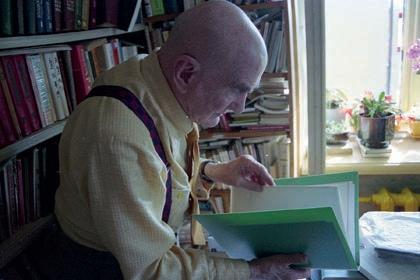

69
Photos taken by Russell Working during an interview with Georgy Permyakov in Khabarovsk in 2001.
2001 年,羅素·華京在伯力採訪別兒面濶夫時拍攝的照片。 © Russell Working
A Research Journey
3. The Biographer
While the Workings established the Russian provenance, Phillips researched Chinese language sources. This led to Mr. Wang Wenfeng, formerly researcher of the Palace Museum of the Manchurian Regime, the only institute specialising in Puyi’s studies, based in Changchun.
Since 1982 he has devoted his scholarly life to the last emperor of the Qing dynasty. He was familiar with the memoirs by Puyi’s Aisin-Gioro family. In their writings they confirmed that Puyi had given his interpreter the watch, mentioning Permyakov by name.
Furthermore, Wang had interviewed many members of Puyi’s family, including brothers, sisters, nephews, and wives. One conversation with Puyi’s personal attendant, Li Guoxiong, solved the mystery of the dial. One day in their Soviet prison camp, Puyi asked Li to remove the surface of the watch dial to check if it was made of platinum, the servant recalled. When he saw that the surface was not platinum, Puyi told Li to stop.

Finally, the museum sent a team of Chinese scholars to visit the Permyakovs in 2009. They, too, viewed the entire collection there—and confirmed that the watercolours in the collection had been painted by Gobulo Runqi, the notebook written by Puyi during the Soviet prison camp period.
Drawing on these streams of information, Phillips’ patience was rewarded. Confirmation came from physical, literary, and eyewitness sources: the story was true. Puyi gave his interpreter the watch.
(三)溥儀研究學者
華京夫婦確定藏品一度流傳俄國之際,富藝斯團隊著手搜查中文文獻。 研究過程中,我們聯繫上專研溥儀的唯一學術機構、位於長春的偽滿皇 宮博物院之前研究員王文鋒。
自1982年起,王文鋒致力研究末代皇帝溥儀,對愛新覺羅家族的事跡 知之甚詳。在他們的親述記錄或親筆回憶錄中,提及別兒面濶夫,亦證 實溥儀曾向他送贈腕錶。王文鋒採訪過溥儀家族成員,包括多名弟、 妹、侄、妻,以及隨從李國雄。據李國雄憶述,他在囚蘇聯期間,受溥儀 吩咐把腕錶表層移除,直至溥儀判斷出物料是否鉑金。錶盤的謎團因 而解開。
2009年,偽滿皇宮博物院派出一個中國學者團探訪別兒面濶夫。他們 在其俄國住所觀看了每件藏品,確認各水彩畫均由郭布羅.潤麒繪畫, 筆記本由溥儀在蘇聯收容所內所寫。
三年多來的探賾索微,終於換來豐碩成果。科研實驗、藝術分析,乃至 目擊者的第一手資料,一致證實當初之據悉來源的確真有其事—— 溥儀把腕錶贈予翻譯別兒面濶夫。
1983年,溥儀的五妹韞馨捐獻了溥儀裝珍寶的牛皮包,接收牛皮包者為王文鋒 ©
偽滿皇宮博物院
In 1983, Puyi's sister, Aisin-Gioro Yunxin, donated Puyi's leather bag he used to carry his treasures, and the recipient of the leather bag was Wang Wenfeng.
Palace Museum
of The Manchurian Regime
研究之旅



71
Aisin-Gioro Yuyan: A Written Record of Heir Appointment by the Last Emperor, written by Jia Yinghua
From Emperor to Citizen, written by Aisin-Gioro Puyi
A collection of memoirs used for the Imperial Patek Philippe research. 探索御藏百達翡麗的回憶錄集。
From top to Bottom: Twenty years of the Last Emperor written by Aisin-Gioro Yuzhan

ArtDiscovery Report
考據報告
Phillips engaged ArtDiscovery, London, a scientific laboratory specialising in attribution and authentication processes. ArtDiscovery’s experts have spent decades collecting and analysing data on an extensive range of reference materials, especially pigments. So began the amazing journey of a scientific and stylistic analysis of:
1) the inscribed bamboo red paper fan, 2) the manuscript notebook with essays and drawings, 3) fifteen watercolour paintings (together referred to as the three objects in this article).
The goal was first to confirm whether the material composition of the artefacts is consistent with their proposed dating to the second half of the 1940s. A second stage of the research involved examining the style of the scripts and watercolour paintings to identify the hand of Puyi himself, as well as possibly others.
Before any sampling or materials analysis is undertaken, one must understand the structure and condition of the artefacts. Therefore, ArtDiscovery scientists examined the objects under both visible and ultraviolet light for luminescence. They also examined the surface with a low-power binocular microscope.
The laboratory then selected sample sites, characterising for the materials for dating and authenticity. Experts identified areas where pigment samples could be extracted. This enabled them to categorise the range of materials usedpaints, inks, crayons, and pencils - and support the provenance and dating of the works to the second half of the 1940s.
An examination of the paper supports of the three objects are also essential in dating the artefacts. The laboratory examined these supports for the presence of any modern materials: fibres, fillers, or treatments. To date the paper of the notebook and the watercolours, as well as the bamboo struts of the fan, scientists took minute samples for radiocarbon dating, a method for estimating the age of formerly living organic materials.
With the combination of these examinations, experts concluded that the materials found in the objects – paper, pigments, binders, and wood – were of types that matched the proposed dating. Consequently, ArtDiscovery established that the material composition of the three objects is consistent with the proposed dates between 1945 until 1950. Likewise, the condition of the paper and paints is consistent with a work of that age.
More specifically:
► The paper and bamboo are of types that were available in those years.
► The crayons, inks, pencil, metallic paint, watercolours, and/or gouache were available in that period.
► Radiocarbon dating of the paper of the notebook yielded results that predate the 1940s, which are consistent with the proposed date of manufacture of the illustrations.
► Radiocarbon dating of a bamboo strut from the fan, believed to have been inscribed in 1946, likewise yielded results consistent with the creation of the object in the first half of the 20th century.
In short, a rigorous scientific analysis proved that the artefacts are of the period associated with the Soviet imprisonment of Puyi between 1945 until 1950.
Encouraged, Phillips proceeded to the second stage of investigation: evaluating Russian texts, added later to the notebook, which aided in the visual and stylistic analysis to identify the various hands that appear in the objects. This stage required a more scholarly and investigative approach than the scientific tests, and necessitated comparisons of calligraphic and pictorial examples of Puyi and his entourage.
Methodology for the stylistic analysis of the Chinese and Russian script and the drawing styles
Phillips contracted with a Chinese- and Russian-speaking art historian to help select inks from the texts to establish whether there were materials that might be unique to specific hands. This initial examination revealed that more than one person was involved with the creation of the artefacts. There were numerous mentions of Gobulo Runqi (younger brother of Wanrong, Puyi’s first wife) as the artist who painted the watercolours.
Here is an overview of historical events relating to the manufacture of the objects:
► 12 August 1945: Soviets Red Army captured Puyi together with several family members, and his servants and bring him to a prison camp in Khabarovsk after a stay in Chita, Siberia.
► August 1946: A Soviet delegation including Permyakov takes Puyi to Tokyo to testify as a prosecution witness in the International Military Tribunal for the Far East (the ‘Tokyo Trials’) 19 August 1946: While staying at the Soviet embassy in Tokyo, Puyi inscribes the fan for Permyakov.
► Creation of the notebook and watercolour paintings completed before August 1950 establishes a timeline for the pieces.
► With the timeline established, the art historian examined the content of the notebook and the folios. The Russian paratexts – the additions, explanations, and adornments to the original text – play a crucial role in establishing the authenticity of the works. They include:
► A handwritten table of contents, subsequently revised in typewritten form.
► Handwritten annotations identifying the content of the drawings, indicating authorship, and insert in Puyi’s responses to the works.
► Enumeration of the objects and individual leaves to facilitate the archiving of the works.
The name Permyakov appears at the top of the handwritten table of contents: ‘G. Permyakov was their translator. Puyi specially wrote this notebook for G. Permyakov in gratitude.’ The archival system, located on the top of select pages, includes the name Permyakov followed by a number. All these marks point to the objects having entered the possession of Permyakov, and thus he becomes the locus for research on the material reshaping and the provenance of these objects.
This in-depth and scholarly study revealed many fascinating findings about the different hands and further validates the results of the scientific analysis.
Identification of the Russian hands
Confirmation of Permyakov as the writer of the bulk of the Russian paratexts would require comparison to other manuscripts handwritten by him, which are currently inaccessible in Russia. However, American journalist Russell Working and his wife, Russian journalist Nonna Working (formerly Chernyakova), confirmed seeing the notebook in Permyakov’s home in 2001, with Permyakov present. Wang Wenfeng, a former researcher at the Palace Museum of the Manchurian Regime in China, recalled seeing photos taken by his colleagues of the notebook and watercolour drawings with the Russian paratexts at Permyakov’s home in the presence of Permyakov’s widow on 9 July 2009. Furthermore, a detailed visual comparison of Permyakov’s handwriting throughout the collection of artefacts appears to match examples from Permyakov’s letters and documents published online. The Phillips artefacts include several examples of his handwriting in Russian, amongst them:
► A note dated 4 April 2003 which explains the provenance of the fan which Puyi gave to Permyakov.
► A note on the first page of the Confucius Analects stating that Puyi gave it to Permyakov 31 July 1950, the date he boarded a train to return to China.
► A handwritten table of contents in the notebook which Puyi contributed to.
► Paratexts introducing each of the paintings by Gobulo Runqi, Puyi’s brother-in-law.
Research by Russell and Nonna Working has uncovered many references where Permyakov’s handwriting can be found, all of which appear to correspond with the above samples. Two of the sources are cited below:
► On 2 December 2017, shortly after the 100th anniversary of Permyakov’s birth, AmurMedia.ru published an appreciation of the interpreter. The article includes two photographs of Permyakov which he himself annotated. On one of them he noted that it was taken in Harbin, China, when he was 22 years old, listing his weight and boxing category.
► In a long article on Permyakov from issue №1 (39) in 2017, Slovesnitsa Iskusstv, a regional arts journal, published a letter from Permyakov to a friend regarding the interpreter’s science fiction publications. Again, this appears to match the writing in the 2003 note, the Analects, and elsewhere in the collection. This article includes a photo of a cover he inked for one of his books, signing it with his pseudonym, G. Lanin; its style resembles the paratexts that accompany the Runqi drawings.
73
Identification of handwriting in the notebook and watercolour paintings
This part of the study poses many challenges. No longer is one in the certainty of scientific results but one can only proceed by comparisons and observations of the calligraphy present in the notebook and watercolour paintings with extant works by Puyi and Runqi. Further researches by Wang have, however, shown that the hand of Puyi was present in the notebook and in the labelling of the watercolour drawings.
Questions were raised about the ‘Western’ format of writing in the notebook. Wang stated that Puyi habitually wrote in vertical columns (which corresponds to traditional Chinese calligraphy) when using a brush, and in columns or rows (as a modern, Westernised format) when using a pen. As these Soviet Union-period manuscripts were executed on modern graph paper, Puyi adapted to write horizontally. As for the literary style for the essays, Puyi always wrote in baihua (modern vernacular) instead of wenyan (classical Chinese).
Stylistic analysis and comparisons of the figures in the notebook and watercolours
As mentioned earlier, Runqi was the author of the watercolour paintings whereas the Chinese annotations were by Puyi. Art Discovery further demonstrated that Puyi was likely the author of certain figures in the notebook and the watercolour of a scholar behind a desk by making comparisons to his extant ink drawings.
The first case proposes that Puyi drew the figures illustrating how to handle fireworks in the notebook, as well as related drawings in the surrounding pages. This determination rests on a comparison to an undated sketch attributed to Puyi expressing his desire for a bloody end to the warlord Sun Dianying (1889-1948). Similarities to the woman igniting a firework include almond-shaped outlines delineating the eye, with a dot in the inner corner indicating the pupil and intense directionality of the gaze of the figure. The bodies composed of lumpish torsos, fingers of equal width and arms appear preternaturally short or long to suit the desired action all lead to a likely assumption that the woman with the firework was drawn by Puyi.

The second case is that of the watercolour painting of a scholar at his desk which provided further insight on Puyi’s involvement in this composition. A Russian paratext, ‘Puyi helped draw this sketch’, tantalisingly suggests that Puyi might have drawn the figure frowning in concentration to read a classical Chinese text. The complexion and intensity of this figure differs radically from the construction of faces in other pictures created by Runqi.

Stylistic analysis and comparisons of the script and calligraphy of the red paper fan
At the centre of this study, and perhaps of greater importance in the history of modern China, is the red bamboo fan that Permyakov received as a gift, inscribed and signed by Puyi on 19 August 1946, amid the former emperor’s testimony at the Tokyo Trials. The motif of pink blossoms at the mist-clad foothills of Mount Fuji is a conventional emblem of Japan, its local quality enhanced by the stark graphic design in bright mineral pigments. Puyi might well have painted the fan himself, in a Japanised style also practiced by other members of his family. Normally the artist would paint on the pre-cut fan-shaped paper, which would then be mounted onto the fan armature. This explains why the character columns do not correspond to the folds of the fan. Alternatively, the fan could have been procured ‘off the rack’, ready to inscribe, from any number of sources. Inscription of paintings as gifts demand legibility – in this case, a sedate, evenly-spaced dedication in kaishu (standard script). The Qing emperors had employed this style as a presentation script in all media, public and private, conveying both moral uprightness and informality, since the 17th century.
Examples of Puyi’s calligraphy found by our art historian emphatically demonstrate this standardised representation of the imperial kaishu. That Puyi chose to inscribe the fan with this script demonstrates the sincerity and gravitas that he attributed to Permyakov’s request.
Conclusion
The results of the scientific examinations of materials and techniques, as well as radiocarbon dating performed on the three objects, are all consistent with their production in the second half of the 1940s. Similarly, the testing supports the provenance associated with Puyi and his interpreter Permyakov. The stylistic study also reveals indices that lead to acknowledge the hand of Puyi and that of his brother-in-law Runqi.
Aside from the scientific and scholarly examinations, this study has shed light on a friendship between two human beings which transcended their age difference, culture, origin, and social status. This is a rarely known piece of history which is at once touching and unimaginable during a politically unstable and often violent period in the history of China and Russia.
Scientists compared the two watercolours' technique. 水彩畫的技術比較。
富藝斯聘請位於倫敦、專門考證藝術品真偽的科研機構ArtDiscovery 展開研究工作。ArtDiscovery具數十年經驗,長期搜集及綜合龐大資 料數據,尤其擅於顏料分析。機構的專家團隊隨即以科學實證及藝術 風格兩大層面,為腕錶所隨分為三組的藏品進行漫長而精細的學術 研究,對象為
1)附題字的竹骨紅地紙扇;
2)圖文並茂的手稿筆記本;
3)十五幅水彩畫(下文簡稱為「三品」)。
首先,專家需確認三品的材料構成是否吻合1940年代後半期的特徵。
其次,根據手稿及水彩畫的風格,判斷作者是否為溥儀本人。
科學研究方法
在抽樣化驗之前,ArtDiscovery的科學家先分別在日光及紫外光下 查看藏品,並採用低功率的雙目顯微鏡勘測物品表面,以瞭解其結構 及品相狀況。

然後,科學家鎖定可提取顏料樣本的區域,繼而採樣到實驗室進行 化驗,以判斷材料的年代及真偽。通過科學數據,三品的油彩、水墨、 蠟筆及鉛筆等物料得以分類定義,作為考核藏品來源的佐證。結果顯 示,受檢測的材料製作日期一概為1940年代後半期。
分析三品的紙本構造,對藏品的斷代有莫大幫助。實驗室檢測紙張 有否包含任何現代物料及加工痕跡,例如纖維、填充物或後期處理。 為確定筆記本及水彩畫的紙張以及竹製扇骨的年代,科學家提取細 微樣本,採用可推算有機材料年齡的放射性碳測年法(radiocarbon dating)進行測試。
綜合這些化驗檢測,專家得出的結論為,藏品所用的紙張、顏料、粘劑 及木材的類型,均與上述提出的日期相符。因此,ArtDiscovery確定, 三品的材料構成符合上述建議的1940年代後半期。同樣地,紙張及顏 料的狀況亦與上述年代一致。
更具體內容為:
► 用紙及竹骨皆與上述年份流通之類型一致。
► 蠟筆、墨水、鉛筆、金屬彩、水彩及/或水粉彩皆與上述年份流通 之類型一致。
► 筆記本紙張的放射性碳測年結果為1940年代以前,與上述建議 的水彩畫繪製日期一致。
► 紙扇一根竹枝的放射性碳測年結果為二十世紀上半葉, 與扇面題記所標示的1946年一致。
簡而言之,嚴格的科學分析證明,這批藏品的年份符合溥儀被囚蘇聯 的1940年代後半期。
Phillips engaged ArtDiscovery, London, a scientific laboratory specialising in attribution and authentication processes. ArtDiscovery’s experts have spent decades collecting and analysing data on an extensive range of reference materials, especially pigments. So began the amazing journey of a scientific and stylistic analysis of 1) the inscribed bamboo red paper fan, 2) the manuscript notebook with essays and drawings, and 3) fifteen watercolour paintings (together referred to as the three objects in this article).
The goal was first to confirm whether the material composition of the artefacts is consistent with their proposed dating to the second half of the
有了初步基礎,富藝斯展開第二階段調查——評估筆記本上後來添加 的俄語文字,透過視覺形象及字跡風格,辨識三品圖、文出自何人。有別 於先前的科學驗證,此階段側重學術分析及調查研究,包括對溥儀及家 屬親信的書法及繪畫實例進行比較分析。
A second stage of the research involved examining the style of the scripts and watercolour paintings to identify the hand of Puyi himself, as well as possibly others.
Before any sampling or materials analysis is undertaken, one must understand the structure and condition of the artefacts. Therefore, ArtDiscovery scientists examined the objects under both visible and ultraviolet light for luminescence. They also examined the surface with a lowpower binocular microscope.
中俄文字及繪畫風格分析
富藝斯聘請一位通曉中文及俄語的藝術史學家從三品中抽取墨水,推 敲三品的圖、文創作出自誰人手筆,結果顯示作者多於一人。 不少意見認為水彩畫的作者是溥儀首任正室婉容皇后的弟弟, 郭布羅.潤麒。
藏品相關的歷史事件概述如下:
The laboratory then selected sample sites, characterising for the materials for dating and authenticity. Experts identified areas where pigment samples could be extracted. This enabled them to categorise the range of materials used - paints, inks, crayons, and pencils - and support the provenance and dating of the works to the second half of the 1940s.
► 1945年8月12日:蘇軍在瀋陽機場截獲溥儀及其家屬與 僕從,一同押解至西伯利亞赤塔稍作停留,再轉送至伯力監營。
An examination of the paper supports of the three objects are also essential in dating the artefacts. The laboratory examined these supports for the presence of any modern materials: fibres, fillers, or treatments. To date the paper of the notebook and the watercolours, as well as the bamboo struts of the fan, scientists took minute samples for radiocarbon dating, a method for estimating the age of formerly living organic materials.
► 1946年8月:由別兒面濶夫在內的蘇聯代表團同溥儀前往東京, 出席遠東國際軍事法庭以控方證人身份作證。1946年8月19日, 溥儀在蘇聯駐東京大使館逗留期間,在紙扇題詩並贈予別兒面 濶夫。
► 1950年底前,完成筆記本及水彩畫。
這些事件為藏品提供了一個時序。
With the combination of these examinations, experts concluded that the materials found in the objects – paper, pigments, binders, and wood – were of types that matched the proposed dating. Consequently, ArtDiscovery established that the material composition of the three objects is consistent with the proposed dates between 1945 until 1950. Likewise, the condition of the paper and paints is consistent with a work of that age.
More specifically:
► The paper and bamboo are of types that were available in those years.
隨著時序的確定,藝術史學家對筆記本及水彩畫開本的內容進行研究。 兩者皆附有被視為作業文本的俄文筆記,用作補充、解釋及潤飾原始文 本。這些文字記錄,對確定作品真偽發揮了關鍵作用。研究對象包括: ► 手寫目錄,隨後以打字形式修訂。
► The crayons, inks, pencil, metallic paint, watercolours, and/or gouache were available in that period.
► 手寫注釋,確定圖畫的內容,表明作者身份,加插溥儀對 作品的回應。
► 主題及頁面並排列舉,以便存檔。
► Radiocarbon dating of the paper of the notebook yielded results that predate the 1940s, which are consistent with the proposed date of manufacture of the illustrations.
別兒面濶夫的名字出現在手寫目錄的頂部。該句俄文筆記的譯文為「G. Permyakov是他們的翻譯。溥儀為了感謝別兒面濶夫,特意為他寫了 這本筆記。」位於選頁頂部的分頁標注含有別兒面濶夫的名字及一個數 字。這些標記顯示物品是由別兒面濶夫擁有,因此他成為這些藏品來源 的核心研究對象。
► Radiocarbon dating of a bamboo strut from the fan, believed to have been inscribed in 1946, likewise yielded results consistent with the creation of the object in the first half of the 20th century.

In short, a rigorous scientific analysis proved that the artefacts are of the period associated with the Soviet imprisonment of Puyi between 1945 until 1950.
這項精細嚴謹的研究,證實藏品圖文出自誰人之手,同時揭示了諸多動 人故事,並進一步驗證了上述科學分析結果。
Encouraged, Phillips proceeded to the second stage of investigation: evaluating Russian texts, added later to the notebooks, which aided in the
75

確認俄文筆跡
要確認筆記的俄文部分是否出自別兒面濶夫,需與他的其他手稿進 行比較,惟目前無法從俄羅斯獲得相關樣本。然而,美國記者羅素.華京 (Russell Working)及妻子、俄羅斯記者羅娜.華京(Nonna Working) (原姓切尼亞科娃Chernyakova)證實,二人於2001年在別兒面濶夫 家中親眼目睹筆記本,當時別兒面濶夫在場。2009年七月九日偽滿皇 宮博物院三位成員在別兒面濶夫家中親眼目睹筆記本及水彩畫,當時 別兒面濶夫遺孀在場。
此外,專家比較別兒面濶夫在藏品的筆記字跡,與他現存網絡的手寫 信件及文件,結果兩者的視覺形象相符。藏品的俄文例子為:
► 一份寫於2003年4月4日的筆記,記述溥儀把紙扇贈予 別兒面濶夫。
► 《論語》首頁筆記,指出溥儀於1950年7月31日將其交給 別兒面濶夫。當天他登上遣返中國的火車。
► 別兒面濶夫在筆記本上的手寫目錄。
► 每一幅水彩畫上介紹溥儀妻舅兼妹夫郭布羅.潤麒的副題。
據羅素及羅娜.華京的研究顯示,多個別兒面濶夫的筆跡與上述 樣本相符,以下引用2項資料。
► 2017年12月2日,在別兒面濶夫誕辰百周年後不久, AmurMedia.ru網站發表了一篇文章向這位翻譯家致敬。文章附有 兩張別兒面濶夫的照片,由別兒面濶夫加上注釋,其一注明攝於 中國哈爾濱,當時他22歲,且列出其體重及拳擊級別。
► 俄國藝術雜誌《Sloovesnitsa Iskusstv》2017年第1期刊登 (總39期)了一篇有關別兒面濶夫的長文,附有由別兒面濶夫 寫給友人的信件,談論前者的科幻小說出版事宜。信中字跡與 上述2003年的紙扇筆記、寫在《論語》上的筆記以及藏品內的 其他文字一概吻合。這篇文章附有他以筆名G.Lanin在作品 封面的墨水簽名之照片,其風格與潤麒畫作的旁注雷同。

確認筆記本及水彩畫的字跡
這一部分甚為棘手,難以單憑科學鑒證找出答案,而需對筆記本及水彩 畫的字跡與溥儀、潤麒的存世墨寶進行嚴格的比對分析。ArtDiscovery 曾作出一些推測,但在是次研究內未能達至絕對準確的結論。然而,根 據王文鋒的進一步研究,此筆記文本及水彩畫標識均出自溥儀手筆。
王文鋒表示,溥儀寫字的習慣為:毛筆字豎寫,鋼筆字橫、豎寫皆有。這 批蘇聯時期手稿的稿紙是橫向格子格式,因此溥儀順著橫寫。語言方 面,溥儀一直書寫白話文,而非文言文。
筆記本及水彩畫人物的風格分析及比較 如前文所述,水彩畫出自潤麒之手,畫上註釋則皆由溥儀寫 上。ArtDiscovery按溥儀現存的水墨畫與本珍藏進行比較,發現 筆記本中若干人像及水彩畫「文人書房」內的人像,均由溥儀繪畫。 研究一,推敲溥儀在筆記本上為明如何處理煙花所繪的插圖,以及周圍 幾頁的相關插圖。這可與一幅未有標示日期的草圖比較,溥儀憑斯圖 表達對民國軍閥孫殿英(1889-1948)盜掘清皇陵之憤恨。又有如燃點 煙花的女人,其修長的杏眼、以圓點輕描的瞳孔、人物鮮明的眼神,以及 笨重軀幹、等寬手指、配合所需動作而異常短小或修長的手臂,皆可判 斷為溥儀所繪。
研究二,該幅「文人書房」附有俄文副題「溥儀協助繪畫人物草圖」,顯示 溥儀參與繪畫此作的可能性。畫中主角——一位潛心閱覽古籍的文人, 亦出自溥儀之手。此人膚色及表情與潤麒筆下的人物臉部結構截然 不同。
紅紙扇的文字及書法風格分析與比較 是次研究核心,是溥儀在1946年8月19日東京審判期間,贈送別兒面 濶夫的一把有題詩及署款的紅地竹骨紙扇,這關乎中國現代史上極具 意義的一環。畫中富士山腳下的粉紅色櫻花圖案,是日本的傳統標誌。 畫家通過色澤明艷的礦物顏料,以及棱角分明的圖形佈局,渲染濃烈的 地域色彩。扇畫由溥儀親繪,畫中的日本風格,以往亦有其他家族成員 採用。一般而言,畫家會在預先剪好的扇形紙上作畫,然後裝在扇骨上, 因此,行文與扇骨的位置錯落有致。當然,成扇也可被預先購下, 作為「現成物」備用,待日後題字。繪畫詩詞作為贈禮,講求美觀穩重, 因此字體類型不能草率。清麗沉實、工整勻稱的楷書就最為合適。 自十七世紀以降,清朝皇帝在公私信函上,一律使用楷書,其工整結構 與剛健綫條,洋溢規矩正直的氣韻。
藝術史學家在研究過程中發現,現存的溥儀書法例子,一律沿襲宮廷 御用的楷書。溥儀選用楷書為紙扇題字,以示他對別兒面濶夫的莊嚴 敬意。

結論
就物料及技術層面的科學驗證,以及三品所接受的放射性碳測年,所得 結果為:其製作年份,與先前假設的1940年代後半期一致。檢測結果亦 與溥儀及別兒面濶夫的來源相符。在藝術風格的類比分析上,專家評定 藏品的文字與圖畫皆出自溥儀及潤麒之手。
科學及美學研究所得的鑒定及斷代成果,令人鼓舞。而藏品所見證的 末代皇帝與俄語翻譯的寳貴友誼,更是彌足珍貴。這種誠摯之情打破 年齡、文化、出身及社會地位的隔閡。這段鮮為人知的珍貴故事, 發生於二十世紀初風起雲湧、動蕩不安的中、俄兩國,既扣人心弦, 又超乎想像。
77
Biographies
簡介
Aisin-Gioro Puyi 愛新覺羅 〮 溥儀
In March 1914 the Chicago Tribune published a story that reflected the world’s fascination with a mysterious child living in imperial splendour in Beijing’s Forbidden City.
‘Puyi: The Loneliest Boy in the World,’ the headline read.[1]
Former emperor Aisin-Gioro Puyi—deposed just two years earlier—was then 6 years old, and living in opulent isolation from most children his age. He was the final monarch in the 267-year Qing (Manchu) Dynasty rule.
Born 7 February 1906 in the Prince Chun Mansion, Puyi ascended to the dragon throne in 1908 upon the death of his uncle, the childless Guangxu Emperor. China’s shadow ruler, Empress Dowager Cixi, named him supreme ruler at 2 years old (3 years old for norminal age).
Courtiers snatched the toddler away from his family and brought him to the palace to become the Son of Heaven, an emperor of absolute power—if only within the Forbidden City. Though the Xinhai Revolution forced his abdication on 12th February 1912, little changed in his isolated life.
As others engaged in a political struggle over the fate of the monarchy, the boy was mostly kept in the dark. Much of his time was divided between ceremonies of state and lessons with traditional Chinese and Manchu tutors. He made pets of ants and worms, played with camels, and watched fights between dogs and bulls. In July 1917 viceroy Zhang Xun reinstated the 12-year-old Puyi as emperor.
Suddenly imperial dragon flags appeared everywhere in Beijing, people pulled mothballed court outfits out of closets, and customers thronged to theatrical costume stores buy horsetail queues—a hairstyle favoured by the court.[2] But the restoration lasted just 12 days before Puyi’s second abdication.
Puyi’s worldview expanded in March 1919 with the appointment of a Scottish tutor, Sir Reginald F. Johnston. Brought to the palace to teach the former emperor English, he became far more than a language instructor. He taught Puyi about geography, customs of other lands, post-World War I politics, and the British empire.
‘By my last year of studying in the Yuqing Palace Johnston had become the major part of my soul,’ Puyi writes.[3]
During this period Puyi acquired a telephone for the first time and ‘made abundant use of his new plaything,’ Johnston writes.[4]
Early in 1921 the palace high consorts decided that the 15-year-old Puyi should choose a wife. Without meeting the candidates for marriage, the near-sighted youth was given four photos to choose from. ‘To me the girls seemed much the same and their bodies looked as shapeless as tubes in their dresses,’ Puyi would write. ‘Their faces were very small in the pictures so that I could not see whether they were beauties or not.’[5]
His first choice, a 12-year-old noble named Wenxiu, sparked a squabble in the imperial court. Others advised him to choose Wanrong, who was Puyi’s age. Eventually, the court decided Wanrong would be his wife and Wenxiu his consort.
(Wenxiu divorced him in 1931, the first imperial consort in Chinese history to do so.[6] Wanrong became an opium addict, dying in prison in 1946.)
On 5 November 1924, after being expelled from the Forbidden City, Puyi secretly found refuge in the Japanese legation in Beijing, soon heading to the Japanese concession in Tianjin.
The Loneliest Boy In The World,’ Chicago Daily Tribune , 15 March 1914, B9.
Aisin-Gioro Pu Yi, From Emperor to Citizen. Translated by W.J.F. Jenner, Oxford University Press, 1987, 92. [3] Aisin-Gioro Pu Yi, From Emperor to Citizen, 115. [4] Johnston, Reginald F., Twilight in the Forbidden City. Victor Gollancz Ltd, 1934, 271. [5] Aisin-Gioro Pu Yi, From Emperor to Citizenn, 117-118.
[6] Li Yuqin, ‘My Life in the Imperial Palace,’ Chinese Studies in History, Vol. 19, No. 4, 1986, 82-101.
Behr, Edward, The Last Emperor. Toronto: Bantam Books, 1987, , 294. [8] Behr, Edward, The Last Emperor, 293 [9] Aisin-Gioro Pu Yi, From Emperor to Citizen, 466-467.
Shortly after the Japanese invasion of Manchuria in the Mukden Incident in September 1931, the occupying Kwantung Army appointed Puyi chief executive of the puppet state of Manchukuo. He was crowned for a third time in 1934 and remained there until the end of World War II. However, China suffered tremendously under Japanese occupation and during the Second Sino-Japanese War (1937–1945), and both the Nationalist government and the Chinese Communist Party regarded Puyi’s collaboration as a war crime.
On 15 August 1945 Japan capitulated to the Allies and announced its unconditional surrender, thereby dissolving the state of Manchukuo. The Soviet Army captured the puppet emperor as he was trying to flee China and brought him first to Chita, Siberia, and then Khabarovsk in the Russian Far East. Terrified of falling into Chinese hands, Puyi repeatedly appealed to Kremlin to let him stay.
While Puyi was in Khabarovsk, Georgy Permyakov served as his interpreter. Permyakov had grown up in China and spoke the language fluently. Over Puyi’s five years of captivity, the men became friends, Permyakov’s family has said. Permyakov also taught the prisoner Russian and Communist party history and doctrine, and he interceded on Puyi’s behalf on several occasions.
In 1946 Puyi created a stir when he testified as a prosecution witness against his former Japanese masters in the International Military Tribunal of the Far East in Tokyo. But although he remained in Russia for another four years, Soviet leader Joseph Stalin agreed to repatriate the prisoner after the communist victory in China. In 1950 Puyi was returned under guard to his homeland. On his last day in the Soviet Union, in 1950, the departing prisoner would give Permyakov his Patek Philippe Quantieme Lune watch.
Puyi was detained in the Fushun War Criminals Management Centre. Party leaders saw his imprisonment as a chance to prove they could reform even an emperor. In this the Chinese differed from the Russian Bolsheviks, who executed their tsar and his family in 1918. Citing an interview with prison governor Jin Yuan, Puyi biographer Edward Behr says the Public Security Bureau had orders to accomplish Puyi’s ‘remoulding’ as quickly as possible. Behr writes that ‘from the start, and perhaps understandably so, the Chinese Party leaders intended to use Puyi’s “born again” conversion for ideological purposes.’[7]
Jin Yuan protected Puyi from bullying and became another in a string of teachers— including Johnston and Permyakov—who helped shape the emperor in an alien world. Puyi depended on the prison official ‘in the same way a patient depends on his analyst after years of therapy’.[8]
In September 1959, in honour of the tenth anniversary of the founding of the People’s Republic of China, Mao Zedong ordered special pardons for ‘a number of reformed war criminals, counterrevolutionaries and common criminals. … It will enable them to realize that under our great socialist system their future lies in reform.’ The Supreme People’s
Court made official the pardon to Puyi, announcing his release in December 1959.[9]
Returning to Beijing, Puyi worked at the Beijing Botanical Gardens, then was appointed as a researcher with the National Committee of the Chinese People’s Political Consultative Conference. He also completed his autobiography with the help of Li Wenda.
In 1962 Puyi met Chairman Mao, marking his ultimate rehabilitation by the state. That same year the former emperor married Li Shuxian, a nurse. Puyi died of kidney cancer and uremic syndrome in 1967 at age 61.
[1]
‘PU YI:
[2]
[7]
1914年3月,《芝加哥論壇報》刊登一則報導,描述紫禁城內某神秘小 孩的帝王式奢華生活,令寰宇嘖嘖稱奇。
「溥儀——世上最寂寞的男孩」,標題寫道。
此前兩年,即1912年,6歲的宣統皇帝愛新覺羅.溥儀被迫退位,結束 國祚長達267年的清朝。溥儀遜位後,雖仍衣食無憂,但與世隔絕,與 同齡兒童的成長經歷有著天淵之別。
1906年2月7日,溥儀在醇親王府出生。1908年,無後嗣的光緒皇帝駕 崩,年僅三歲的侄兒溥儀由長期垂簾聽政的慈禧太后擁立繼位。
尚在孩提階段的溥儀,被家臣從生母懷中奪去,抱入皇城靜候登極, 成為一朝天子。有別於歷代皇朝,溥儀的皇權僅限於宮內,形同虛設。 辛亥革命爆發,清廷被推翻,溥儀在1912年2月12日宣佈退位,但宮 禁生活依舊。
皇朝崩毀,宮外烽煙四起,朝中上下在亂世中急求出路,唯獨這位童 孺被蒙在鼓裏。溥儀學習宮廷禮儀,由傳統漢、滿人帝師授課。他與蟲 蟻為伍,駱駝為伴,愛好鬥狗鬥牛。
1917年7月,張勳復辟,12歲的溥儀再次稱帝。
一夜間,黃龍旗再度掛滿京城,家家戶戶從衣櫥翻出滿服,已剪辮的 男子爭相搶購假髮。復辟歷時不足兩周,溥儀再度退位。
1919年3月,蘇格蘭學者約翰.弗萊明.莊士敦(Reginald Fleming Johnston)爵士被任命為溥儀老師,在宮內親授英語、地理、世界史等 科目。莊士敦傾囊相授,向這位求知若渴的蒙童講述異國風俗、一次 大戰後的政治局勢、大英帝國歷史等知識見聞。二人天南地北,無所 不談,建立亦師亦友的摯情。
溥儀在自傳中憶述:「在毓慶宮的最後一年,莊士敦已是我靈魂的重 要部分。」
莊士敦曾記載,溥儀喜獲首部電話,以及各式各樣的新潮玩物。
1921年初,15歲的溥儀被宮中太妃安排選妻。這位患有近視的適婚少 年,收到四張素未謀面的佳麗照片。溥儀記述:「在我看來,四個人都 是一個模樣,身段都像紙糊的桶子。每張照片的臉部都很小,實在分 不出醜俊來。」
溥儀首選12歲的文繡,但因有太妃不滿,選出同齡的婉容。宮內達成 共識,溥儀封婉容為皇后,文繡為淑妃。
1931年,文繡提出與溥儀離婚,此舉在中國史無前例。婉容沉迷鴉 片,1946年死於獄中。
1924年11月5日,被逐宮外的溥儀佯裝平民,經北京日本大使館逃往 天津日租界。
1931年「九· 一八」事變後,控制東北的關東軍扶植溥儀為滿洲國 執政。1934年,溥儀第三度登極,成為有名無實的傀儡皇帝,直至二次 大戰結束。中國在抗日戰爭(1937-1945)中傷亡慘重,國共兩黨皆視 溥儀的投日舉動為戰爭罪行。
1945年8月15日,日本向盟國宣佈無條件投降,滿洲國瓦解。溥儀計 劃逃亡日本,途中被蘇聯紅軍截獲,押解為戰俘,先後囚禁在西伯利 亞赤塔及遠東伯力。溥儀害怕返回中國會被追究,多次向蘇聯政府申 請永久居留。
溥儀被囚伯力期間,由格爾基.別兒面濶夫(Georgy Permyakov) 擔任翻譯。別兒面濶夫在中國成長,能操流利漢語。溥儀在囚五年間, 二人經常接觸,遂成朋友。據別兒面濶夫後人所述,他在獄中教授俄 國歷史及共產黨理論,曾多次為溥儀解難。
1946年,溥儀前往東京遠東國際軍事法庭作證,轟動全球。四年後, 中共建國,蘇聯政府斯太林決定遣返溥儀。
1950年,溥儀離開蘇聯前夕,把一枚百達翡麗Quantieme Lune腕錶 贈送別兒面濶夫。
中共押回末代皇帝,但有別於1918年處決沙皇的蘇共,中共給予溥儀 一個重生機會。溥儀被引渡回國後,在撫順戰犯管理所接受勞動教育 及思想改造。溥儀傳記作者愛德華.貝爾(Edward Behr)曾訪問管理 所所長金源,引述其話指公安局下令儘快完成溥儀的改造工程。貝爾 寫道,打從一開始,也是大衆預期之內,中國政府即以改造溥儀作為 實踐意識形態的任務。 繼莊士敦及別兒面濶夫後,金源成為溥儀的人生導師。已淪為庶民的 末代皇帝,在獄中得到金源的庇護,免受其他囚犯欺負。溥儀對這位 所長十分依賴,如貝爾比喻,就像長期病患者依賴治療師一樣。
1959年9月,為紀念中華人民共和國成立十周年,毛澤東批准特赦 一些改過自新的戰犯、反革命分子及普通刑事罪犯,向世界宣示社會 主義制度可讓人改惡從善,重建前程。1959年12月,最高人民法院 正式通過特赦令,宣佈釋放溥儀。
回京後,溥儀在北京植物園工作,其後成為全國政協文史資料研究 委員會專員。他由李文達協助撰寫自傳。
1962年,溥儀會見毛主席,標誌著末代皇帝已完成徹底改造。同年, 溥儀與護士李淑賢在北京結婚。
1967年,溥儀因腎癌及尿毒症病逝北京,享年61歲。
79
Biographies 簡介
Georgy Georgievich Permyakov
格爾基.別兒面濶夫
After the Soviet handover of Puyi to Chinese soldiers in 1950, Georgy Permyakov— interpreter for the former emperor—heard nothing about his charge for many years.
Together for five years, the interpreter became Puyi’s teacher and friend. He taught the imprisoned emperor his language and culture, and they even travelled to Tokyo together.
This unlikely relationship had its roots in Permyakov’s personal history. Georgy Georgievich Permyakov (1917–2005) was a historian, science fiction writer, and translator who had grown up in China.
He was born November 1917—weeks after the Russian Revolution—in the Far Eastern city of Nikolsk-Ussurisky, now known as Ussurisk. His father was a pharmacist and businessman who owned a soap factory, his mother an aristocrat from the Black Sea city of Sochi.[1]
In 1921 the Bolsheviks seized his father’s business, and the Permyakovs fled to Tianjin, China. Puyi was living there after escaping Beijing, and the Russian would later recall that he had encountered the former emperor in a park, the Permyakov family said.
In 1927 his family moved to Harbin, a northern Chinese city with a large Russian expatriate population, Permyakov attended the Dostoevsky Gymnasium and Oksakovskaya Gymnasium. He wrestled, boxed, sailed with the yacht club, and played the violin and the piano. From 1935 to 1940 he studied at the Institute of St. Vladimir in the department of Oriental and Commercial Sciences.[2]
Permyakov learned Japanese in childhood at the insistence of his mother. He would eventually speak six languages, also mastering English, Latin, and German. In 1937 Permyakov began offering private courses in Japanese and Chinese. Within two years, he was teaching Oriental languages at the Soviet consulate.
During the war he intercepted Japanese radio messages from the consulate, according to his letters. Figuring out that Permyakov was responsible, the Japanese military tried to assassinate him by chasing him in a car down a dead-end street, intending to crush him against a cast-iron fence, he recalled. An athlete, he leaped over the 1.9-meter barrier and escaped. (He returned the next day to measure the fence.)[3]
On 8 August 1945, the Soviet Union declared war on Japan. The next day, Permyakov, along with other Soviet subjects, was arrested and jailed. They were saved by Emperor Hirohito’s announcement of surrender.
On 2 November of that year, Permyakov arrived in Khabarovsk with the first group of translators. He was joined by his wife, Rimma Omelchuk, a translator of Chinese and Japanese who also came from Harbin. He was appointed senior interpreter at Special Object No. 45, the camp where Puyi and other accused war criminals were held, along with Japanese prisoners.
Permyakov taught the former emperor Russian, as well as communist history and doctrine. He also worked as a translator for a Soviet investigation into the Japanese development of bacteriological weapons in China during World War II.
After Puyi’s repatriation in 1950, Permyakov remained in Khabarovsk, teaching Oriental languages. Under the pseudonym Georgy Lanin, he wrote several novels with elements of science fiction, among them Blue Tarantula (1957) and The Red Mask (1957-1958 ).[4] Several of his books, however, were repressed after appearing, and planned print runs were cancelled.
In 1965 the Khabarovsk Book Publishing House published his book The Threshold of Ginseng: Stories and Essays on B. K. Arseniev. He also wrote stories and essays on nature and the history of the Russian Far East, including Tiger Stone (1974).
Throughout his life, he got up at 5 a.m. and engaged in physical exercises, then worked until late in the evening. He liked to say, ‘I have not had a single day off in my life.’[5]
A list of maxims he wrote for his grandson offer glimpses into his life. Avoid rubber shoes and wear cotton socks. Be restrained, do not shout, do not scold. Don’t drink. Don’t smoke. Sleep on the balcony (Permyakov did so even in winter). Love nuts— they’re a source of strength. Stand on public transportation (to train your legs). Protect girls fearlessly.
‘Remember,’ he wrote, ‘a person can live 100 days without food, 10 days without water, only 4 minutes without air. … Love clean air—mountain, steppe, forest, river. Seek clean air and breathe it deeply. May you live long.’[6]
His family recalled him confronting men who harassed women on streetcars. He was unafraid of bullies. Once a drunk sprang out at Permyakov and his wife, swinging a board with nails sticking out. The translator removed his hat, knocked the bully out, and donned his hat again.
People rushed out and began to shout, ‘He deserved it!’ It turned out that this drunk had been terrorizing the street for more than a year.[7]
Permyakov was a teetotaller and non-smoker who clashed with the writers’ union when he refused to contribute a required three roubles to buy alcohol. But he said he was vindicated in the end: ‘I buried 16 members of the Khabarovsk branch of the Union of Writers who participated in my persecution. 12 of them died of alcoholism,’ he writes.[8]
Georgy Permyakov died in December 2005 at age 88.
‘Georgy Permyakov: senior translator in Special Object № 45,’ [Георгий Пермяков - старший переводчик
№ 45, Georgy Permyakov: starshii perevodchik na spetsobekte № 45)] https://dzen.ru/a/ YKRd_tAMtT_L_Wn-, 18 May 2021. Accessed 2 April 2023.
[2] ‘Georgy Permyakov: senior translator in Special Object № 45.’ [3] Georgy Permyakov, ‘I am for freedom of speech…,’ [«Я за свободу слова…», ‘Ya za svobodu slova…’], Debri, http://debri-dv.com/m/article/16629/georgiy_permyakov_ya_za_svobodu_slova, June 2017, accessed 2 April 2023. [4] ‘Georgy Lanin—about the writer’ [Георгий Ланин — о писателе, Georgy Lanin — o pisatele], https://www.livelib.ru/author/320378-georgij-lanin. Accessed 2 April 2023. [5] Pronyakin, Konstantin, ‘ANNIVERSARY: On the anniversary of the Khabarovsk regional historian Georgy Georgyevich Permyakov (1917–2005 ) [ЮБИЛЕЙ: К юбилею хабаровского краеведа Георгия Георгиевича
Пермякова (1917–2005), YUBILEI: K yubileyu khabarovskogo krayeveda Georgiya Georgiyevicha Permyakova], Приамурские ведомости, Priamurskie Vedmosti, https://vk.com/@priamurka27-ubilei-k-ubileuhabarovskogokraeveda-georgiya-georgievicha, 29 November 2022. Accessed 2 April 2023.
[6] ‘From the personal
[1]
на спецобъекте
diary of Georgy Permyakov. Teaching the grandson ethics,’ [Из личного дневника Георгия Пермякова. Поучение внуку по этике, Iz lichnogo dnevnika Georgiya Permyakova. Poucheniye vnuku poetike], [Колосвет Наукодеревня, Kolosvet Naukoderevnya] https://vk.com/@kolosvet-iz-lichnogo-dnevnika-georgiya-permyakova-pouchenie-vnuku-po, 14 April 2019. Accessed 2 April 2023. [7] Permyakov, “I am for freedom of speech…’ [8] ‘From the personal diary of Georgy Permyakov.'
1950年,蘇聯把溥儀移交解放軍。此後多年,末代皇帝的翻譯——別兒 面濶夫,甚少聽聞對溥儀的指控。
此前五年間,別兒面濶夫和溥儀經常接觸,亦師亦友。他向身在獄中 的皇帝傳授俄語及文化,甚至同渡東京。
一切源自別兒面濶夫的傳奇故事。格爾基.別兒面濶夫(1917-2005) 成長於中國,是一名歷史學家、科幻小說作家兼翻譯家。
1917年11月,俄國革命後數週,別兒面濶夫於遠東城市尼科爾斯克烏蘇里斯克(現稱烏蘇里斯克)誕生。他的父親是一名藥劑師及商人, 擁有一家肥皂廠;母親是黑海索契貴族。
1921年,布爾什維克搶奪別兒面濶夫父親生意,一家流亡天津。其家 族後人說,溥儀被逐出紫禁城後避居天津。別兒面濶夫憶述,曾在一 個公園裡遇到這位末代皇帝。
1927年,別兒面濶夫一家搬到哈爾濱。當地有大量俄羅斯僑民。別兒 面濶夫入讀陀思妥耶夫斯基體校,以及奧克薩科夫斯卡亞體校。在此 處學習摔跤、拳擊、航海、小提琴及鋼琴。1935至1940年,他在聖弗拉 基米爾學院修讀東方及商業科學。
年幼的別兒面濶夫,在母親支持下學習日語。他最終能操六種語言, 精通英語、拉丁語及德語。1937年,別兒面濶夫開始私人執教日語及 漢語。兩年後,他受聘於蘇聯領事館教授東方語言。
據別兒面濶夫的信件記錄,戰爭期間,他曾在蘇聯領事館截獲日本無 線電資訊。其憶述,日本軍方發現他的行為後,試圖暗殺他,開車追至 死胡同,欲讓他在鑄鐵欄上粉身碎骨。所幸別兒面濶夫體能極佳,跳 過接近兩米高的圍欄,逃出生天。(翌日他重回現場測量圍欄高度。)
1945年8月8日,蘇聯對日本宣戰。翌日,別兒面濶夫與其他蘇聯情報 對象被逮捕和監禁。裕仁天皇宣佈投降後,一干人等獲救。
同年11月2日,別兒面濶夫與第一批翻譯人員抵達伯力。他任職中日 文翻譯的妻子莉瑪.奧梅竹(Rimma Omelchuk)也從哈爾濱趕至。他 被任命為第45特別營的高級翻譯。溥儀、其他滿洲國戰犯,以及日本 戰犯皆被囚禁該營。
別兒面濶夫教授末代皇帝俄語,以及共產主義歷史及學說。他為蘇聯 對二戰期間日本在華研究細菌武器的調查擔任過翻譯。
1950年,溥儀被遣返中國,別兒面濶夫留在伯力,教授東方語言。 他以(Georgy Lanin)筆名撰寫科幻小說,包括《藍色狼蛛》(Blue Tarantula,1957年)、《紅色面具》(The Red Mask,1957-1958年)。然 而,數本著作受打壓,出版計劃告吹。
1965年,伯力出版社(Khabarovsk Book Publishing House)出版了 他的《人參的門檻:關於B.K.Arseniev的故事和散文》(The Threshold of Ginseng: Stories and Essays on B. K. Arseniev)。他涉獵的題材包 括自然世界和俄羅斯遠東歷史,曾出版的散文集包括《老虎石》(Tiger Stone,1974)。
別兒面濶夫畢生堅持清晨五時起床,恆久鍛煉身體,每天工作至深 夜。他常言:「我這輩子,沒有休息過一天。」
從他送給孫兒的人生格言中,可一瞥其品性——「避膠鞋,穿棉襪。自 我約束,不叫喊,不責駡。不喝酒。不抽煙。睡在陽臺(別兒面濶夫即使 冬天也保持這個習慣)。多吃堅果——它們是力量之源。乘搭公共交通 工具時,保持站立(以訓練腿部)。保護女孩,無畏無懼。」
他寫道:「請記著,人類的生存上限是——飢腸100天,口渴10天,閉氣 4分鐘。......熱愛清新空氣——山區、草原、森林、河流。尋找潔淨空氣, 深深呼吸。願你長命百歲。」
別兒面濶夫的家人憶述一則往事。某天他目睹電車上有癡漢騷擾女 性,即二話不說地上前喝止。又有一次,一個醉漢突然衝向別兒面濶 夫和妻子,揮舞滿布鐵釘的木板作虎諕狀。別兒面濶夫摘下帽子,勇 猛地打暈惡棍,從容地戴回帽子。
群衆湧上前大喊:「醉漢活該!」。原來那名酒鬼擾民逾年,惡名昭彰。 別兒面濶夫不煙不酒,曾因拒絕捐出3盧布買酒,與作家聯盟發生衝 突,最後得到平反:「曾迫害我的作家聯盟伯力分部中,有16名成員由 我蓋棺,當中12人死於酗酒。」
別兒面濶夫於2005年12月去世,享年88歲。
81
Biographies 簡介
Gobulo Runqi 郭布羅·潤麒
Gobulo Runqi was born in Beijing 8 July 1912, a year after the Revolution overthrew the Qing dynasty and founded the Republic. He came from the Gobulo clan, a family closely linked to the imperial house of Aisin-Gioro. In 1922, his sister Wanrong married Aisin-Gioro Puyi, the last emperor of the Qing Dynasty. Runqi began spending time in the Forbidden City, gaining Puyi's affection.
His access to the throne gave him a close-up perspective on the unhappiness of his sister, who cried the day she left home for the Forbidden City. He said, 'Sister may be the most unfortunate queen. She does not even have the freedom and normal family life that an ordinary woman in the private sector should enjoy. '[1]
In 1932 Runqi married Puyi's third sister, Yunying, in Changchun, where Puyi would be crowned puppet emperor under Japanese occupiers. This made him 'a double brother-in-law,' related to the emperor through both his wife and his sister.[2] Less than a month after their marriage, Puyi sent the couple to Japan to study military tactics. Pujie, Puyi's younger brother, accompanied them. Runqi later returned to China and served as Puyi's attendant military attaché in Manchukuo.
With Japan's defeat in 1945, Soviet Red Army captured Puyi and other family members, including Runqi, and took them to a prison camp of Khabarovsk, where they stayed for five years. In 1950 the Soviets repatriated Puyi and his family members to China. Authorities imprisoned Runqi and Puyi in the Fushun War Criminals Management Centre in Liaoning. Runqi was released in 1957, two years before the former emperor.
At age 45 Runqi reunited with his wife and three children in Beijing, where he held various manual labour jobs. When the Cultural Revolution began in 1966, Runqi's imperial background ensured that he was labelled as a counterrevolutionary. He was sent to Mentougou, in the remote western outskirts of Beijing, to be re-educated among the peasants. Troubled by a lack of medical facilities there, Runqi began to treat villagers by applying his knowledge of acupuncture and moxibustion acquired in Japan.
'His healing power became legendary after peasants saw him talking to the cow he was assigned to look after,' a reporter later wrote. 'Soon the cow obeyed him like a dog, sitting down on his order. '[3]
In 1978, after the Cultural Revolution, the Communist Party assigned the 66-year-old Runqi to work at the Institute of Legal Research in the Chinese Academy of Social Sciences. He was later elected as a member of the National Committee of the Chinese People's Political Consultative Conference and won the Outstanding Social Contribution Award.
In 1987 director Bernardo Bertolucci hired Runqi as consultant to his Oscarwinning film 'The Last Emperor.' After his retirement in 1994, at the age of 82, Runqi opened his private Guo's Clinic in his home, practicing traditional Chinese medicine. Runqi died 6 June 2007 at age 95 in Beijing.
1912年7月8日郭布羅.潤麒生於北京。前一年,辛亥革命推翻了清政府, 成立了共和政體。
潤麒的家族郭布羅與愛新覺羅王室關係密切:1922年,末代皇帝 愛新覺羅.溥儀迎娶其胞姊婉容為皇后,為潤麒「紫禁城時光」之肇事, 他與溥儀私交甚篤。
與皇帝的緊密關係令潤麒得以近距離見證姐姐的悲楚。就在婉容離家入宮 當天,她傷心痛哭。他憶述:「姐姐可能是最不幸的一位皇后......她甚至連民間 一個普通女人應當享有的自由和正常家庭生活的權利都沒有。」 1 1932年,潤麒在長春與溥儀的三妹韞穎結婚,後來溥儀在長春被日寇加冕 為傀儡皇帝。如此雙重關係使本為「皇帝內弟」的他添上「皇帝妹夫」的身分。2 婚後不足一個月,溥儀派送這對夫婦赴日學習軍事戰術,由溥儀胞弟溥傑 陪同。潤麒及後回國,擔任溥儀的滿洲國侍從武官。
1945年,日本戰敗,蘇聯紅軍截獲溥儀和包括潤麒在內的皇親國戚, 並將他們囚禁於伯力一個蘇聯監營約五年之久。
1950年,蘇聯把溥儀等皇室成員遣返中國。中國當局將潤麒和溥儀送往遼寧省 撫順戰犯管理所。
1957年,潤麒被釋放,比末代皇帝早兩年重獲自由。45歲的潤麒在北京與 妻子和三名子女一家團聚。並於首都從事多種勞動之作。 1966年,文化大革命開始,因皇室出身而被打上「反革命」標籤,也被下放到 北京偏遠西郊的門頭溝接受勞改。由於當地缺乏醫療設施,潤麒開始運用他在 日本學到的針灸和艾灸知識為村民治病。
有關潤麒的行醫經歷,一位記者寫道:「其時潤麒被派照料一頭牛,而農民 看到他與牛交談以後,其醫術隨之傳頌千里。因為那頭牛後來像狗一樣 服從他,遵循其命令。」 3
1978年,文革結束後,六十六歲的潤麒得以入中國社會科學院法學研究所 工作,後被選為全國政協委員,並且獲頒「傑出社會貢獻獎」。
1987年,導演貝納度.貝托魯奇(Bernardo Bertolucci)聘請潤麒為他擔任 奧斯卡獲獎電影《末代皇帝》(The Last Emperor)的顧問。1994年退休後, 潤麒以82歲高齡在家中開設「郭氏中醫診所」,懸壺濟世。 2007年6月6日,潤麒於北京逝世,享年95歲。
[1] 'Gobulo Runqi: Wanrong doesn't allow me' [郭布羅·潤麒:婉容不許我..] 20 January 2005, Beijing Morning News, http://news.sina.com.cn/o/2005-01-20/00384886383s.shtml, accessed 6 April 2023.
[2] MacLeod, Lijia, 'Life After the Last Emperor,' South China Morning Post, 7 March 1988, accessed 30 March 2023 at https://web.archive.org/web/20110927064301/http://www.lijiazhang.com/downloads/files/ life_after_the_las t_emperor.pdf.
[3] MacLeod, Lijia, 'Life After the Last Emperor,' South China Morning Post, 7 March 1988.
Aisin-Gioro Yuyan
愛新覺羅 〮 毓嵒
Yuyan, formally known as Aisin-Gioro Yuyan was born in the Prince Dun Mansion in Beijing on 17 May 1918. He was a prince of the Manchu Aisin-Gioro imperial clan. Yuyan was the second son of Prince Pucheng and Ching Kuei, a lady of the Fuca clan. He was also a distant cousin of Aisin-Gioro Puyi , the last emperor of the Qing dynasty.
Yuyan was close to Puyi, who called him Xiaoruizi (Little Rui). Because Yuyan studied in the palace of Manchukuo when he was young, he received a formal education. Under the guidance of famous teachers, Yuyan studied the styles of illustrious past calligraphers, as well as that of Emperor Qianlong.
In 1936 Puyi summoned Yuyan to the puppet state of Manchukuo, where Yuyan was trained to manage state affairs. Seven years later, Yuyan married Ma Jinglan, a lady of Manchu descent with whom he had two sons, Hengzhen and Hengkai.
In 1945 Japan surrendered unconditionally, which led to the collapse of the puppet state of Manchukuo. The Soviet Army captured Puyi, Yuyan, and several other relatives as they were trying to flee to Japan. From 1945 to 1950, the royal prisoners of war were detained in a camp in Khabarovsk. Yuyan continued to care for Puyi, comforting him during their imprisonment in a foreign land. Puyi rewarded Yuyan’s loyalty by appointing him his heir when they were in Khabarovsk. However, in his autobiography, Puyi wrote only that he considered selecting Yuyan as his heir. This became the subject of British journalist Tony Scotland’s book The Empty Throne: The Quest for an Imperial Heir in the People’s Republic of China (1993).
In 1950 the Soviet authorities repatriated Puyi and his family to China. Like the former emperor, Yuyan was held at the Fushun War Criminals Detention Centre till 1957. Upon his release, Yuyan worked first as a Chinese teacher, and later at a haberdashery factory. In 1966 during the Cultural Revolution, because of Yuyan’s imperial status, he was sent to be re-educated through hard labour in Shanxi, China. In 1979 Yuyan was released and returned to Beijing, where he became a road sweeper.
In 1980, the Ministry of the People’s Republic of China appointed Yuyan as a state consultant on the restoration project of the Prince Gong Mansion in Beijing. Later, he successively served as director of the following organizations: the Chinese Calligraphers and Painters Association, the Oriental Painting and Calligraphy Research Association, and the Changbai Painting and Calligraphy Research Association. In 1993, Yuyan published a book detailing Puyi’s appointment of him as heir when they were prisoners in the Soviet Union - 末代皇帝立嗣紀實
宣統皇帝有否龍種傳世 (“A
Documentary of the last Emperor of the Qing Dynasty – Does Emperor Xuantong Emperor has a heir”).
History remembers Yuyan as a talented calligrapher and poet, as well as an eyewitness to a bygone era of Chinese history. He died 18 January 1999 in Beijing.
愛新覺羅.毓喦,在1918年5月17日出生於北京敦王府,是為滿族愛新覺羅宗族 的皇子。他是親王溥偁與名門望族富察.敬貴的次子,也是末代皇帝愛新覺羅. 溥儀的堂侄。
溥儀與毓喦關係密切,對之故有小瑞子的暱稱。毓喦幼時在滿洲國宮中念書, 受過正規教育。在名師指導下,他研習歷代名家和乾隆皇帝的書法風格。後
1936年,溥儀選中毓喦成為滿洲國帝宮內廷學員,並在宮中訓練他管理國事。 七年後,毓喦與滿族女子馬靜蘭成婚,育有兩子,分別名為恒鎮和恒鎧。 1945年,日軍無條件投降,滿洲國亦正式滅亡,而蘇聯軍隊隨即俘虜試圖逃往 日本的溥儀、毓喦和其他皇室成員,並在1945至1950 年間將他們囚禁於伯力 一個戰俘營。在這段異鄉囚禁時期,毓喦繼續追隨溥儀,安撫皇帝。當二人在 伯力時,為了報答毓嵒的忠心效力,溥儀將毓嵒為立為嗣子。然而,溥儀在自傳 中提到,他僅考慮過選擇毓嵒作為繼承人,並無正式立儲。這也成為了英國記 者東尼.蘇格蘭(Tony Scotland)1993年著作《空置的龍椅:探尋中華人民共和 國的皇位繼承人》(The Empty Throne: The Quest for an Imperial Heir in the People’s Republic of China)的主題。
1950年,蘇聯當局將溥儀及其他皇親國戚遣返中國。與前任君主一樣,毓嵒 被關押在撫順戰犯管理所至1957年。獲釋後,毓嵒先後靠教漢文及賣雜貨 維生。1966年文化大革命期間,毓嵒因皇室背景而遭受牽連,被發配到中國山 西勞改。1979年,他重回北京,從事街道清潔。 1980年,中華人民共和國文化部任命毓嵒為北京恭王府修復工程的國家顧問。 其後,他陸續擔任中國書畫家聯誼會、東方書畫研究會、長白書畫研究會 的理事。1993年,毓嵒出版了一本名為《末代皇帝立嗣紀實:宣統皇帝有否龍種 傳世》的著作,記載了溥儀於蘇聯在囚期間冊立他為皇太子的詳情。 毓喦以才華橫溢的書法家和詩人的身分名留青史,同時見證了中國的悠久 歷史。他在1999年1月18日於北京逝世。
83
Biographies 簡介
Li GuoXiong
李國雄
Li Guoxiong was born on 22nd Mary 1912 to a poor family that made clay toys in Baochao Hutong, Beijing. In the summer of 1924, at the age of 12, Li was selected as a trainee classical instrument musician in the Forbidden City. But in effect, Li became Puyi’s exclusive attendant and performed the duties of a eunuch without being a eunuch. For 33 tumultuous years of upheaval, flights to safety, and imprisonment, Li stayed by Puyi’s side. Da Li or Big Li was Puyi’s affectionate nickname for his devoted servant, who is mentioned repeatedly in Puyi’s autobiography, From Emperor to Citizen. As Puyi’s confidant, Li witnessed and overheard many historical facts, including details of crucial moments in modern Chinese history. These events included the fall of the Qing Dynasty, the establishment of the Republic of China, and the Japanese occupation of China, which led to the founding of the puppet realm of Manchukuo.
On 5 November 1924, Feng Yuxiang of the China National Party expelled Puyi from the Forbidden City. Big Li followed Puyi to his father Prince Chun’s mansion and then to the Japanese embassy in Dongjiaomin Lane. On 23rd February, 1925, Li travelled with Puyi to Zhangyuan in the Japanese Concession in Tianjin, and then on to Jingyuan. Li accompanied Puyi to northeastern China in November 1931, and subsequently witnessed the Japanese government’s declaration of Puyi as the Emperor Kangde. While living in the Manchukuo Palace, Li served as captain of the army guards and the guards of honour as well as Puyi’s photographer.
With the unconditional surrender of Japan in August 1945, Manchukuo collapsed. Puyi fled in panic and took Big Li as his only attendant with him to Tonghua Dalizi. Together with Puyi and his family members, Li was captured by the Soviet Red Army at Shenyang Airport. They spent five years at detention camps in Chita and Khabarovsk in the Russian Far East. Li later recounted Puyi’s anguish due to his fear of dying if he was sent back to China. He also witnessed the letters Puyi sent begging General Secretary Josef Stalin to let him stay in the Soviet Union.
In August 1950, the Soviet Union extradited Puyi, his relatives, and Li back to China. The re-education of Puyi took place at the Fushun War Criminals Management Centre with Li still at his side. Li was acquitted and released in 1957, two years before Puyi. Back in Beijing, Li lived a quiet life in an old courtyard house in Kuzi Hutong, Xicheng.
As the person who lived the longest around Puyi, Li Guoxiong’s insight into imperial life is unique. He remained Puyi’s local servant and experienced first-hand the ups and downs of the thrice enthroned and deposed emperor. Despite the numerous adversities that he faced, Li remained steadfast and resolute in his dedication to Puyi for three decades, offering a stable and reliable presence during some of the most challenging moments of their lives together. Li Guoxiong died in Beijing during the 1990s.
1912年5月22日,李國雄出生於北京寶鈔胡同一個製作泥玩具的貧苦家庭。 1924年夏,12周歲的李國雄,以進宮廷樂隊學習樂器的名義被溥儀選為隨待: 成為一名不離溥儀左右,專門伺候他的不是太監的太監。從此貼身跟隨溥儀33 年。溥儀在《我的前半生》一書中屢次提到的大李就是他。 作為溥儀的親信李國雄耳聞目睹了許多史實,涉及中國近現代史某些重要的 歷史事件的細節。
1924年11月5日,溥儀被馮玉祥逐出紫禁城,他跟隨溥儀來到了醇親王府,後又 到北京的日本公使館。1925年二月23日,跟隨溥儀到天津日租界的張園,其後 到靜園。1931年11月隨同溥儀來到了東北。經歷了溥儀就任偽滿執政,即位為 康德皇帝,訪日,巡幸各地等傀儡戲表演的場面。出任了偽滿宮中的護軍隊長, 儀仗隊隊長以及溥儀的攝影師。
1945年8月,日本投降,偽滿垮台,溥儀倉惶出逃之際,作為唯一的隨侍被溥儀 選中一起出逃到通化大栗子溝。在瀋陽機場隨同溥儀被蘇聯紅軍俘獲。在蘇聯 的赤塔,伯力度過了五年的囚禁生活。見證了溥儀為保活命,多次上書斯大林請 求留在蘇聯的情況。
1950年8月,李國雄和溥儀等一起被引渡回國,在撫順戰犯管理所接受改造 1957年被免於起訴無罪釋放。回到北京一直住在西城庫資胡同的一個老式四 合院內。
李國雄作為生活在溥儀身邊最長的人從溥儀的忠實僕人到赤塔,伯力的難友, 撫順戰犯管理所同案犯,再到60年代以老朋友身份與溥儀在北京重逢。他從得 天獨厚的特殊角度看清了溥儀這位歷史人物波瀾起伏的一生。1990年代,於 北京逝世,。
Wang Wenfeng
王文鋒
Born in 1957, Wang Wenfeng graduated from the Department of History at Jilin University in 1982. In August of the same year, he began his career at the Palace Museum of the Manchurian Regime and has since been highly regarded for his prolific research on Puyi and Manchukuo history. He was a researcher at the Museum. In 2005, Wang founded the Puyi Research Society where he served as Secretary General and Chief of Staff. He has convened nine International Academic Conferences on Puyi Studies and is the Executive Editor of the quarterly journal Puyi Studies which has published 45 issues to date.
Wang has devoted himself to the study of Puyi's life and the associated histories. He sees Puyi's biography as a unique example across ancient and modern times in both Chinese and Western cultures. He has published a series of books on Puyi such as Puyi in Tianjin, Puyi in the Soviet Union, Puyi in Fushun and Puyi in Changchun. His publication The Last Emperor Puyi and National Treasures won the Top Ten Best Non-Fiction Books of 2015 in China.
Wang was hired to restore the site of the Palace Museum of the Manchurian Regime and interview members of the Aisin-Gioro family and related historical witnesses. He interviewed Pujie, Runqi, Puyi's second, third, fourth and fifth younger sisters, his nephews including Yuyan, Yuzhan and Yutang, his personal attendant Li Guoxiong, as well as his wives Li Yuqin and Li Shuxian, who were both alive at that time. Through the interviews, Wang learned about innumerable anecdotes in the palace, grasped the personal experiences of people who had witnessed the events, and collected genuine, detailed and reliable first-hand information as a significant foundation for the study of Puyi.
In November 1982, Wang interviewed Li Guoxiong, personal servant of Puyi for 33 years, and subsequently conducted over 20 interviews. Wang was the first person to interview Li and considered the oral history of Puyi's long-trusted individual as a great benefit to the study of the last emperor and related events.
In the autumn of 1986, renowned director Bertolucci and his crew filmed The Last Emperor at the Palace Museum of the Manchurian Regime. The cast included John Lone as Puyi and Joan Chen as Wan Rong. They borrowed a group of artefacts from the Museum, such as a white bearskin rug used by Puyi and the Japanese screen behind Puyi's throne. Wang, the manager of the Museum’s heritage information department at that time, was responsible for liaising with the crew, participating in the filming process to monitor the condition of the artefacts, and answering all sorts of questions.
王文鋒生於1957年,1982年畢業於吉林大學歷史系,同年8月起供職於偽滿 皇宮博物院,現為院內研究員,長期研究溥儀及偽滿宮廷史,成果顯著。2005年 成立「溥儀研究會」,出任秘書長兼辦公室主任,召開過九屆「溥儀研究國際學術 討論會」,同時兼任《溥儀研究》季刊執行主編,至今出版了45期。
王文鋒致力研究溥儀生平及相關歷史,視溥儀事跡為古今中外絕無僅有的 特例。他曾出版過《溥儀在天津》、《溥儀在蘇聯》、《溥儀在撫順》,《溥儀在長春》等 一系列溥儀研究叢書。其著作《末代皇帝溥儀與國寶》榮獲2015年中國非 小說類十大好書。
偽滿皇宮博物院聘請王文鋒參與修復皇宮舊址及採訪愛新覺羅家族成員與相關 歷史見證者。王文鋒多次採訪溥傑、潤麒、溥儀二妹、三妹、四妹、五妹,侄子毓嵒、 毓嶦、毓嵣、親信隨侍李國雄,以及當時在世的兩位妻子李玉琴和李淑賢等等。 王文鋒通過採訪,得知宮中奇聞軼事,掌握各人耳聞目睹的親身經歷,搜集真實、 詳細、可靠的第一手資料,作為研究溥儀的重要依據。
1982年11月,王文鋒訪問服務溥儀33年的貼身隨侍李國雄,其後進行逾20次 訪談。王文鋒為首位採訪李國雄的人士,認為溥儀親信的口述歷史對研究溥儀及 相關事件有莫大助益。
1986年秋季,意大利導演貝托魯奇帶同攝製隊到偽滿皇宮拍攝《末代皇帝》。 隨行演員包括飾演溥儀的尊龍及飾演婉容的陳沖。劇組人員向偽滿皇宮博物院 借用了一批文物,包括溥儀御用白熊皮地毯、溥儀寶座後的神鳥屏風。王文鋒時 任文物資料部主任,負責與劇組接洽,參與整個拍攝過程以確保文物不受損害, 同時解答劇組的各種問題。
85
Biographies 簡介
Russell Working 羅素·華京 Nonna Working 羅娜·華京
Russell Working is a freelance writer and former staff reporter for the Chicago Tribune and other newspapers. He has filed stories from throughout the United States, the Caribbean, the former Soviet Union, Asia, the Middle East, and aboard the USS Theodore Roosevelt.
Russell spent six years freelancing from Russia and Cyprus. His fiction and nonfiction have appeared in The New York Times, the Los Angeles Times, the South China Morning Post, The Japan Times, The Jerusalem Post, Kyoto Journal, BusinessWeek, Rubezh, Zoetrope: All-Story, Crazyhorse, The Atlantic, Columbia Journalism Review, and scores of other publications worldwide.
Russell is the author of two collections of short stories. Resurrectionists won the Iowa Short Fiction Award, while The Irish Martyr garnered the University of Notre Dame’s Sullivan Award. He has twice won the Hackney Award for the Novel, for The Red Corner and The Elephant Box. His short story ‘The Day Job’ won Crab Orchard Review’s short story prize, and he has captured multiple prizes, including two first places, in Narrative magazine story contests. His memoir piece, ‘Us,’ was cited as one of the year’s best in the 2014 Best American Essays. His short story ‘The Irish Martyr’ won a Pushcart Prize.
Russell’s work has been praised in Publishers Weekly and The New York Times Book Review. His fiction residencies include Yaddo, Art Omi, and Passa Porta’s Villa Hellebosch in Vollezele, Belgium. He holds an MFA in creative writing from Vermont College of Fine Arts.
He and his wife, Nonna, live in suburban Chicago. They have two sons, a U.S. Navy lieutenant commander and a freshman at Purdue University in Indiana.
羅素.華京(Russell
Working)為獨立撰稿人,曾在《芝加哥論壇報》等報章
任職記者,足跡遍佈美國各地、加勒比地區、前蘇聯、亞洲、中東,以至羅斯 福號航空母艦,曾旅居俄羅斯及塞浦路斯六年。其小說與非小說類文學作品 曾載於《紐約時報》、《洛杉磯時報》、《南華早報》、《日本時報》、《耶路撒冷郵 報》、《京都日報》、《商業週刊》、俄羅斯《Rubezh》生活週刊、美國《Zoetrope: All-Story》文學雜誌、美國《Crazyhorse》文學雜誌、《大西洋》雜誌、《哥倫比亞 新聞評論》,以及寰球衆多媒體刊物。羅素著作等身,獲獎無數,曾以短篇 小說集《復活者》(The Irish Martyr)榮獲愛荷華短篇小說大獎;短篇小說集 《愛爾蘭殉道者》(Resurrectionists)榮獲印地安納聖母大學蘇利文獎 (Sullivan Award);小說《紅色角落》(The Red Corner)及《大象盒子》 (The Elephant Box)兩度成說美國克尼文學獎(Hackney Literary Award) 小說類得主;短篇小說《日間工作》(The Day Job)獲美國《蟹果園評論》 (Crab Orchard Review)短篇小說獎;兩度奪得美國《敘事》(Narrative)
文學雜誌小說比賽冠軍;回憶錄《我們》(Us)被《美國最佳散文年刊》 (Best American Essays)列為2014年年度佳作;短篇小說《愛爾蘭殉道者》 榮獲美國文壇崇高美譽手推車獎(Pushcart Prize)。
羅素作品先後被《出版者週刊》及《紐約時報書評》表揚。他曾是多個文學節 的駐場藝術家,包括紐約薩拉托加泉Yaddo藝術村、紐約根特市Art Omi 藝術村、比利時Passa Porta國際文學節駐哈爾馬登市Vollezele鎮 Hellebosch莊園藝術村。羅素持有佛蒙特藝術學院創意寫作碩士學位。
羅素與妻子羅娜定居芝加哥市郊,育有兩兒,現分別為美國海軍少校, 以及印第安納州普渡大學新生。
Nonna Working is an Institutional Review Board coordinator for the Office for the Protection of Research Subjects at the University of Illinois at Chicago. She formerly worked as a Russian-American freelance reporter, writing for The Wall Street Journal, Russia Business Review, the South China Morning Post, The Japan Times, Echo Planety, Argumenty i Fakty, and other media.
She also has been an interpreter and stringer for the BBC, The New York Times and the Chicago Tribune. She cowrote and produced a video segment for the popular TV program Morskaya in Vladivostok, Russia.
In pursuit of stories, Nonna travelled throughout the Russian Far East and in China, South Korea, Japan, Turkey and Mongolia. She has written about illegal gun factories in Philippines, a wounded Chechen in Jordan, and Russian draft dodgers in Cyprus.
She lives in Oak Park, Illinois, with her husband, writer Russell Working. She is an award-winning Toastmaster and is fascinated by Chicago’s literary heritage.
羅娜.華京(Nonna Working)為伊利諾大學芝加哥分校研究受試者保護 中心的審查委員會統籌。她曾是俄裔美籍自由身記者,為《華爾街日報》、 《俄羅斯商業評論》、《南華早報》、《日本時報》、俄羅斯《Echo Planety》、 俄羅斯《論據與事實》等媒體撰稿。
她曾為英國廣播公司、《紐約時報》和《芝加哥論壇報》擔任翻譯和記者。 她為海參崴流行電視節目《Morskaya》撰寫及製作錄像作品。
羅娜曾走訪俄羅斯遠東、中國、韓國、日本、土耳其及蒙古,涉獵題材廣汎, 曾撰寫菲律賓非法製槍工場、受傷的車臣人在約旦的遭遇,以及塞浦路斯的 俄羅斯逃兵等專題故事。
羅娜與作家丈夫羅素.華京(Russell Working)定居伊利諾州橡樹園。
她是一位得獎演講家,喜歡研究芝加哥文學。
86
Acknowledgements
鳴謝
Phillips in Association with Bacs & Russo would like to thank all the individuals we have had the opportunity to work with on this amazing project of Puyi, the Imperial Patek Philippe: The consignor of the watch who entrusted us with the auction and the research of the watch and the artefacts, without whom none of this amazing adventure would have taken place.
Russell and Nonna Working whose article in South China Morning Post in 2001 formed the foundation of our research and whose editorial help and keen insights were beyond invaluable.
Wang Wenfeng to whom Phillips is immensely grateful for his unparalleled scholarship on Puyi and his unfailing support to reach into his archives for ever more information and photos.
Jilleen Nadolny from ArtDiscovery whose scientific examinations allowed us to confirm the authenticity of the artefacts. ArtDiscovery also appointed Nixi Cura to conduct a stylistic study of the various styles of calligraphy in order to identify the different ‘hands’ of the watercolour paintings and the writing.
Miao Cai Xia whose unwavering support and scholarship in this project which includes in-depth research, working with Mr. Wang Wenfeng and editing our Chinese texts amongst many other tasks that necessitated her command of Chinese.
Having a pile of articles and turning them into a research book and an auction catalogue is as hard as it sounds. The experience is both internally challenging and exhilarating. A special thank you to Gertrude Wong who is the brain behind the design of the catalogue which she created in record time, and to Pansy Ku and Tadzio Nuno for their initial research which jumpstarted this project. Complete thanks to the support of Thomas Perazzi, Aurel Bacs, Livia Russo, and to Myriam Christinaz, Martin Wilson, Nick Wilson for their good advice and problem-solving skills.
Jess Hoffmann and his remarkable photographic skills which embellish all his subject matters with vividness and luminosity.
Everyone on the catalogue production team at CA Design.
富藝斯及Bacs & Russo仝人衷心感謝實現《御藏百達翡麗》項目的所有單位, 能與各方合作實屬榮幸之至:承蒙腕錶現藏家的信任,委託本行拍賣和考證 藏錶及手工藝品。缺乏賣方的信賴,本次龐大項目難以成事。
感謝Russell及Nonna Working伉儷:載於2001年《南華早報》的報導由 Working伉儷撰寫,為本次研究奠定基礎。兩位的編輯能力和獨到見解尤其 寶貴。
感謝王文峰:王先生對溥儀的研究仔細深入,無人能及;有賴他的不懈努力, 砥志研思,富藝斯得以獲取更多相關信息和照片。
感謝ArtDiscovery的Jilleen Nadolny:她的科學考證使得我們能夠確認手工 藝品的真確性。
感謝ArtDiscovery的Nixi Cura:她對各種書法風格進行文體研究,使得我們 能夠確認水彩畫和書法出自不同手筆。
感謝苗彩霞:她在這個項目中予以堅定支持,提供豐富學術知識,包括進行深 入研究、與王先生共事、編輯我們的中文文案等,在不少工作上盡展其精通華 語的才能。
從眾多文獻中東拼西湊成一本研究刊物暨拍賣圖錄絕非易事,如此體驗既充 滿挑戰,又令人振奮。特別感謝黃穎蘅:她是圖錄設計的幕後主腦,並於短時 間內完成這項艱鉅任務。此外,十分感謝Pansy Ku和Tadzio Nuno的初步研 究,致使本次項目迅速啟動。同時,非常感謝彭博時(Thomas Perazzi)、Aurel Bacs和Livia Russo 的鼎力支持,以及Myriam Christinaz、Martin Wilson和 Nick Wilson提供的珍貴建議,以及解決問題的超卓技巧。
感謝Jess Hoffmann:他的非凡攝影技巧令到所有被攝對象活靈活現,栩栩 如生。
感謝CA Design 圖錄製作團隊全體人員。
87
88
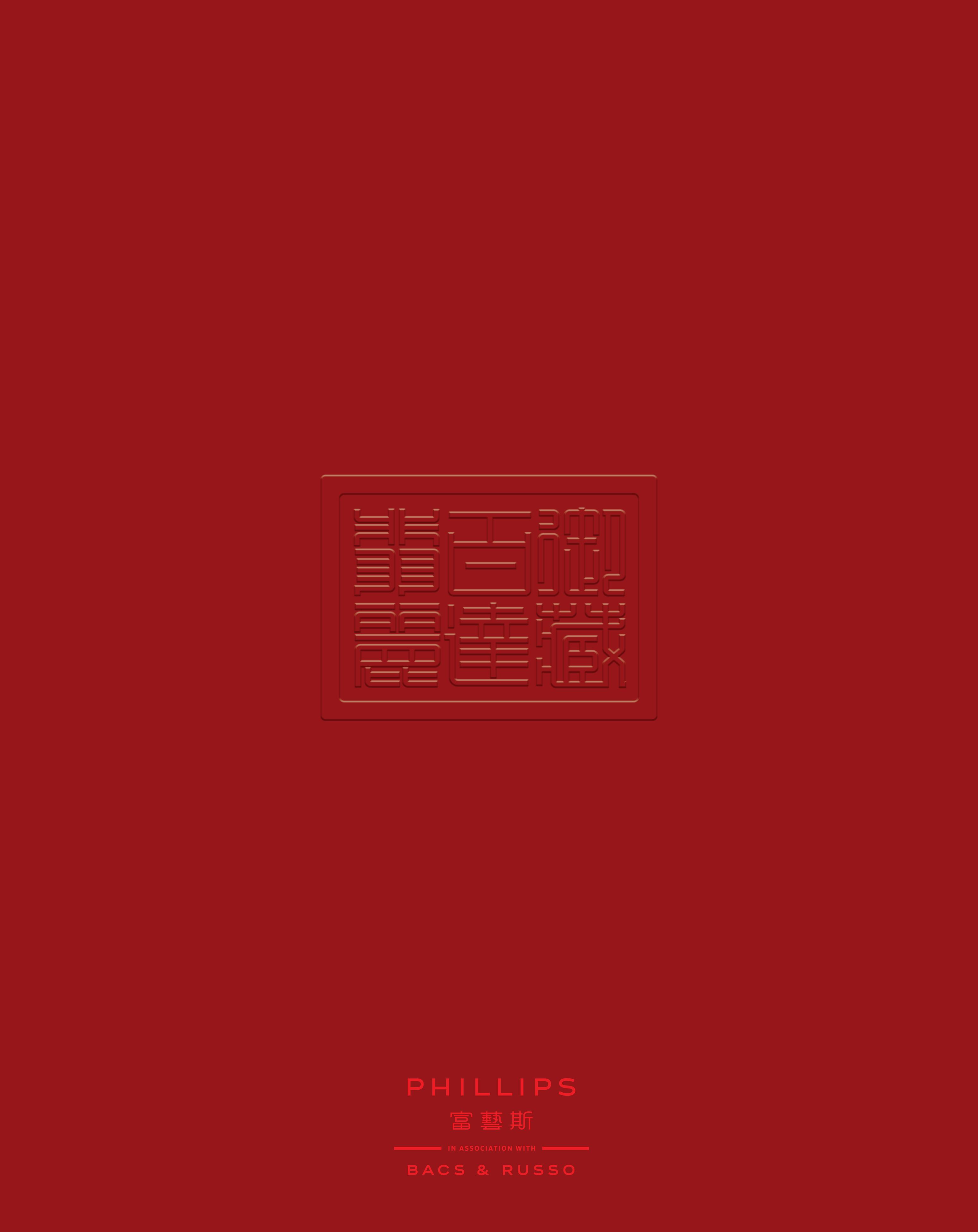































 Puyi in tennis outfit. 溥儀網球照。
© Palace Museum of The Manchurian Regime 偽滿皇宮博物院
Puyi with bicycle in the Forbidden City 溥儀騎自行車。
© Palace Museum of The Manchurian Regime 偽滿皇宮博物院
Puyi in tennis outfit. 溥儀網球照。
© Palace Museum of The Manchurian Regime 偽滿皇宮博物院
Puyi with bicycle in the Forbidden City 溥儀騎自行車。
© Palace Museum of The Manchurian Regime 偽滿皇宮博物院


 Puyi takes a swing on a golf course in Tianjin. 溥儀在天津打高爾夫球。
© Palace Museum of The Manchurian Regime 偽滿皇宮博物院
Puyi and his sisters playing a game of golf in Tianjin. 溥儀和其二妹,三妹等人 在天津打高爾夫球。
Puyi takes a swing on a golf course in Tianjin. 溥儀在天津打高爾夫球。
© Palace Museum of The Manchurian Regime 偽滿皇宮博物院
Puyi and his sisters playing a game of golf in Tianjin. 溥儀和其二妹,三妹等人 在天津打高爾夫球。
 Puyi with Imperial Preceptor Zheng Xiaoxu and Reginald F. Johnston. 溥儀與帝師鄭孝胥和約翰.弗萊明.莊士敦。
© Palace Museum of The Manchurian Regime 偽滿皇宮博物院
Puyi with Imperial Preceptor Zheng Xiaoxu and Reginald F. Johnston. 溥儀與帝師鄭孝胥和約翰.弗萊明.莊士敦。
© Palace Museum of The Manchurian Regime 偽滿皇宮博物院











 Photo Courtesy Rubezh
Photo Courtesy Rubezh





 Yuyan and Li Guoxiong "Big Li" in prison camp. 毓嵒和李國雄(大李)在伯力 收容所。 © Palace Museum of The Manchurian Regime 偽滿皇 宮博物院
[31] Jia Yinghua, Aisin-Gioro Yuyan: A Written Record of Heir Appointment by the Last Emperor, 137
Yuyan and Li Guoxiong "Big Li" in prison camp. 毓嵒和李國雄(大李)在伯力 收容所。 © Palace Museum of The Manchurian Regime 偽滿皇 宮博物院
[31] Jia Yinghua, Aisin-Gioro Yuyan: A Written Record of Heir Appointment by the Last Emperor, 137


























